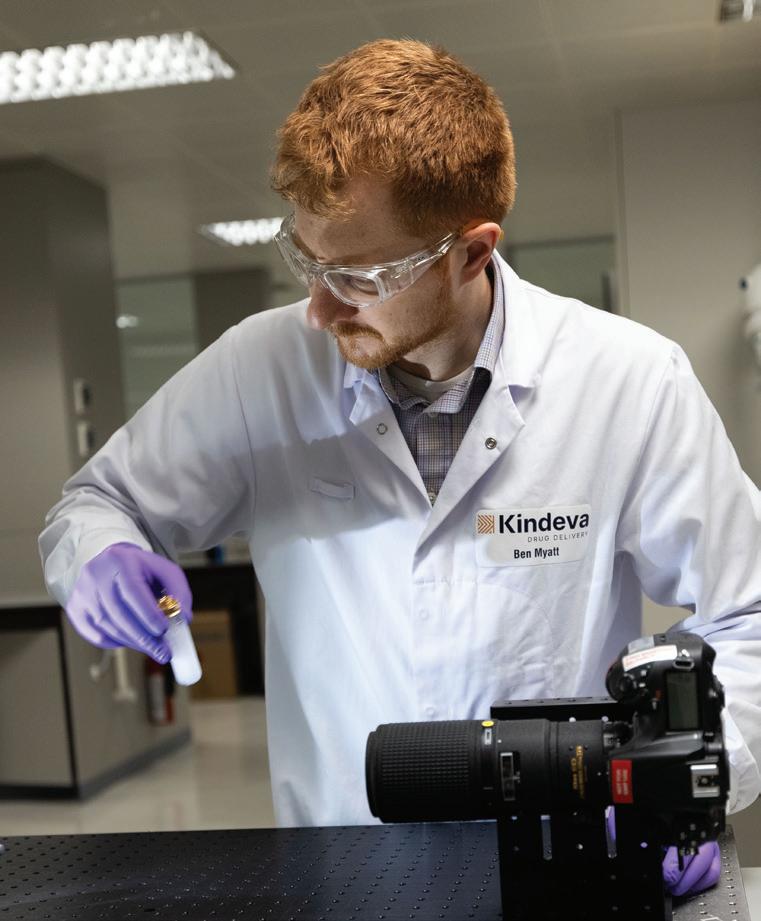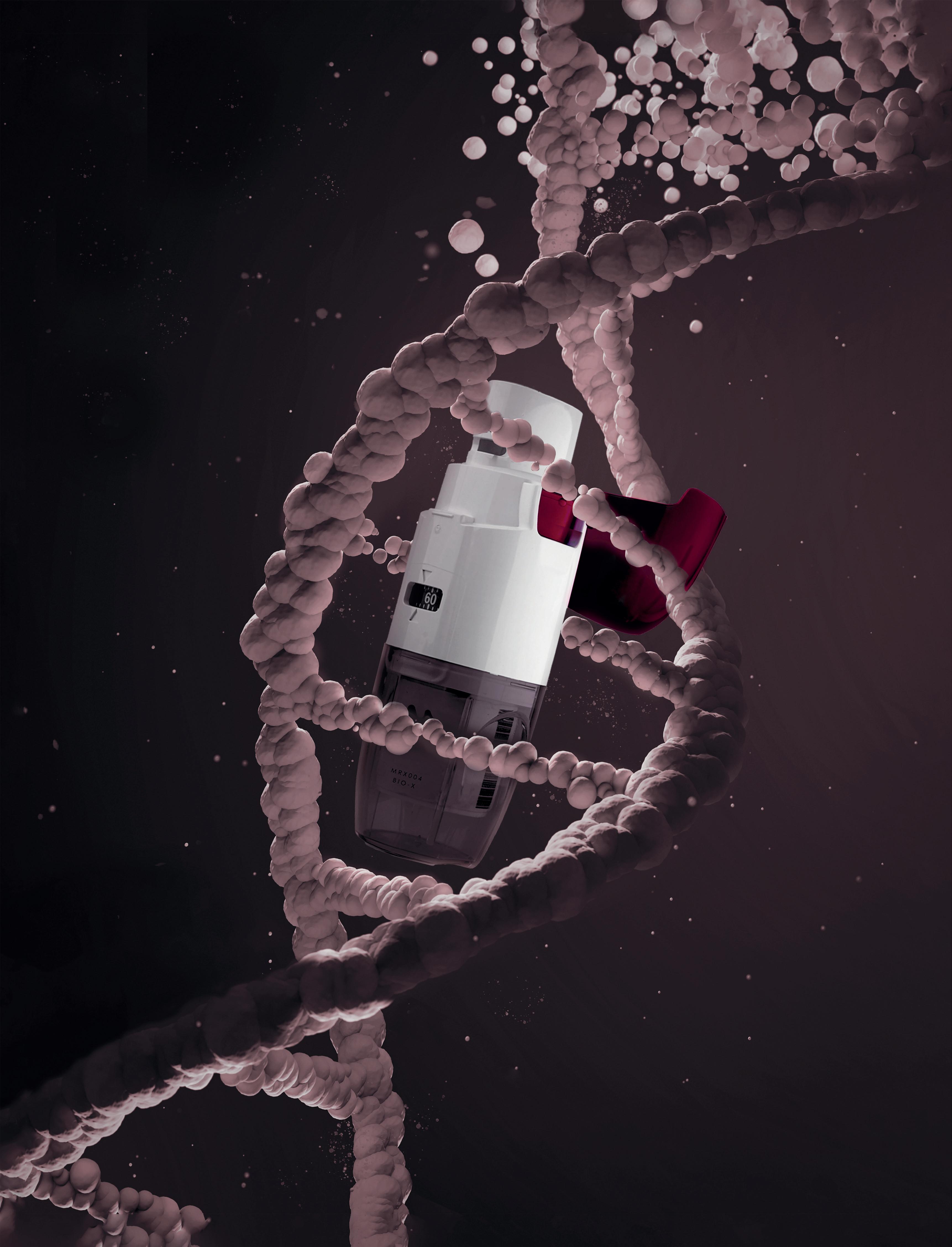IMPROVING AEROSOL DELIVERY: NANOSUSPENSIONS & MESH TECHNOLOGY
ENVIRONMENTAL BENEFITS OF BEDSIDE IONIC NITRIC OXIDE GENERATION

IMPROVING AEROSOL DELIVERY: NANOSUSPENSIONS & MESH TECHNOLOGY
ENVIRONMENTAL BENEFITS OF BEDSIDE IONIC NITRIC OXIDE GENERATION

CASCADE IMPACTOR METRICS: EXPLORING NEW GUIDANCE






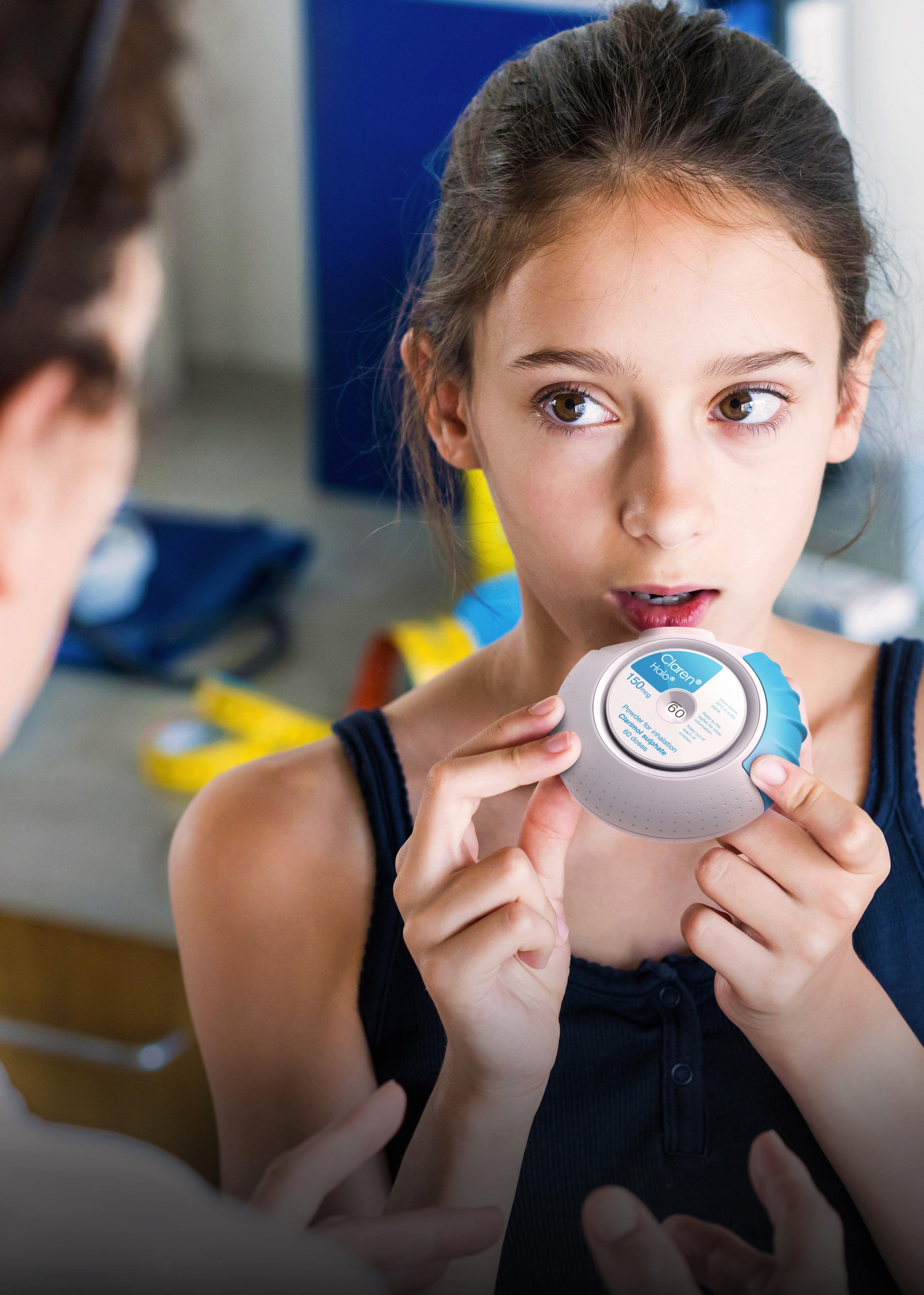
At Sanner Group, we blend agility with capability to deliver exceptional Contract Development and Manufacturing Organization (CDMO) services for pharmaceutical, medtech, biotech, and diagnostic devices. Our integrated approach ensures that your project moves swiftly from concept to market, reducing risks and accelerating time to approval
End-to-End Expertise with Springboard Pro
Our Device Design & Development entity, Springboard Pro, brings together leading experts in advanced science, human factors, robust design, and forensic engineering. Using cutting-edge digital and computer-aided methods, we provide Quality-by-Design developments from the ground up, ensuring your devices are robust, reliable, and innovative.
With state-of-the-art production facilities built to GMP standards and certified under DIN EN ISO 9001, ISO 13485, and ISO 15378, we offer worldwide manufacturing capacity in high-precision injection molding. Our facilities support all phases of production, from clinical builds to short-run production, catering to small and mid-sized projects with unmatched precision and efficiency.
Our advanced prototyping capabilities range from 3D printing and additive-manufactured mold inserts to small batch production, perfectly suited for clinical trials. This allows for rapid iterations and testing, providing flexibility and speed without compromising quality.
Navigating regulatory landscapes can be challenging. Our deep understanding of regulatory requirements across all phases of development ensures your devices meet all necessary standards, minimizing the risk of setbacks and streamlining the approval process.
Seamless
By keeping all capabilities under one roof, Sanner Group eliminates the common inefficiencies and miscommunications associated with multi-vendor collaboration. Our dedicated, fully integrated design transfer teams minimize risks during transfer to manufacturing, enabling a smooth and responsive progression through every stage of development.
From initial design to final production, our robust, manufacturable designs and streamlined processes deliver rapid, cost-effective solutions tailored to your needs. With our close coordination across all phases, we ensure flexibility, quick adaptation to changes, and a faster path from concept to market.
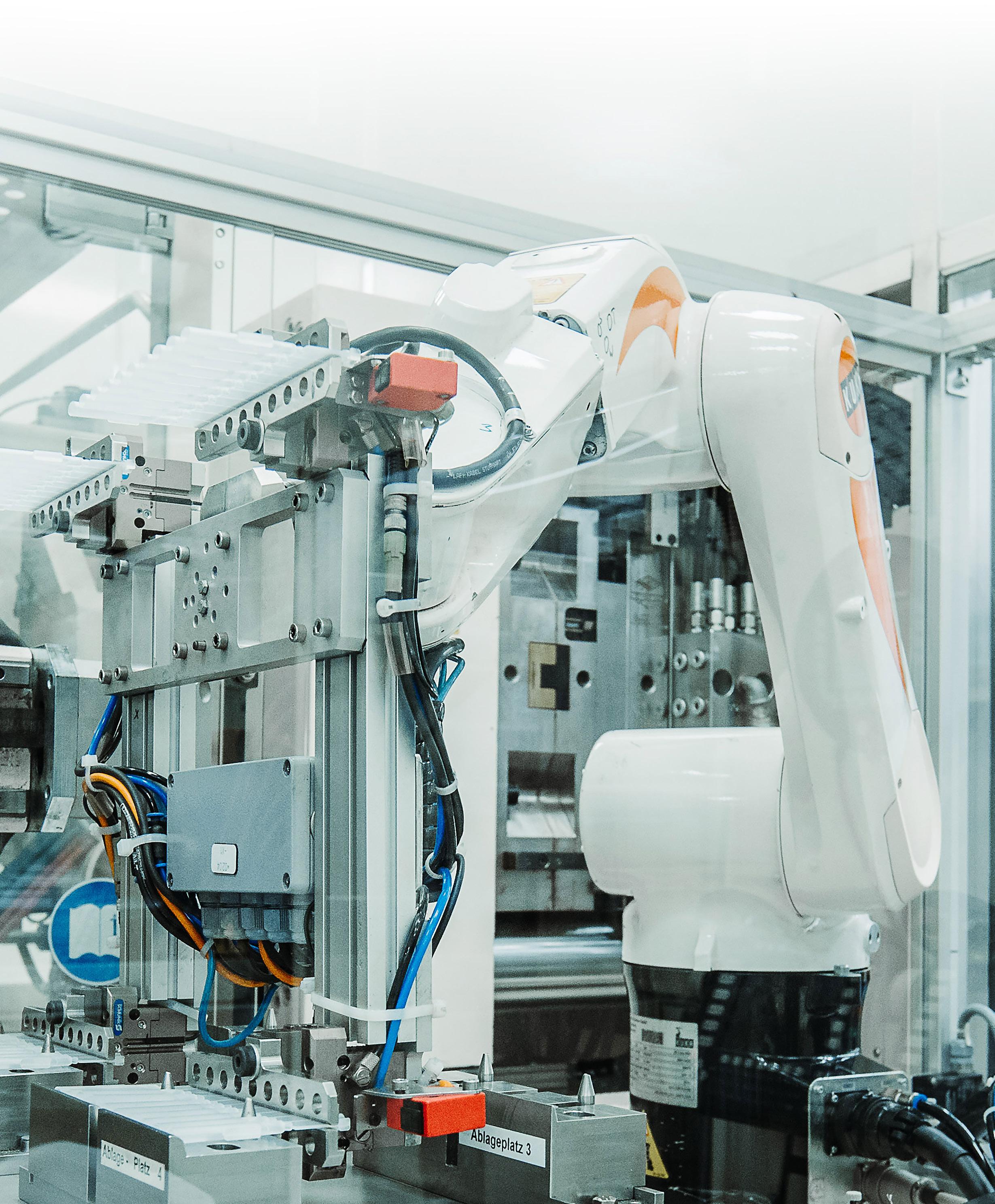

ONdrugDelivery Issue No 167, November 11th, 2024
This edition is one in the ONdrugDelivery series of publications. Each issue focuses on a specific topic within the field of drug delivery, and is supported by industry leaders in that field.
EDITORIAL CALENDAR 2025
Jan Prefilled Syringes & Injection Devices
Feb Skin Drug Delivery: Dermal, Transdermal & Microneedles
Mar Ophthalmic Drug Delivery
Apr Pulmonary & Nasal Drug Delivery
Apr/May Sustainability in Drug Delivery
May Injectable Drug Delivery: Formulations & Devices
May/Jun Oral Drug Delivery
Jun Connectivity in Drug Delivery
Jun/Jul Industrialising Drug Delivery
Sep Wearable Injectors
Sep/Oct Dual Chamber Delivery Systems
Oct Prefilled Syringes & Injection Devices
Oct/Nov Sustainability in Drug Delivery
Nov Pulmonary & Nasal Drug Delivery
Dec Delivering Gene & Cell Therapeutics
EDITORIAL:
James Arnold, Editor
E: james.arnold@ondrugdelivery.com
CREATIVE DESIGN:
Simon Smith, Head of Creative E: simon.smith@ondrugdelivery.com
SUBSCRIPTIONS:
Print + Digital subscription: £99/year + postage
Digital Only subscription: free.
E: subscriptions@ondrugdelivery.com
EVENT PARTNERSHIPS:
Audrey Furness, Marketing
E: audrey.furness@ondrugdelivery.com
ADVERTISING & SPONSORSHIP:
Guy Furness, Publisher
E: guy.furness@ondrugdelivery.com
T: +44 1273 47 28 28
ONdrugDelivery is published by Frederick Furness Publishing Ltd
The Candlemakers, West Street, Lewes East Sussex, BN7 2NZ, United Kingdom
Registered in England: Company No 8348388 ISSN 2049-145X print / ISSN 2049-1468 pdf
Copyright © 2024 Frederick Furness Publishing Ltd

ONdrugDelivery Magazine is printed sustainably by Newman Thomson Ltd, West Sussex, UK, using Forest Stewardship Council® certified recycled paper, vegetable-based inks, biodegradable laminates and carbon balanced materials offset via the World Land Trust™ following ISO140001 processes. ONdrugDelivery in print is sustainably shipped to events by DHL using GoGreen Plus whereby carbon insetting of at least 30% is achieved through the use of Sustainable Aviation Fuel (SAF), a biofuel substitute for traditional jet fuel, produced from renewable sources such as vegetable oils, animal fats, waste products, and agricultural crops. The magazine is mailed to individual readers outside the UK by DHL using GoGreen, which offsets 100% of CO2 emissions.
The views and opinions expressed in this issue are those of the authors. Due care has been used in producing this publication, but the publisher makes no claim that it is free from error. Nor does the publisher accept liability for the consequences of any decision or action taken (or not taken) as a result of any information contained in this publication. The ONdrugDelivery logo is a registered trademark of Frederick Furness Publishing Ltd.
06 - 08
10 - 14
16 - 19
Strategies for Selecting the Right CDMO for Nasal Drug Delivery
Mark Ignaczak, Director of Innovation and Partnerships – Nasal Delivery
Catalent Pharma Solutions
Improving Aerosol Delivery: Nanosuspension and Mesh Technology
Edgar Hernan Cuevas Brun, Business Development Manager & Scientist, Aerosol Drug Delivery
HCmed Innovations
Yuchi Chen, Director, Nanotechnology
Formosa Pharmaceuticals
Breease – Designed to Alleviate Breathing for Infants and Toddlers
Marie-Christine Klein, Head of Development & Regulatory Affairs; and Christian Weyler, Project Manager Development & Regulatory Affairs
URSATEC
Fredrik Bokvist, Chief Operational Officer & Co-Founder
VivoLab
Interview: PureHale® and the Future of Fine Mist Dispensers for Upper Airway Treatments
Julien Storz, Director Business Development, Consumer Health Care; and Giulia Mueller, Product Manager, Consumer Health Care
Aptar Pharma
Innovative Acoustic Nebuliser Technology
Andrea Cusack, Chief Executive Officer;
Elijah Nazarzadeh, Chief Scientific Officer; and John Pritchard, Chairman
Nebu-Flow
Environmental Benefits of Bedside Ionic Nitric Oxide Generation
David Webster, Chief Commercial Officer; and Mark Rimkus, Vice-President Clinical Affairs
Beyond Air
Reformulating pMDIS with Next-Generation Sustainable Propellants
Ross Errington, Head of Drug Product Development; and Simon Gardner, Business Development Director
Bespak
Interview
Alastair Willoughby, Head of Mechanical Engineering
Team Consulting
Trace Analytical Considerations when Reformulating pMDIS with Next-Generation Low-GWP Propellant Systems
Mark Parry, Senior Scientific Director; and John McLaughlin, Principal Scientist
Intertek Melborun
Tino Otte, Managing Director
Intertek (Schweiz)
Cascade Impactor Metrics: Exploring New Guidance on Data Analysis
Clair Brooks, Applications Specialist
Copley Scientific
The pMDI Dilemma: Managing Patient Needs, Health and the Planet Nick Smalley, Vice-President, Regulatory Affairs
Kindeva Drug Delivery
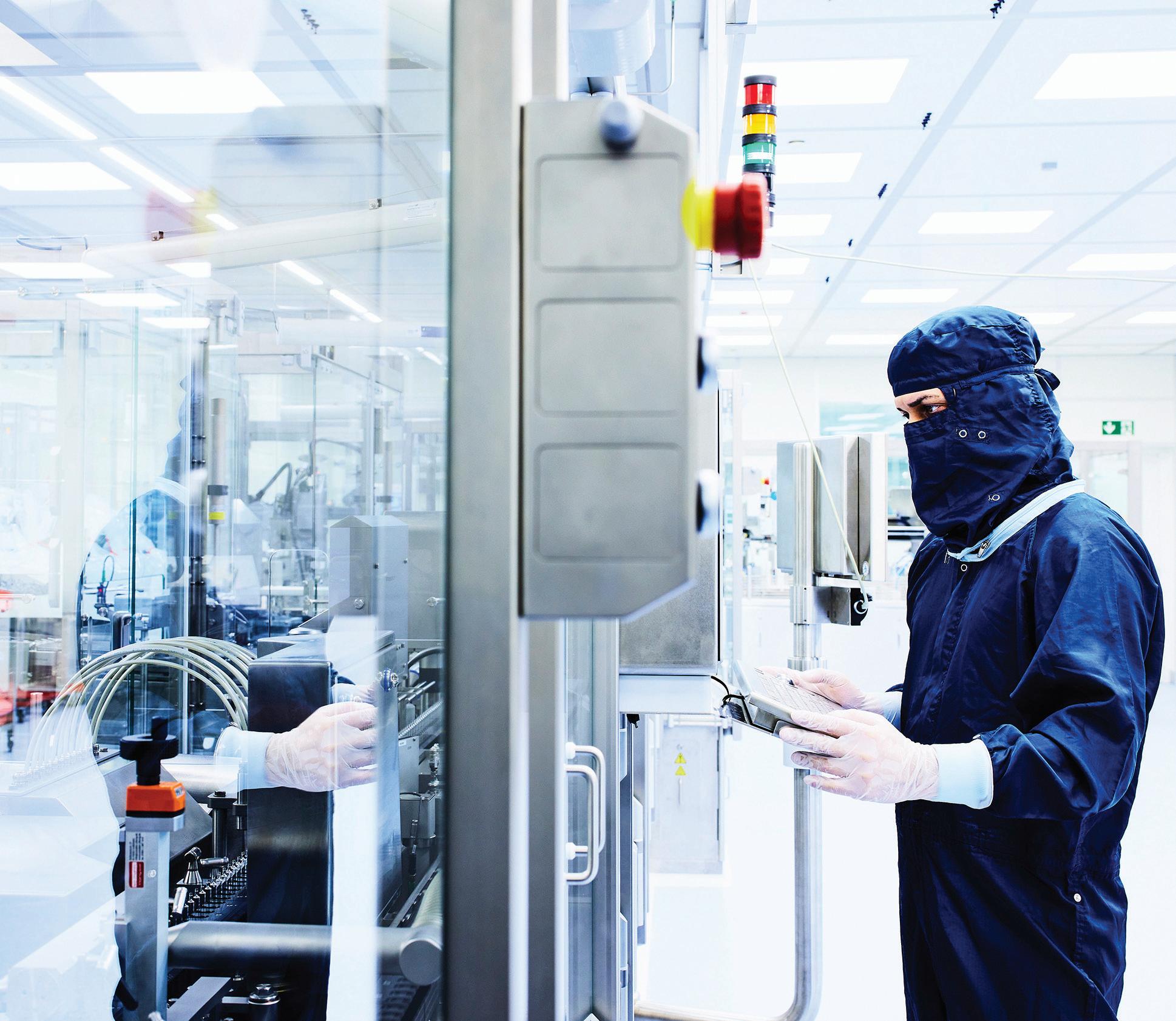

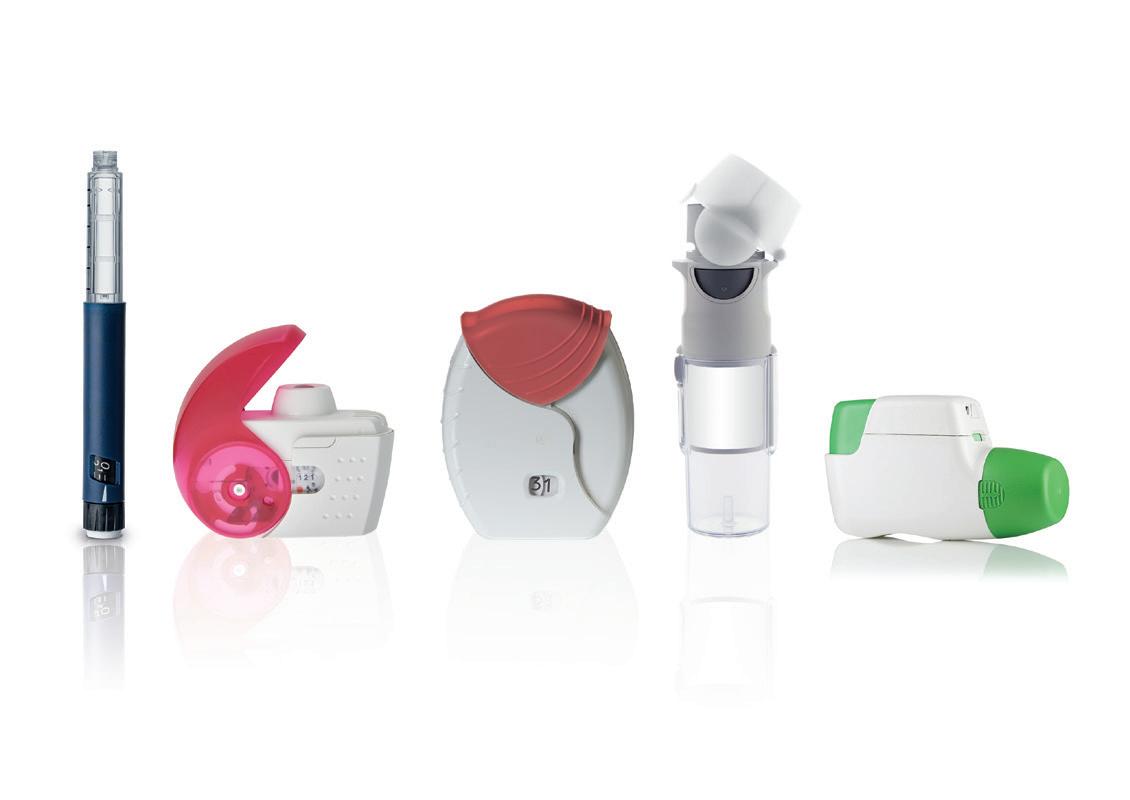
In this article, Mark Ignaczak, Director of Innovation and Partnerships – Nasal Delivery at Catalent, explores the current nasal drug delivery landscape and outlines key considerations for choosing the right contract development and manufacturing organisation to ensure the success of nasal drug projects.
Nasal drug delivery systems have garnered significant attention in recent years, emerging as a versatile and effective method for administering a wide range of therapeutic agents. From treating localised nasal conditions to delivering systemic drugs and vaccines, nasal drug delivery offers numerous advantages, including rapid absorption, non-invasiveness and patient convenience. As the demand for innovative nasal drug products continues to grow, the role of contract development and manufacturing organisations (CDMOs) has become critical in bringing these products to market efficiently and cost effectively. Selecting the right CDMO is vital because the decision directly impacts product quality, supply chain reliability and the overall commercial success of the nasal programme.
The nasal drug delivery market is expanding rapidly, driven by several key factors. Traditionally used for local treatments, such as decongestants and allergy medications, nasal delivery is now being explored for vaccines and systemic therapies, including pain management, anaphylaxis and disorders of the central nervous system (CNS).
One of the many advantages of the nasal route of administration is that it avoids the gastrointestinal tract, circumventing the first-pass metabolism by the liver, which plagues oral dosage forms, and promoting rapid absorption into the bloodstream
“Nasal drug delivery offers a convenient alternative to both oral and injectable routes.”
and rapid effects. Furthermore, intranasal delivery can potentially offer direct access to the brain, bypassing the blood-brain barrier.
The increasing demand for patientfriendly, non-invasive delivery methods is also driving significant interest and growth in this area. Nasal drug delivery offers a convenient alternative to both oral and injectable routes and may be of particular benefit to patients who have difficulty swallowing pills, and those with needle phobias or who simply prefer to avoid injections. Through many device options, intranasal delivery provides patients with an easy-to-use alternative to other dose forms, and a metered dose can be self-administered without medical training, which can also promote adherence to a dosing regimen.
The ongoing development of nasal vaccines, particularly in response to the covid-19 pandemic, has further highlighted the potential of this delivery route. When pondering the worldwide vaccination effort during the pandemic, one must contemplate how an effective, self-administered and stable nasal product could have provided safe, selfadministered, effective and rapid treatment, especially with healthcare systems under pressure to treat those already infected.

Mark Ignaczak Director of Innovation and Partnerships – Nasal Delivery
T: +1 732 228 1963
E: mark.ignaczak@catalent.com
Catalent Pharma Solutions
160 Pharma Drive Morrisville NC 27560
United States
www.catalent.com
Technological advancements have been instrumental in expanding what can be achieved via nasal drug delivery. Innovations in formulation technologies have led to the development of new dosage forms, such as nasal powders, that offer extended stability and increased residence time compared with liquid formulations. Device technology has also evolved, with the introduction of advanced nasal spray pumps and breath-actuated inhalers, which more precisely target drug deposition in the nasal cavity and further enhance the potential of passing the blood-brain barrier.
Many emerging trends have served to promote nasal drug delivery. These include the development of preservative-free formulations, driven by patient preference for products with fewer additives, and highly potent APIs, which allow for lower dose sizes and reduced side effects. Such innovations are extending the boundaries of what can be achieved using the nasal route and offer new therapeutic possibilities for patients and healthcare providers.
Additionally, the success of rescue therapy applications – for example, to counter opioid overdose – has helped position nasal applications as both reliable and easily and consistently delivered in an emergency. The resulting effect has allowed for the expansion of treatment areas and mainstream acceptance of nasal drug delivery.
Navigating the regulatory landscape is one of the most challenging aspects of developing nasal drug products. Regulatory requirements vary across regions, with different agencies imposing specific standards for nasal formulations, devices and packaging. Ensuring compliance with these regulations is critical to avoid delays in product approval and market entry.
In recent years, regulatory agencies have increasingly focused on the safety and efficacy of nasal drug products, particularly around the use of preservatives, device performance
“Navigating the regulatory landscape is one of the most challenging aspects of developing nasal drug products.”
and in vitro testing. Because the device and formulation are classed as combination products, the regulatory landscape becomes more complex – compliance with the appropriate sections of the US FDA’s 21CFR 210 and 211 (drug GMPs) and 21CFR 820 (medical device quality system regulation) depends on the approach the sponsor selects for its overarching quality system. Companies must demonstrate that their nasal drug products meet rigorous quality standards for many aspects of safe and efficacious delivery, including stability and dose consistency. A thorough understanding of these regulatory requirements is essential for successful product development and commercialisation.
The most important factors to consider when selecting a CDMO is its experience and expertise in nasal formulation and device integration. Nasal drug delivery requires specialised knowledge of formulation techniques, such as optimising particle size for nasal powders or ensuring the solubility and stability of APIs in liquid formulations. It is critical that a CDMO not only understands the upfront design of experiments requirements but also how they may directly impact downstream spray characterisation guidelines.
A CDMO with a proven track record in nasal drug development should be able to demonstrate the expertise necessary to address the unique challenges associated with this delivery route. This includes the ability to develop and optimise formulations that are compatible with different device technologies, as well as the experience necessary to enhance drug delivery to the desired areas of the nasal cavity, thus ensuring maximum therapeutic efficacy.
Regulatory compliance is non-negotiable in the pharmaceutical industry, and the stakes are even higher for combination drug products. It is critical to partner with a CDMO that has the expertise to navigate this landscape and quickly identify the critical quality attributes that will affect the process. When selecting a CDMO, it is essential to evaluate its track record in meeting regulatory requirements, inspection
“A CDMO with a strong regulatory track record will have established processes for ensuring that all aspects of nasal drug development, from formulation to device selection, meet the required standards.”
outcomes for the facility and the suitability of its quality management system. This includes its experience with international regulatory submissions, its success in passing regulatory audits and its ability to maintain compliance throughout the product development lifecycle.
A CDMO with a strong regulatory track record will have established processes for ensuring that all aspects of nasal drug development, from formulation to device selection, meet the required standards. This can help minimise the risk of regulatory delays and ensure a smoother path to commercialisation.
Comprehensive analytical services are critical for the successful development of nasal drug products. Analytical testing ensures that products meet all necessary quality attributes, such as those for potency, purity and consistency. Key analytical techniques for nasal drug products include particle-size analysis, spray-pattern testing and droplet-size distribution.
When selecting a CDMO, it is important to assess its analytical capabilities and ensure that it has the necessary equipment and expertise to conduct tests that assess those attributes. A CDMO with strong analytical capabilities can provide valuable insights into formulation and device performance, helping to optimise the product and ensure that it meets all regulatory requirements.
Scalability is another key consideration when selecting a CDMO. The ability to scale up production from small clinical batches to full-scale commercial manufacturing is essential for the successful commercialisation of nasal drug products. This requires a CDMO with flexible manufacturing capabilities able to handle various batch sizes and complexities.
Manufacturing excellence is also critical, as it ensures consistent quality of the product throughout the production process. A CDMO with a strong track record in manufacturing can provide the assurance that the product will be manufactured to the required standards, reducing the risk of production issues and ensuring a reliable supply chain.
Strategic Alignment and Risk Management
Cultural alignment and communication practices are often overlooked but are key to a successful partnership. Catalent has collaborative values and a communication style that helps foster a productive, collaborative relationship. Some key considerations include transparency and accountability, responsiveness, proven programme management capabilities and cultural alignment with the innovator. Additionally, transparency in timelines, costs and potential risks is essential to building trust. Evaluate the CDMO’s responsiveness to queries and its ability to provide solutions when issues arise. Catalent proactively addresses challenges and provides critical thinking to deliver a smooth and efficient programme experience.
Risk management is another critical aspect that must be evaluated. The development of nasal drug products involves inherent risks, such as formulation challenges, device compatibility issues and regulatory hurdles. A CDMO with a proactive approach to risk management can help identify potential issues early in the development process and implement strategies to mitigate these risks, ensuring a smoother path to market.
Emerging Technologies and Innovations
Looking ahead, the nasal drug delivery landscape is poised for continued innovation. Emerging technological trends, such as the increasing use of artificial intelligence (AI) and digital health tools, have the potential to revolutionise nasal drug delivery. AI can be used to optimise formulation development, while digital health tools can enhance the patient experience and adherence, helping to monitor the effectiveness of a drug being delivered in real time.
The regulatory landscape for nasal drug products is also expected to evolve. As new technologies and formulations are developed, regulatory agencies may introduce new guidelines and standards to ensure the safety
“The nasal drug delivery landscape is rapidly evolving, with the advent of new technologies and market demands driving innovation.”
and efficacy of these products. CDMOs will need to stay ahead of these changes and ensure their processes are aligned with the latest regulatory requirements.
Finally, strategic partnerships will continue to play a critical role in driving innovation and market success in the nasal drug delivery space. Collaborating with the right CDMO can provide the expertise and resources needed to navigate the complex landscape of nasal drug development, ensuring the successful commercialisation of innovative new products.
The nasal drug delivery landscape is evolving rapidly, with the advent of new technologies and market demands driving innovation. Selecting the right CDMO is a critical decision that requires holistic evaluation of technical expertise, regulatory compliance, financial stability, customer service and cultural alignment. By defining their needs, thoroughly assessing potential partners and negotiating clear contract terms, innovators can forge a productive, long-term partnership that accelerates their product’s path to market while maintaining standards of quality and compliance. As the industry continues to evolve, the role of CDMOs will become increasingly important in helping companies navigate the complexities of nasal drug delivery.
Catalent is committed to excellence at every stage of inhalation drug development and manufacturing, bringing a deep expertise in navigating the complexities surrounding combination product regulatory pathways. Its client-centric approach ensures clear communication, transparency and flexibility, allowing it to tailor its services to meet its partners’ specific needs while maintaining the highest standards of compliance and quality. Catalent brings innovation, scalability and seamless execution to every project, from formulation and clinical production to commercial manufacturing. With a history of success in regulatory
strategy for combination products, and strategic partnerships with industry leaders, the company is uniquely positioned to deliver comprehensive, multi-tiered support to help its partners achieve their goals. Let Catalent be your CDMO partner that drives your nasal programme from concept towards long-term success.
Catalent is a global leader in enabling pharma, biotech and consumer health partners to optimise product development, launch and full lifecycle supply for patients around the world. With broad and deep scale and expertise in development sciences, delivery technologies and multi-modality manufacturing, Catalent is an industry partner for personalised medicines, consumer health brand extensions and blockbuster drugs. Catalent helps accelerate over 1,500 partner development programmes and launch over 150 new products every year. Its flexible manufacturing platforms at over 50 global sites supply approximately 70 billion unit doses of nearly 8,000 products annually. Catalent’s expert workforce of approximately 17,000 includes more than 3,000 scientists and technicians. The company generated approximately US$4.4 billion (£3.3 billion) in revenue in its 2024 fiscal year.
Mark Ignaczak is Director of Innovation and Partnerships – Nasal Delivery at Catalent, with an extensive background in nasal spray product development and commercialisation. He has 19 years of pharmaceutical experience and over 16 years of direct experience with nasal spray products. In that time, he has worked on over 75 nasal programmes in varying stages within the project lifecycle, ultimately launching more than 10 NDAs – some considered first-of-their-kind, best-inclass therapies. Throughout his career, Mr Ignaczak has fulfilled various roles within bioprocessing engineering, product development, supply chain and all aspects of nasal delivery programme management and strategy. He holds a BS in Biochemical Engineering from Rutgers–New Brunswick (NJ, US).
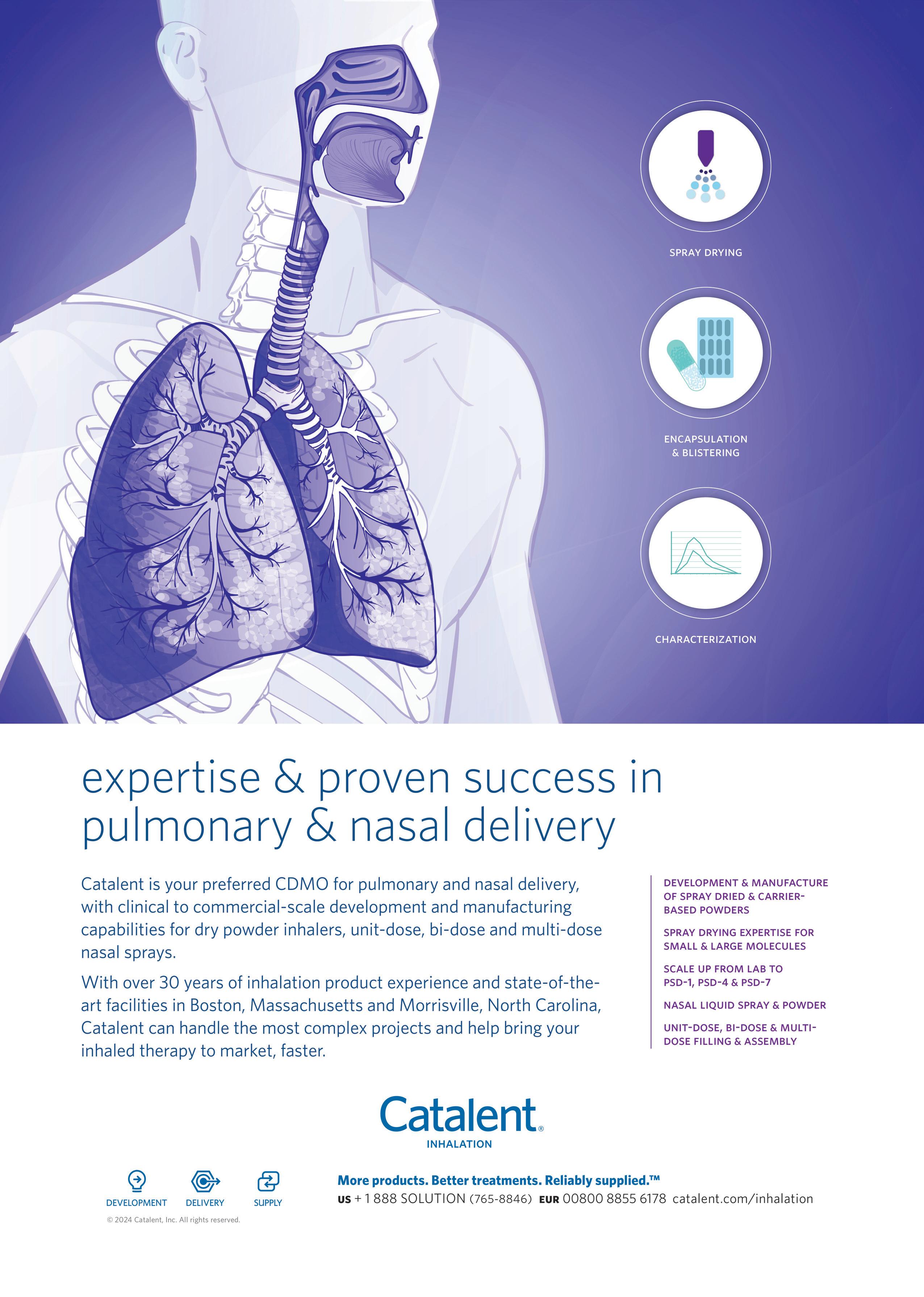

Here, Edgar Hernan Cuevas Brun, Business Development Manager & Scientist, Aerosol Drug Delivery, at HCmed Innovations and Yuchi Chen, PhD, Director, Nanotechnology, at Formosa Pharmaceuticals, discuss how the combination of Formosa’s APNT formulation technology and HCmed’s AdheResp smart breathactuated mesh nebuliser can work together to offer significant benefits to the aerosolisation of difficult solution-based formulations for inhalation.
Aerosolisation of suspension-based formulations with mesh nebulisers has long been reported to be a challenging process due to the intrinsic interaction of the device and formulation. Suspensionbased formulations are characterised by the heterogenous mixture of APIs in aqueous systems, driven by the drug’s low solubility.1 With inhaled formulations, suspensions are commonly micronised, therefore containing drug particles with diameters ranging in the low single-digit microns.
Active mesh nebulisers are delivery systems that turn liquid medications into an aerosol via a mechanism that uses a mesh membrane containing thousands of openings in its surface. This allows the liquid to be pushed through the pores when the membrane oscillates. Commonly, the mesh pore size is below 5 µm, with the
aim of generating droplets that can travel through the respiratory airways and reach the deep lung.
Mesh nebulisers have been proven to be effective when nebulising not only solutions but also biologic formulations due to the mild-to-negligible heat and shear forces generated by the mesh system, especially when compared with ultrasonic and jet nebulisers, respectively. However, for suspensions with APIs that have a diameter close to the mesh pore size and an amorphous shape, drug delivery can be significantly affected. It has been reported that, when assessing the dose of suspension-based formulation delivered with mesh technology, a large amount of the API is retained in the medication container, as the API could not pass through the mesh pores.2
“Mesh nebulisers have been proven to be effective when nebulising not only solutions but also biologic formulations due to the mild-to-negligible heat and shear forces generated by the mesh system.”
Edgar Hernan Cuevas Brun
Business Development Manager & Scientist, Aerosol Drug Delivery
T: +886 2 2732 6596 Ext 126
E: henry@hcmed-inno.com
HCmed Innovations Rm B, 10F
No 319, Dunhua S Rd
Da-an District
Taipei City
Taiwan
www.hcmed-inno.com
Dr Yuchi Chen
Director, Nanotechnology
T: +886 2 2755 7659
E: askachen@formosapharma.com
Formosa Pharmaceuticals Inc 8F-6
No 57, Fuxing N Rd
Songshan District
Taipei City 105
Taiwan
www.formosapharma.com
Nowadays, to resolve the issue related to insoluble or low-solubility APIs, formulation developers can opt for a number of platforms that aim to facilitate the delivery of these drugs in an aqueous environment. Some of the existing approaches are:
• Liposomes : Spherical vesicles composed of a phospholipid bilayer that are capable of encapsulating both hydrophilic and hydrophobic drugs. These are characterised by their high biocompatibility and tuneable drugrelease rates.3
• Polymeric or Inorganic Nanoparticles: Nanoparticles designed to encapsulate drugs by unique surface modification properties. These methods, which may employ materials such as polymers, silicon or gold, allow for imaging, phototherapy, targeted drug delivery, controlled release and protection of the drug from degradation.4
• Solid Lipid Nanoparticles: Nanoparticles made of solid lipids that can encapsulate drugs, offering high physical stability and good biocompatibility.5
• Micro- and Nano-Emulsions: dispersions of oil and water phases into micron- or nanometre-sized droplets, characterised by simple preparation and high stability, that can improve drug solubility.6
• Nanocrystals : Conventional drug particles mechanically milled to a submicron scale, providing simple and scalable production process compared with other nanocarrier systems. The milling uses foreign agents, such as metal and plastic beads, which may result in the issue of media detachment and residue in the final product, thereby presenting a difficult purification process.
Some of these approaches can be used for inhaled suspension-based formulations; however, for platforms that are suitable for producing inhaled formulations, additional


assessment of delivery with mesh nebulisers must be assessed. Physicochemical properties such as viscosity, surface tension and osmolality, which may be associated with the API concentration in the formulation, may also impact the delivery performance and efficiency.
The Active Pharmaceutical (ingredient) Nanoparticle Technology (APNT™) formulation platform, a proprietary and patented formulation platform of Formosa Pharmaceuticals, uses particle size reduction to enhance drug dissolution and bioavailability while minimising contamination risk. As the pharmaceutical industry continually seeks innovative methods to improve drug delivery and efficacy, the APNT formulation technology introduces a significant advancement in the field. By reducing particle size in a novel fashion, APNT enhances the dissolution and bioavailability of poorly soluble APIs while providing a homogeneous and aqueousbased nanosuspension formulation with excellent stability.
APNT uses common salts and sugars as milling media. Following milling, these media can remain part of the final formulation, eliminating the need for the isolation or purification of the API from foreign objects that is often required by
“By reducing particle size in a novel fashion, APNT enhances the dissolution and bioavailability of poorly soluble APIs while providing a homogeneous and aqueous-based nanosuspension formulation with excellent stability.”
other platforms. As a result, the process is streamlined and has a lower risk of contamination. The technology allows for precise tuning of particle size, from low micrometre down to sub-100 nanometre ranges, optimising application and penetration efficiency. The key advantages of APNT are shown in Figure 1.
APNT is versatile and suitable for various administration routes, including oral, inhaled, topical and ophthalmic applications. It has been successfully applied to small-molecule APIs across a wide range of chemical classes and therapeutic indications. This technology has been validated in Formosa Pharmaceuticals’ US FDA-approved clobetasol propionate ophthalmic suspension 0.05% (APP13007), a multidose eye drop for the treatment of postoperative inflammation and pain following ocular surgery.
Advancements in mesh technology, as well as the introduction of innovative features, have placed mesh nebulisers at the front and centre of delivery system options for inhaled combination products. Furthermore, the customisation capabilities offered by mesh nebuliser platforms enable pharmaceutical companies to tailor the drug-nebuliser match to achieve optimised levels of delivery efficiency while also improving usability options.
The smart breath-actuated mesh nebuliser AdheResp® (Figure 2) – designed, developed and manufactured by HCmed Innovations – presents a highly customisable platform that provides solutions to fulfil aerosol performance and usability requirements. The AdheResp nebuliser has been shown to deliver formulations
that range from bronchodilator solutions to inhaled corticosteroids and biologics effectively.7 Some of the platform’s key features that add extra value are:
• Breath Actuation : This significantly enhances drug delivery by only aerosolising during a fraction of the inhalation phase. It also reduces the emission of fugitive aerosols that would otherwise expose bystanders to unwanted aerosol. Consequently, lower amounts of formulation are needed to achieve the same dose than when delivering with continuous output nebulisers, which can be significantly beneficial for high value drugs, such as biologics.
• Bluetooth Connectivity: This enables the transmission of data in real-time or later transmission to a mobile app for distribution via medical clouds. The goal is to facilitate data sharing between patients and medical practitioners to monitor patient adherence and provide treatment guidance.
• Activation System (Lock-and-Key) : The inclusion of an activation system can serve as an option to bond the formulation to a specific device. This feature ensures that the drug is delivered with the intended dose and aerosol characterisation, as the nebuliser is customised to optimise the drugnebuliser performance.
• Guidance Options : Nowadays, appropriate guidance during inhalation is widely considered important for usability feedback. This can take various forms, including visual, tactile and acoustic, as well as making use of the Bluetooth connectivity function.
Nonetheless, when it comes to the delivery of suspensions, platforms such as the AdheResp mesh nebuliser may still be affected by micro-sized particles that cannot easily pass through the mesh pores due to their large and amorphous
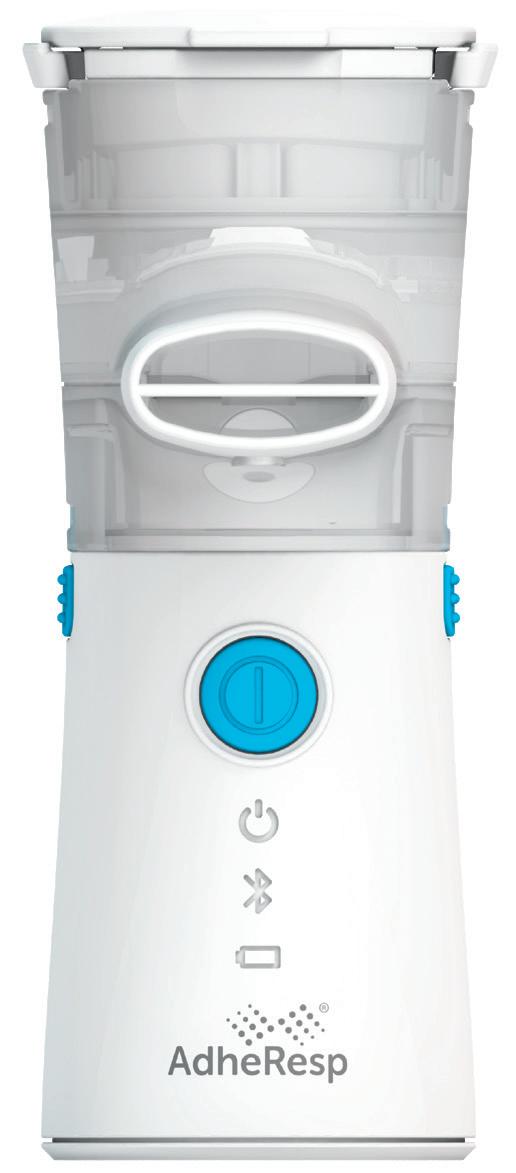
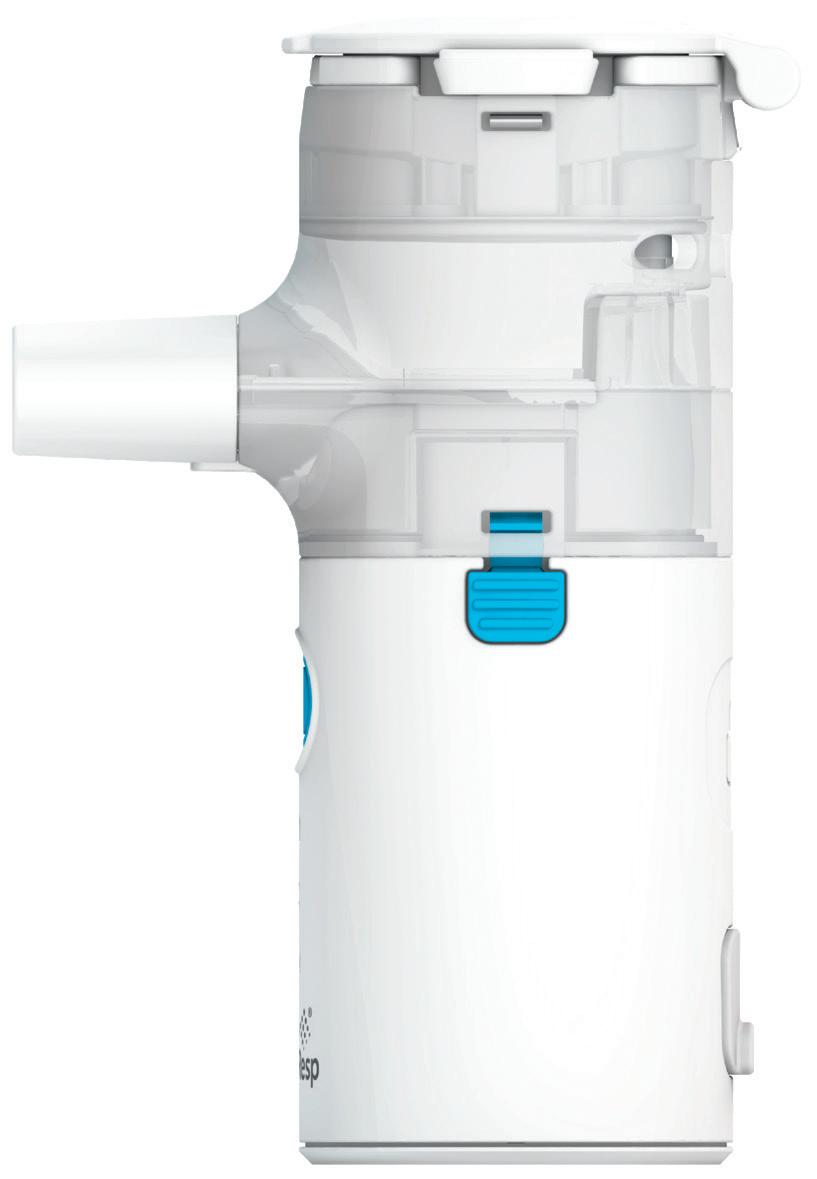
characteristics. For this reason, formulation and device tailoring are equally important to achieve the expected performance. As a result, opting for nanosuspension formulations could be a more suitable approach for delivery via mesh technology.
For a study with the aim of gaining a better understanding of the influence of different suspension particle sizes when delivering with a mesh nebuliser, a well-known macrolide antibiotic was selected as the API (water solubility: 0.33 mg/L). APNT was applied to produce two formulations with particle sizes of D90 <250 nm and <800 nm at concentrations of 3.0 and 2.8 mg/mL, respectively. The AdheResp breath-actuated mesh nebuliser aerosolised the formulation using a modified main unit for higher
driving power and four reservoirs with the same specifications (two reservoirs for each formulation). The decision to select a modified main unit was determined by the physicochemical properties of the formulations in the range of 1.30 cP for viscosity and 43 mN/m for surface tension. These values present a slightly higher viscosity and lower surface tension compared with water.
Aerosol characterisation was conducted using a laser diffraction particle size analyser (Spraytec, Malvern Panalytical, UK), which was connected to a system operating with a pump at 15 L/min. The delivered dose and treatment time were computed by delivering 2 mL of each formulation when using a breath simulator (BRS 200i, Copley Scientific, UK), operating according to the configuration stated in USP <1601> for the adult breathing pattern. High-performance liquid chromatography analysis was performed to quantify the API of the collected samples. All tests with the corresponding reservoirs were conducted in three replicates and the mean values are summarised in Table 1.
The results of the study showed an increase in treatment time and decrease in delivered dose for the D90 <800 nm formulation (Figure 3). There was a significant difference when comparing the delivered dose of the formulations (p <0.05, p = 0.01). These observations could be directly associated with the larger
nanosuspension particle size. With the droplet size distribution, the Dv50 of the D90 <250 nm formulation was slightly larger than the D90 <800 nm formulation, which, in this case, could be an artifact of the higher output rate, which may have led to a higher chance of collision between droplets during aerosolisation. Nonetheless, the delivery of both formulations was close to 70% of the loaded API, showing the efficient performance that resulted from the pairing of a breath-actuated mesh nebuliser and two nanosuspension formulations.
Understanding device–formulation interactions is fundamental for improving delivery performance. Customisation of the device and formulation to create a more suitable pairing can be exemplified in the combination of a breath-actuated mesh nebuliser and nanosuspension formulation, overcoming the previously documented challenges of delivering suspensions with mesh technology.
The capability to enhance drug delivery efficiency and maintain efficacy with lower dosages provides a valuable tool in the development of drug-nebuliser combination products. As shown more specifically in the case study, it was observed that the combination of Formosa Pharmaceuticals’ APNT formulation technology offering a novel approach to drug delivery through particle size reduction with HCmed’s AdheResp smart breath-actuated nebuliser increases delivery of the API by significantly reducing aerosol loss during each

breathing cycle. APNT and the AdheResp platform are powerful options that can provide a significant contribution to the inhalation field when combined. Together, they hold the potential to significantly improve therapeutic outcomes and patient experiences in existing and future therapies.
Founded in 2014, HCmed Innovations is a contract development and manufacturing organisation that provides high-quality and cost-effective vibrating mesh nebuliser technology and services to support global pharmaceutical partners in the development of drug-nebuliser combination products for inhalation therapy. HCmed offers mature, customisable mesh nebuliser platforms to enhance drug delivery. This technology enables efficient and reliable nebulisation of different types of medication, ranging from small-molecule synthetics to large-molecule biologics, as either solutions, suspensions or
even difficult-to-deliver high-viscosity drugs. The company’s latest platform includes the incorporation of breath actuation and connectivity features to enhance drug delivery and monitor patience adherence.
Formosa Pharmaceuticals , founded in 2010 and based in northern Taiwan, is a clinical-stage biotech with assets in ophthalmology and oncology. Formosa’s flagship asset is clobetasol propionate ophthalmic suspension 0.05% (APP13007), which was approved by the FDA in March 2024, and subsequently launched in September 2024, for the treatment of ocular inflammation and pain following ocular surgery. This novel topical corticosteroid formulation was developed using Formosa’s proprietary APNT formulation technology, which operates on the principle of API particle size reduction using generally recognised as safe (GRAS) reagents to yield homogeneous and stable aqueous formulations.

1. Pinar SG et al, “Formulation Strategies of Nanosuspensions for Various Administration Routes”. Pharmaceutics, 2023, Vol 15(5), article 1520.
2. Elphick M et al, “Factors to consider when selecting a nebulizer for a new inhaled drug product development program”. Expert Opin Drug Deliv, 2015, Vol 12(8), pp 1375–1387.
3. Gregoriadis G, “Engineering liposomes for drug delivery: progress and problems”. Trends Biotechnol, 1995, Vol 13(12), pp 527–537.
4. Croy SR, Kwon GS, “Polymeric micelles for drug delivery”. Curr Pharm Des, 2006, Vol 12(36), pp 4669–4684.
5. Müller RH, Mäder, Gohla S, “Solid lipid nanoparticles (SLN) for controlled drug delivery –a review of the state of the art”. Eur J Pharm Biopharm, 2000, Vol 50(1), pp 161–177.
6. Jafari SM, McClements DJ, “Nanoemulsions: Formulation, Applications, and Characterization”. Academic Press, 2018, pp 3–46, 104–346, 415–433.
7. Cuevas Brun EH et al, “Aerosol


Edgar Hernan Cuevas Brun is Business Development Manager at HCmed Innovations. He has worked in the drug delivery field since 2012 and holds a BS in Biomedical Engineering from National Tsing Hua University (Taiwan) and a Master’s in Business Administration. He is responsible for expanding and co-ordinating the establishment of new partnerships with global pharmaceutical companies, while also supporting the development of drug-nebuliser combination products. Furthermore, he is involved in the development of connected devices, assisting in the company’s programmes and establishing alliances with new partners to expand into digital health.
Yuchi Chen, PhD, has nearly 20 years’ industry and academia experience in food and cosmetic science. Prior to joining Formosa Pharmaceuticals, he was a Professor at Vanung University in Taoyuan, Taiwan, where he served as the Vice-Chairman. Dr Chen’s educational training includes a postdoctoral appointment at the National Health Research Institutes of Taiwan, and a PhD in Food and Nutritional Sciences at the University of Shizuoka, Japan. Dr Chen leads the Nanotechnology R&D division of Formosa Pharmaceuticals, developing APP13007 and APP13002, as well as directing new research to expand the scope of the APNT formulation platform.
Delivery Performance of Interferon Beta-1b with a Continuous Output Mode Mesh Nebulizer and a
Breath-Actuated Mesh Nebulizer”. Resp Drug Deliv, 2022, Vol 2022, pp 235–240.
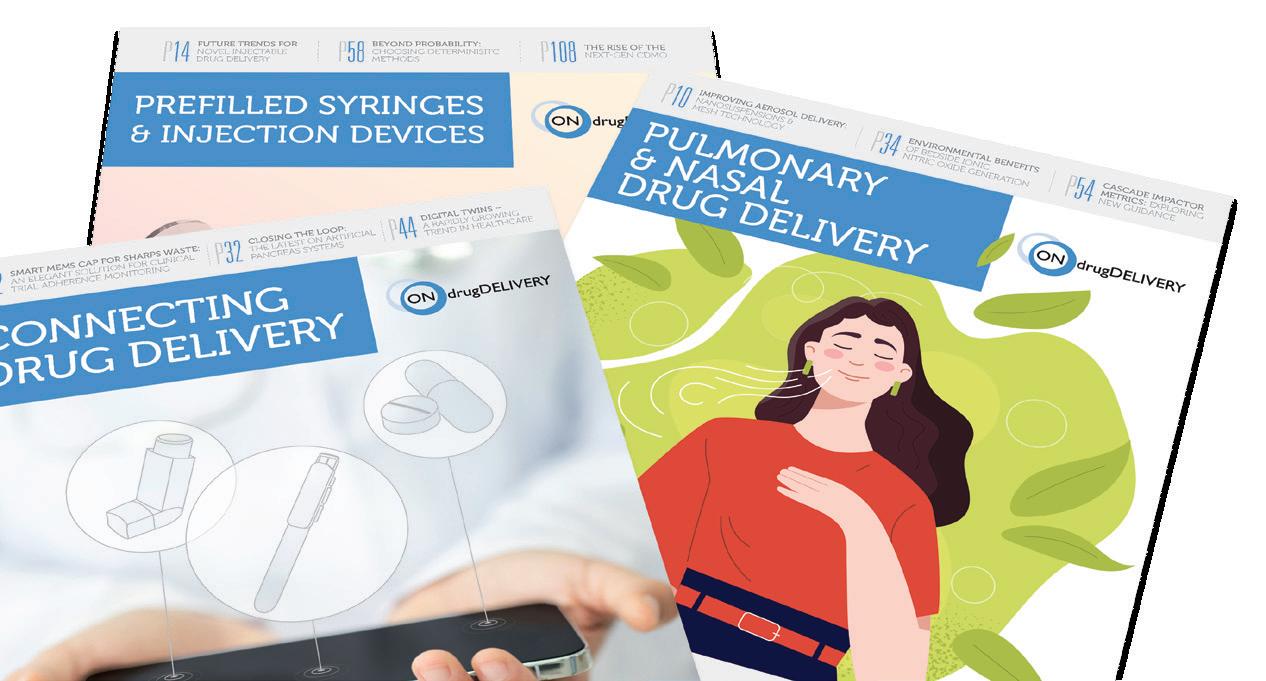
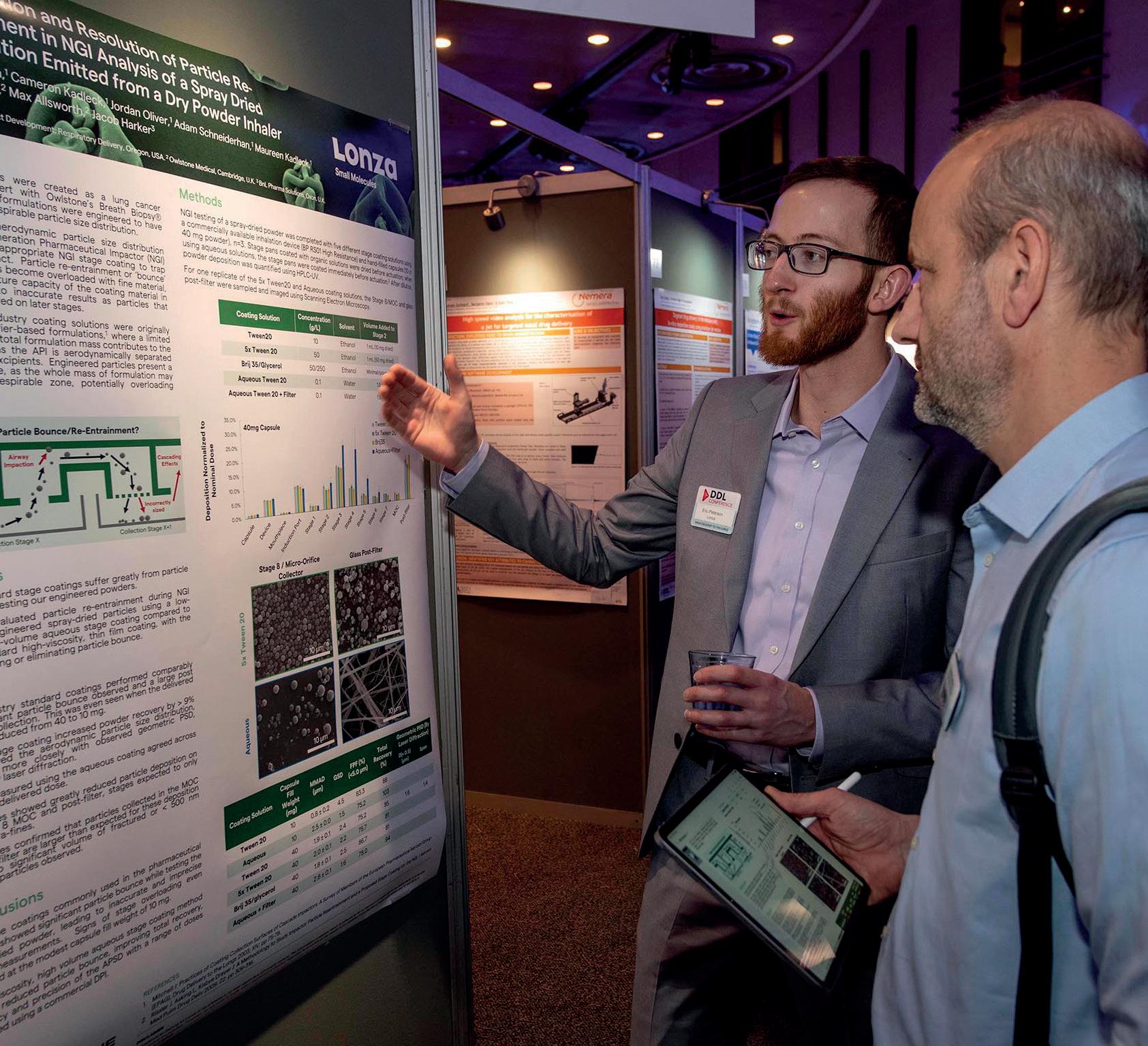

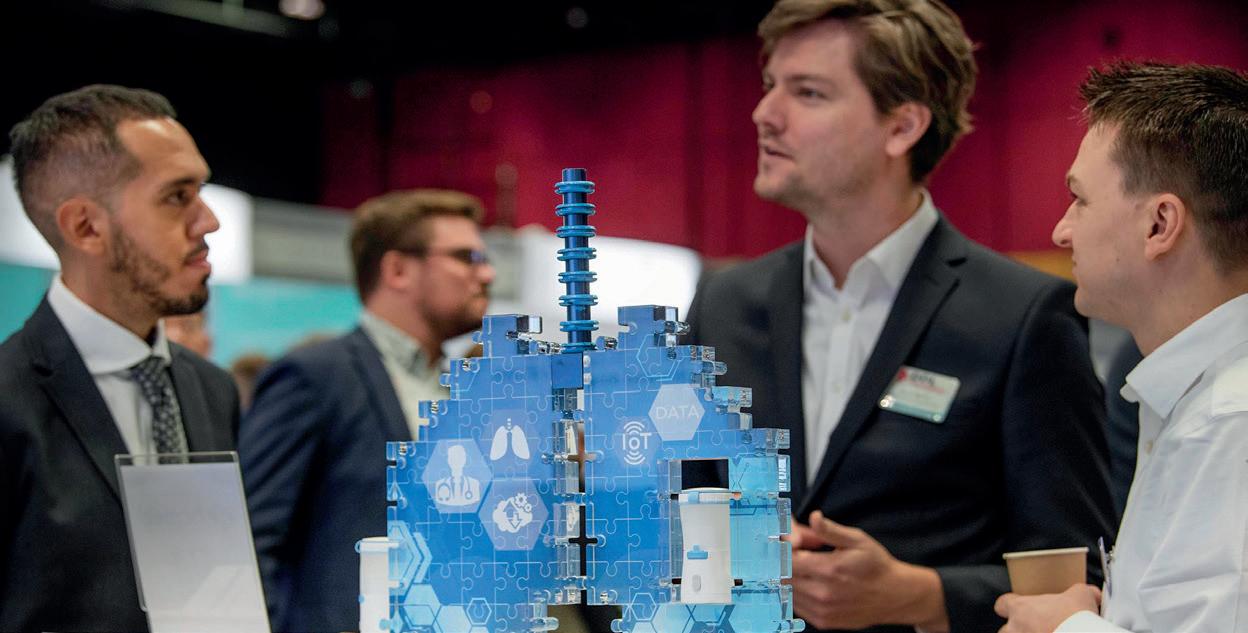
The Premier International Pulmonary and Drug Delivery Conference 11/12/13th December 2024
Edinburgh International Conference Centre or virtual
The DDL Conference is in its 35th year and attracts in excess of 1000 attendees worldwide. The conference includes a large industry exhibition, supported by over 100 international companies, a scientific poster hall, expert lectures and excellent networking opportunities over the 3-day event.
Anniversary Gala Dinner
A complimentary dinner and evening entertainment for all attendees held at the National Museum of Scotland.


In this article, Marie-Christine Klein, PhD, Head of Development & Regulatory Affairs and Christian Weyler, PhD, Project Manager Development & Regulatory Affairs, both at URSATEC, and Dr Fredrik Bokvist, Chief Operational Officer & Co-Founder at VivoLab, discuss the effects of air pollution on health – and how the Breease pacifier could help babies and young children.
Air pollution is one of the most substantial threats to human health caused by our environment. Almost all the global population (99% in 2019) is living in areas that do not meet the air quality guidelines for ambient air set by the WHO. There is a large gap between the improved air quality in high-income countries since the 1990s and negative changes in low- and middle-income countries as a consequence of economic development and increased infrastructure. The facts and figures speak for themselves: air pollution causes 6.7 million premature deaths every year. In 2019, 317,000 deaths of children under five years of age could be attributed to ambient and household air pollution, according to the WHO – again, particularly in middle- and low-income countries.
The underlying mechanisms of how air pollution is threatening human health are multilayered. Deleterious effects on health caused by air pollution are being ascribed to so-called noncommunicable diseases (NCDs). These are diseases that are noninfectious and go hand in hand with the everyday-life adaptations of the modern world in terms of nutrition, ageing and overconsumption of food, alcohol and tobacco. Moreover, the level of education and access to health management measures are factors that contribute to the health threats derived from NCDs. These are mainly cardiovascular, neurological and
respiratory diseases. To gain deeper insight into the mechanistic effect of how air pollution acts on different aspects of the human physiology that lead to diseases, it is useful to first take a closer look at what the indicators are for air pollution.
Particulate matter (PM) is an important indicator and measurable parameter for air pollution. It refers to a mixture of different particles of different sizes originating from different sources. Major components are sulfates, nitrates, ammonia, black carbon and mineral dust. PM is categorised by its aerodynamic diameter. The largest particles, between 2.5 and 10 µm – known as PM10 – are ascribed to pollen, sea spray and wind-blown dust from erosion, agricultural spaces and roadway and mining operations.1 Smaller particles can originate either from primary sources (e.g. combustion of power fuels) or secondary sources (e.g. chemical reaction between gases).1
PM has been studied extensively since the WHO issued air quality guidelines in 2005 that accelerated global efforts to protect populations from the risk caused by air pollution. Since then, a lot of evidence has been generated on the negative impact that these inhalable PMs have on the human body. They can penetrate into the deep lungs and reach the bloodstream and, as a consequence, trigger development of cardiovascular,
Dr Marie-Christine Klein Head of Development & Regulatory Affairs
T: +49 6853 96199 0 E: klein@ursatec.com
Dr Christian Weyler Project Manager Development & Regulatory Affairs T: +49 6853 96199 0 E: weyler@ursatec.com
URSATEC GmbH Marpinger Weg 4 66636 Tholey Germany
www.ursatec.com
Dr Fredrik Bokvist Chief Operational Officer & Co-Founder T: +46 70 9906444 E: fredrik@vivolab.se
VivoLab AB Främbyvägen 36 79152 Falun Sweden
www.vivolab.se
cerebrovascular and respiratory pathologies.1 To complete the picture, not only particles and droplets but also gases such as carbon monoxide, ozone, nitrogen dioxide and sulfur dioxide contribute to air pollution.
“Most recent estimates suggest that 50% of the total attributable risk of COPD may be related to air pollution.”
Environmental exposure has a huge detrimental effect on human health. Environmental exposure is not solely a phenomenon of outdoor (ambient) pollution. Indoor pollution plays a significant role when discussing the impact of air pollution, which is especially aggravated in households with no access to clean fuel and technologies for cooking. While the proportion is steadily shrinking, a quarter of the global population is still heavily affected by this impact on indoor air pollution. Even if using clean fuel, the importance of indoor air quality should not be underestimated. Nowadays, people in the western world spend as much as 80% of their time indoors – and indoor air is affected by outdoor ventilation, various allergens, smoking, heating and cooking.2
One example of intertwined dependencies that are not always obvious is tobacco smoke – an exogenous pollutant to the respiratory tract. First of all, cigarettes themselves may introduce bacteria and fungi that can be pathogenic or alter the physiological microbiome of the respiratory tract. Next, the mucus production in the airways is upregulated, which impairs mucociliary clearance, and low-grade inflammation events occur that have detrimental effects and lead to predisposition to respiratory diseases.
This pathomechanism is also thought to hold true for asthma and bronchiectasis. Therefore, it is not surprising that exposure to air pollution is a major contributor to the pathogenesis of chronic obstructive pulmonary disease (COPD) worldwide. Indeed, most recent estimates suggest that 50% of the total attributable risk of COPD may be related to air pollution.3 What is more, the detrimental effects on health are not limited to respiratory-tractassociated pathologies. Cardiovascular diseases in ageing, diabetes, reproductive outcomes and several neurocognitive end points have also been associated with air pollution.1
Looking at the literature on air pollution and its effects on human health, it becomes evident that children are more susceptible to the health effects of air pollution than adults. There are various reasons for this. Children have an immature immune and respiratory system, breathe more rapidly and they inhale a larger air volume per kilogram of body weight compared with adults, which explains their vulnerability to air pollution. Moreover, they are closer to the ground, which means pollutants that reach peak concentrations closer to the ground are more likely to have an effect. And susceptibility to polluted air starts even earlier –when pregnant women are exposed to polluted air, premature-birth and low-weight babies become more likely.
A broad data basis is evidence for the connection between air pollution exposure and adverse effects on children’s lung growth and lung function, sometimes in an irreversible manner.4 Even when only
taking a closer look at the PM2.5 fraction (particles smaller than 2.5 µm) of air pollutants, a broad variety of phenotypes are reported. Among these are higher prevalences of cognitive decline and behavioural issues, such as attention deficit hyperactivity disorder (ADHD), and a variety of chronic respiratory conditions, including bronchitis and the development of asthma and COPD. Particularly robust in various studies is the connection of childhood asthma with both passive smoking and exposure to traffic-related pollution.2
Managing air pollution and reducing exposure, not only but particularly for vulnerable patient groups, is key and a driver for guidelines such as the aforementioned air quality guidelines from the WHO. It is clear that managing air pollution on a population level requires high-level policy adaptations through implementation of adequate legislation, as has proved successful in the past. Transitioning away from burning coal in many regions of Europe and the US, for example, has resulted in declining outdoor air pollution from PM. In a similar vein, there is evidence that long-term reductions in PM2.5 improve life expectancy and overall health.5
Nevertheless, a different trend concerning the load of air pollution was observed between 1988 and 2016 as a result of increasing wildfires in the US and Canada.4 This example shows that new impacts derived from climate change require new strategies in the future. That is why air pollution as a public health threat is addressed in the UN Sustainable Development Goals.
Since whole populations can only be reached by improvements in air pollution in a systematic manner, it is necessary to also consider measures that may improve exposure on an individual level with beneficial effects. Substantial evidence is available that high-efficiency particulate air filter purifiers reduce indoor PM2.5 concentrations and improve subclinical cardiopulmonary health indicators.6 Even small reductions of the PM2.5 fraction have a significant effect on the health outcome and predisposition for various pathologies. These examples show that one reasonable measure for individual efforts against air pollution is focusing on PM2.5 reduction for the paediatric patient group.

Figure 1: Breease –a combination of filtration efficiency and breathability.
“Breease contains a high-capacity PM2.5 filter that can be disassembled from the pacifier itself and exchanged on a regular basis with a new filtration unit.”
The Swedish company VivoLab followed that line of evidence and developed a lowairflow-resistance children’s pacifier called Breease, which incorporates a pollution filter. This device could potentially be part of the efforts to reduce children’s exposure to harmful airborne particles (Figure 1). The pacifier facilitates air filtration by breathing through the device. It is designed to have a lower resistance of airflow through the pacifier than through the nose. Breathing patterns reveal that most infants breathe through their mouth and nose and are not strong nose breathers.7 In the case of a congested nose, babies will resort to 100% mouth breathing, which is facilitated by the Breease pacifier.
Breease contains a high-capacity PM2.5 filter that can be disassembled from the pacifier itself and exchanged on a regular basis with a new filtration unit. The filter is an electrostatic filter media traditionally used in critical care applications, such as medical ventilators, spirometry and respirators. Breease and miniBreease fulfil the European soothers standard EN 1400 in all applicable parts. In order to adjust to the anatomical situations of newborns and small children, the body and teat of Breease comes in two different sizes, with miniBreease intended to be used from 0 to 9 months and Breease from 9 to 36 months. This invention could be a beneficial hands-on solution for this very vulnerable patient group.
As discussed above, exposure settings can vary and, particularly when it come to indoor pollution environments, underestimated. The significance of individual, easy, hands-on measures to lower the effects of exposure for children becomes obvious.
Having in mind that one solution could be the answer for different challenges, VivoLab and URSATEC are working on a product combination for supportive treatment of respiratory tract infections and the symptoms of dry air settings for children. The idea is to combine the moisturising salt solutions of a non-pressurised, user-friendly and soft-mist-generating pocket inhaler (Softbreezer) and the pacifier Breease (Figure 2). The liquid in the Softbreezer is dispersed into droplets by mechanically pressing the liquid through a microchip with pores, producing a very consistent droplet size distribution and delivery rate. The metered dose inhaler thereby generates a soft mist that is easily inhalable during normal tidal breathing. By adapting the Softbreezer to the Breease pacifier, the known usability profile of the pacifier can be of great advantage and engage children in moisturising therapy without the need for a treatment scenario they are not familiar with.
“The idea is to combine the moisturising salt solutions of a non-pressurised, user-friendly and soft-mist-generating pocket inhaler (Softbreezer) and the pacifier Breease.”
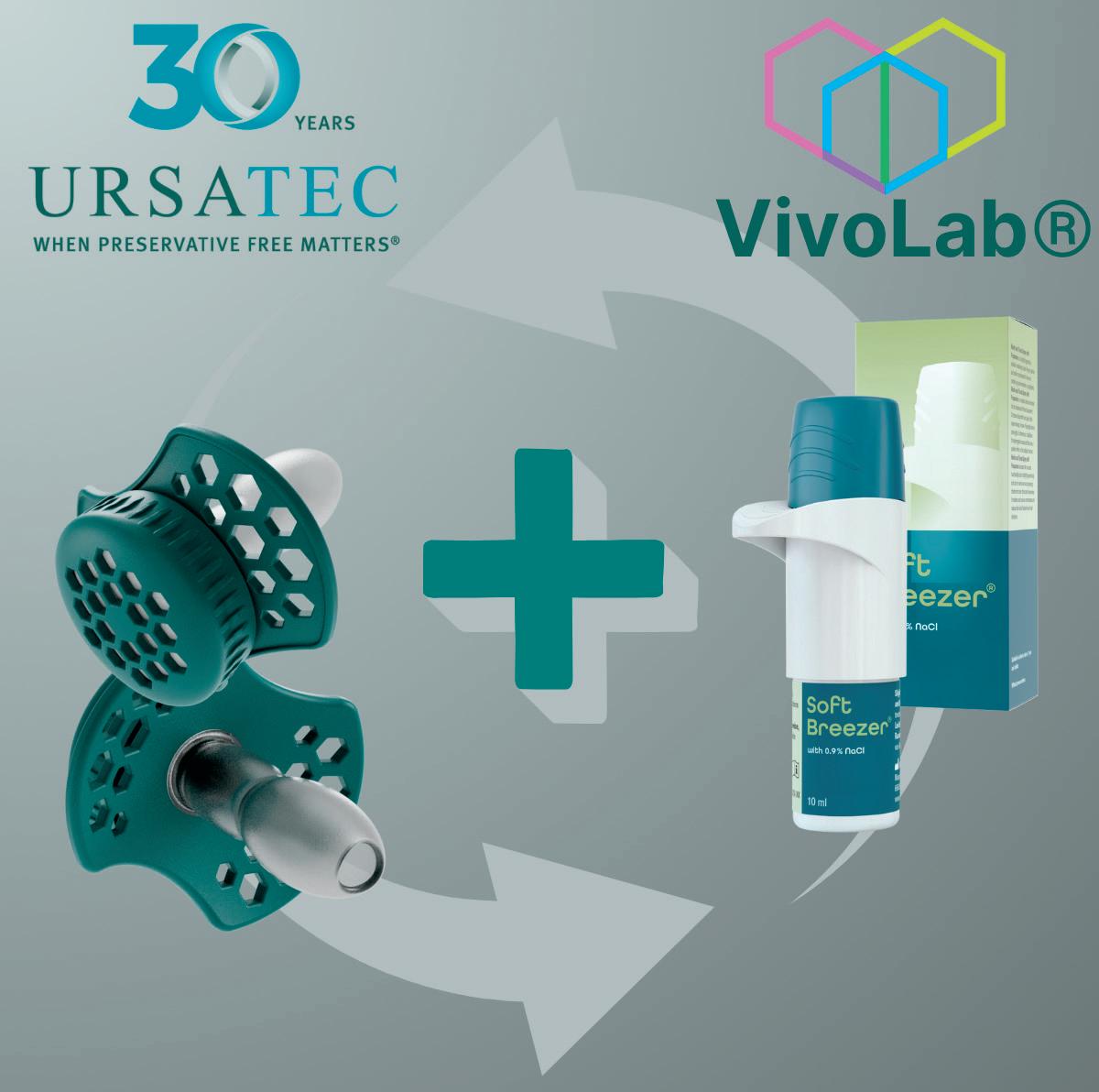
Even though concepts of air pollution reduction are developed, and a specific resolution was endorsed by 194 WHO member states in 20151 to ease the load on a population level, there is still a huge gap between high- and middle-to-low-income countries. Moreover, climate change has added a new layer of severity to ambient and household pollution – for example, in the form of wildfires or the prevalence of pollen grains and fungal spores –which impacts respiratory health. The desire for individual measures to protect the most vulnerable groups in particular is growing. As such, emphasis should be put on cost-effective and simple protective measures for individual intervention.
URSATEC was founded in 1993 to accomplish one mission: the establishment of preservative-free applications, based on its proprietary packaging systems in different application areas, primarily the nasal, dermal, buccal and otological fields. Having sold almost 2 billion units within the last 25 years, URSATEC systems are widely established. URSATEC is consistently expanding its business and offers full development service, dosage systems, primary packaging materials and filling services for over the counter and Rx applications to the healthcare industry.
VivoLab, founded in 2018 by Swedish doctors, is a medtech start-up focused on improving children’s health through innovative, affordable solutions. With multiple patents for its groundbreaking products, VivoLab is at the forefront of paediatric healthcare technology. Its mission is to provide accessible, high-quality medical care for children globally, ensuring that economic barriers do not limit access to life-saving treatments. Based in the AstraZeneca BioVentureHub in Mölndal, Sweden, VivoLab thrives in a collaborative environment, working with experts to develop cutting-edge technologies that make a real difference to the lives of children and their families.
1. “WHO global air quality guidelines. Particulate matter (PM2.5 and PM10), ozone, nitrogen dioxide, sulfur dioxide and carbon monoxide”. Guideline, WHO, Sep 22, 2021.
2. Eguiluz-Gracia I et al, “The need for clean air: The way air pollution and climate change affect allergic rhinitis and asthma”. Allergy, 2020, Vol 75, pp 2170–2184.
3. Sin DD et al, “Air pollution and COPD: GOLD 2023 committee report”. Eur Respir J, 2023, Vol 61(5), article 2202469.
4. Garcia E, Rice MB, Gold DR, “Air pollution and lung function in children”. J Allergy Clin Immuno, 2021, Vol 148(1), pp 1–14.
5. Pope CA, Ezzati M, Dockery DW, “Fine-particulate air pollution and life expectancy in the United States”. N Engl J Med, 2009, Vol 360(4), pp 376–386.
6. Allen RW, Barn P, “Individual- and Household-Level Interventions to Reduce Air Pollution Exposures and Health Risks: a Review of the Recent Literature”. Curr Environ Health Rep, 2020, Vol 7(4), pp 424–440.
7. Rodenstein DO, Perlmutter N, Stănescu DC, “Infants are not obligatory nasal breathers”. Am Rev Respir Dis, 1985, Vol 131(3), pp 343–347.



Marie-Christine Klein, PhD, is a biologist by training and joined URSATEC in 2019. She leads the development and regulatory affairs team that is focusing on innovative developments in combination with the URSATEC application technology.
Christian Weyler, PhD, joined URSATEC at the beginning of 2024, with a PhD in Chemistry. As part of the Development & Regulatory Affairs team, he brings experience in project management to realise customer projects dealing with challenges during all phases of developments.
Fredrik Bokvist, PhD, Chief Operational Officer & Co-Founder at VivoLab, is an intensive-care physician who loves gadgets and technical development.
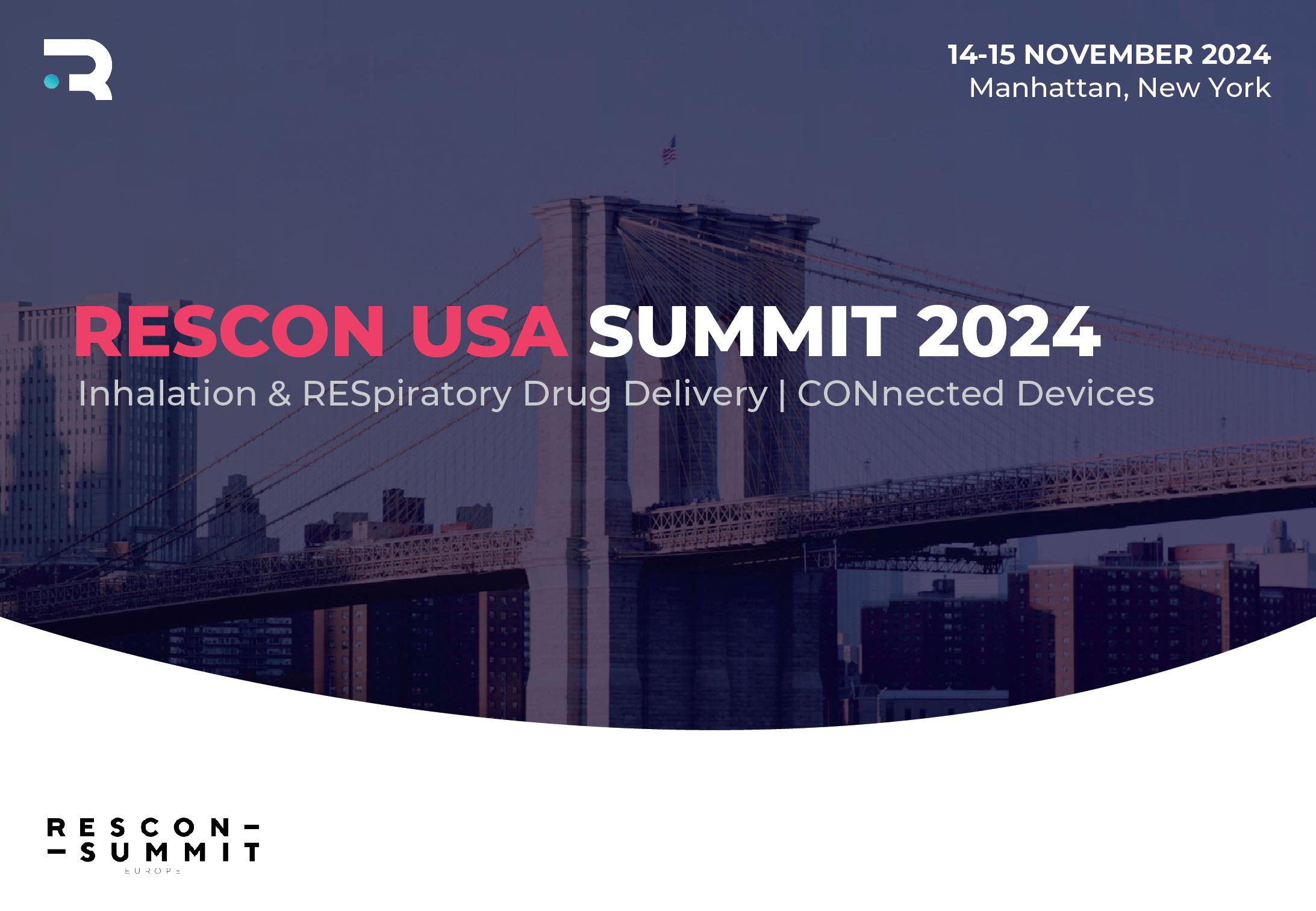
































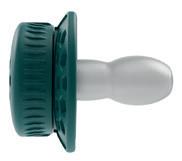
a
Ef�icient �ilter
Supports to �ilter the air your baby inhales
Designed by doctors, made in Sweden
Meets highest safety standards
All material and components USP 6, medical grade
Hypoallergenic and free from BPA, phthalates, lead, PVC
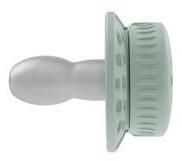
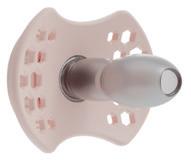
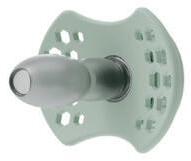
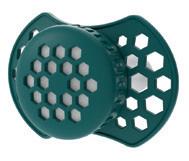
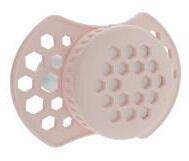

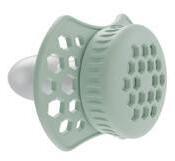


In this interview, Julien Storz, Director Business Development, Consumer Health Care, and Giulia Mueller, Product Manager, Consumer Health Care, both at Aptar Pharma, discuss the latest trends and treatment options available for upper airway conditions, along with the many benefits offered by Aptar Pharma’s advanced PureHale® systems to manufacturers.


What are the most common upper airway conditions and how are they currently being treated?
First, we should define the upper airway – it consists of the nasal cavity, oral cavity, pharynx and larynx. Together, they serve as the major pathway for air to enter the body and consequently constitute a primary interface with the environment. The upper airway is important to human health, as it can be an entry point for contaminants or disease. However, it can also serve as a place for healing and protection. Some of the most common conditions that affect this sensitive pathway include allergies, sinusitis, dry mucosa and dry nose, as well as viral and bacterial infections. Most of these conditions can cause inflammation of the mucosal tissue in the upper airways, which can have a significant impact on an individual’s health and wellbeing. As a result, there is a demand for products that can prevent or treat these conditions, which range from irritating to debilitating.
There are several different technology solutions to deliver formulations that can soothe, relieve or eliminate symptoms, but, to directly treat a target area, a technology system is needed that can reliably isolate delivery of the product to the desired region of the respiratory system. There is a range of different technologies available that can deliver treatments to different regions of the respiratory system, some of which are more targeted than others. For example, a mechanism that targets product delivery to the
Julien Storz is Director of Business Development for Aptar Pharma’s Consumer Healthcare (CHC) division. He holds a bachelor’s degree in Business Administration and has over 20 years of medical industry experience. Since 2019, Mr Storz has been responsible for supporting business development efforts across numerous applications while driving CHC sustainability efforts as part of the Global Market Development team.
Giulia Mueller is a Product Manager in Aptar Pharma’s CHC division. With a master’s degree in Innovation Management, Ms Mueller gained experience across various industries before joining the Global Market Development team within Aptar Pharma’s CHC Division in 2022. In her current role, she is responsible for overseeing the entire product lifecycle of Aptar Pharma’s Bag-On-Valve and PureHale® product range, focused on converting a robust project pipeline into consumer-centric and tailored solutions.

Figure 1: Airway disorders, including coughs, colds, allergies and asthma, can be treated using a range of technologies, including nasal sprays, aerosol dispensers, throat sprays, nebulisers and inhalers.

upper airway while minimising the amount of product reaching beyond it, such as the lower airway or lungs. Some of the devices used to treat upper airway conditions include sprays, droppers, rinsing devices, squeeze bottles, aerosol dispensers, inhalers, nebulisers and throat sprays (Figure 1), not all of which target the upper airways. For example, nebulisers deliver mist to the lungs, even though it passes through the upper airway. The droplet size of a fine mist can impact deposition rates in different regions of the respiratory system. Therefore, controlling droplet size from a fine mist delivery system can effectively focus delivery to the desired region, maximising the benefit for the consumer. These complex technical considerations must be made when designing new products to treat upper airway conditions.
QWhat are the trends in upper airway treatments from the consumer’s perspective?
JSThere is a wide range of consumers looking for upper airway treatments. For example, we have seen growing interest from parents seeking convenient treatments for their infants and toddlers, as well as user-friendly products for seniors. In part, this is being driven by increasing consumer demand for more natural, non-chemical drug treatments. Consumers are seeking products that can deliver relieving, cleansing, moisturising and soothing effects to the upper airways, as well as prophylactic inflammation and symptomatic treatments. Consumers have also expressed a preference for products that are non-invasive and avoid harsh rinsing steps. The ease-of-use and natural composition of some upper airway products, such as sterile saline fine mists, have made them suitable for moisturising and soothing the upper respiratory systems of babies, toddlers and children.
A 2021 study1 found that regular, daily use of saline nasal sprays or drops could provide relief from nasal symptoms in children and adults suffering from upper respiratory tract infections or allergic rhinitis with no reported side effects. This finding aligns with national guidance recommending daily use of saline sprays or drops for improving daily nasal hygiene. Another more recent study demonstrated that using saline nasal sprays at the first signs of a respiratory infection shortened illness duration by as much as three days.2 So, there is evidence that upper airway saline treatments can provide measurable benefits for consumers. And, since the covid-19 pandemic, there has been growing interest in upper airway products for preventative applications instead of the more common acute symptom relief or treatment. Overall, we believe that consumers are looking for a portable and non-invasive upper airway delivery technology that is easy to use and can deliver a wide range of natural products to consumers of virtually any age. Aptar Pharma’s PureHale® system was designed with many of the features required to address today’s upper respiratory ailments.
QWhat is Aptar Pharma’s PureHale® and how does it work?
Aptar Pharma’s PureHale® system was specifically designed to deliver a fine mist to the upper airways in a portable and user-friendly solution (Figure 2A). University of Cyprus simulation studies3 have demonstrated that PureHale® represents a technical advancement in targeted upper airway delivery that aligns well with consumer needs. Aptar Pharma developed PureHale® with an interchangeable mask and
Figure 2: (A) Aptar Pharma’s PureHale® system comes with a face mask and mouthpiece, suitable for a variety of users and for nasal and mouth application.
(B) Aptar Pharma’s PureHale® system produces a continuous plume of fine mist, reaching the upper airways based on the defined range of droplet size.
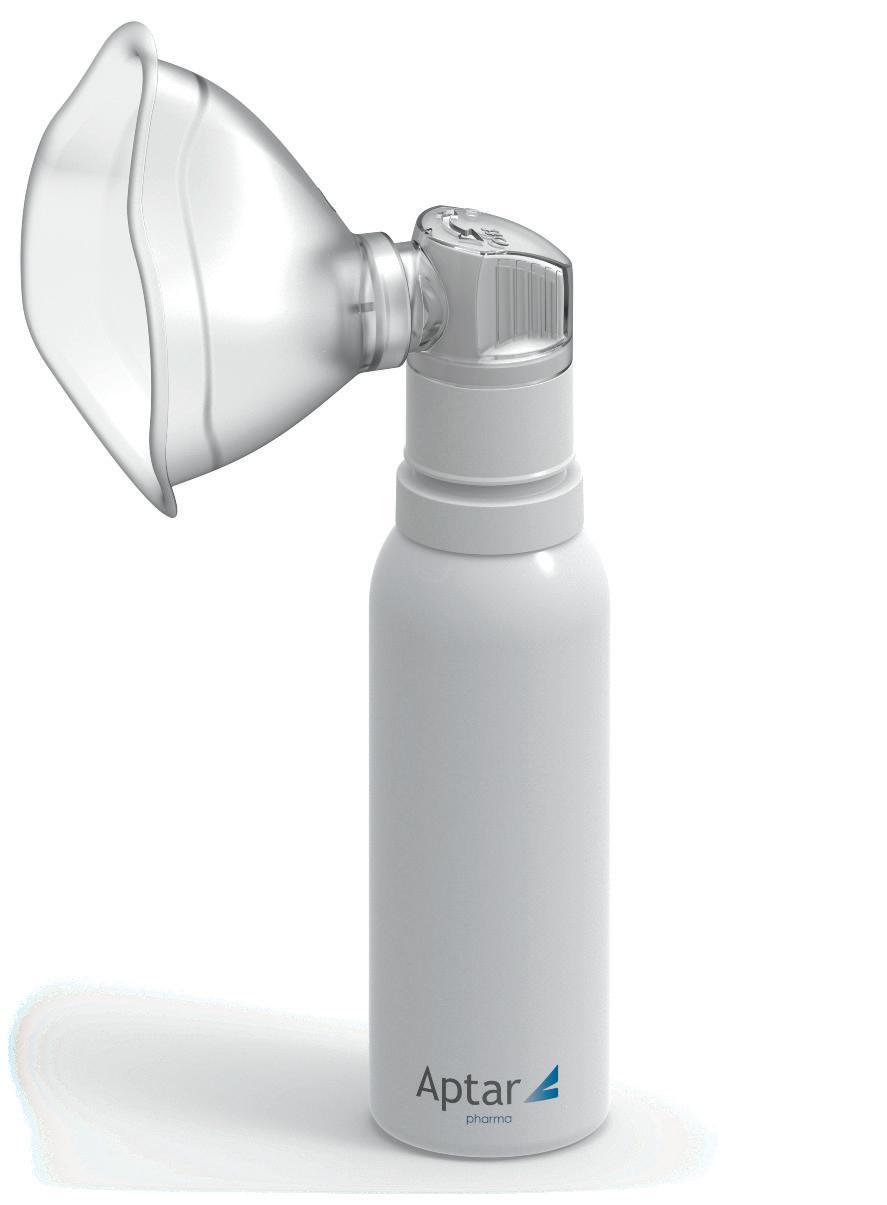
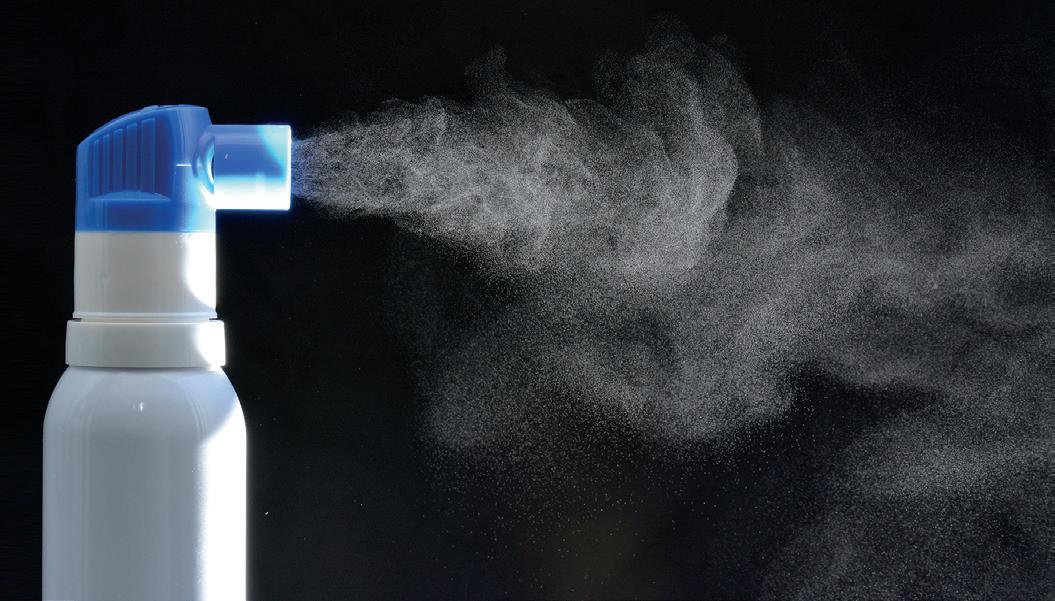
mouthpiece option (Figure 2B) that the the system can meet varied user requirements. PureHale® is based on well-known Bag-On-Valve (BOV) technology, using only compressed air to drive the release of a fine mist for up to 90 minutes of continuous use. Typical nasal sprays can only reach the frontal part of the nasal cavity with their spray mist. However, PureHale® can reach all the way back to the rear of the nasal cavity, also known as the nasalassociated lymphoid tissues or “NALT” region. This provides wider delivery options to the upper airways. The ability to deliver fine mist saline formulations to these regions can contribute to improved mucociliary clearance and general nasal hygiene.
QDoes Aptar Pharma have data supporting the performance of its PureHale® fine mist dispenser?
JSWhen Aptar Pharma designed PureHale® for upper airway applications, we performed various tests to ensure that it would deliver a fine mist with defined droplet sizes to specifically target the upper airway. Our scientists, in conjunction with researchers from the University of Cyprus,3 studied the deposition of its fine mist, via both its mask and mouthpiece configurations, to demonstrate the quantity of product delivered to the targeted regions (Figure 3). It was determined that a consistent droplet size range of 15–20 µm is ideal for targeting product deposition to the
“When the PureHale® aerosol plume was aimed directly at the airways, it delivered high deposition rates in the targeted upper airway regions.”
upper airways without impacting the lungs or lower airways. We used aerodynamic particle size distribution testing using a next-generation pharmaceutical impactor in combination with an Alberta Idealised Throat to simulate deposition and determine droplet size distributions in the upper airways. Combining this with simulated breathing models and computational fluid particle dynamics allowed our scientists to map the droplet deposition accurately throughout the regions of the upper airways.
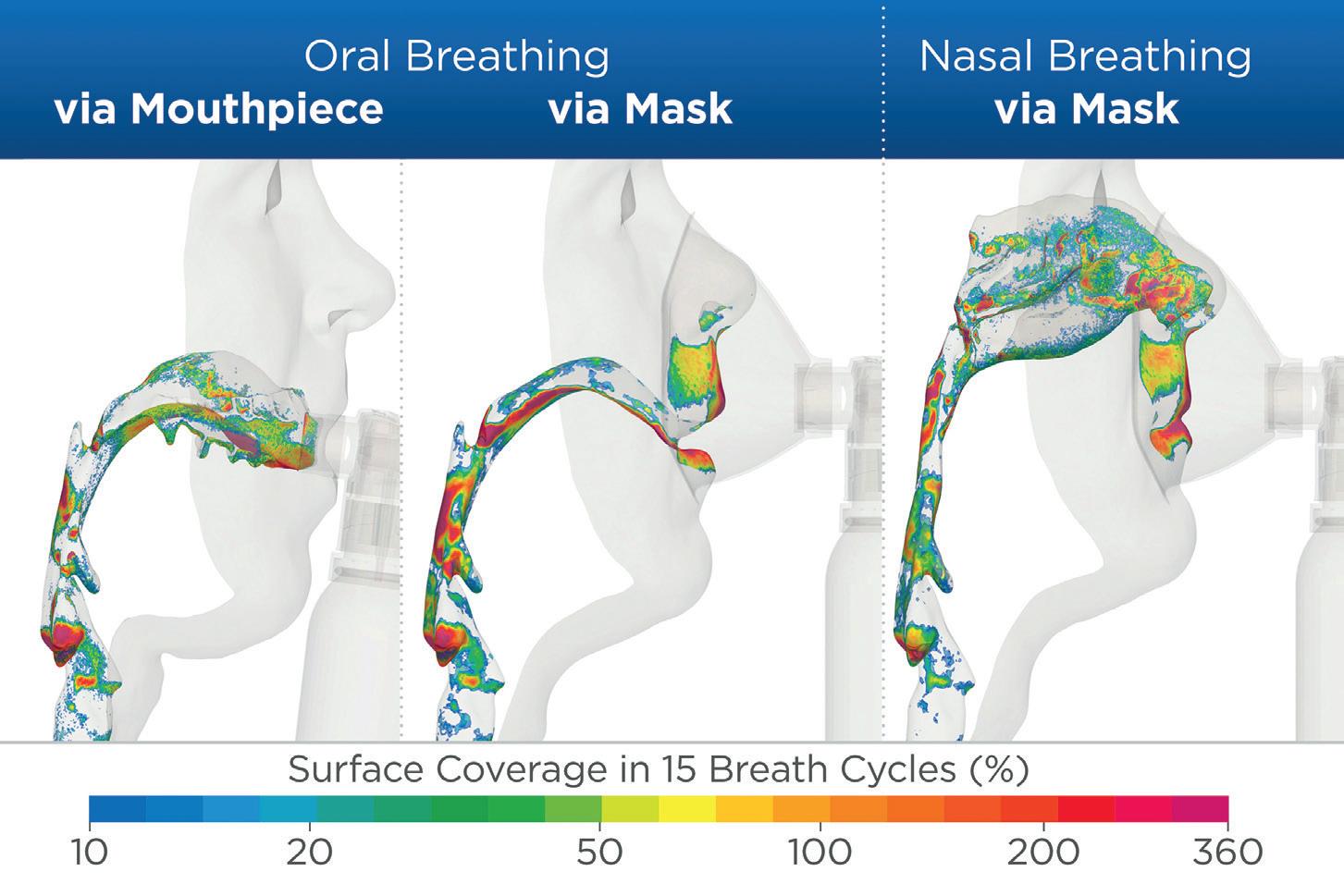
We also assessed the deposition patterns in adjacent regions of the respiratory system to ensure that the product is only delivered where it is needed. The results found that, when the PureHale® aerosol plume was aimed directly at the airways, it delivered high deposition rates in the targeted upper airway regions. When an additional breathing manoeuvre was performed by the user, separating inhalation (mouth) and exhalation (nose), the resulting data showed that upper airway deposition could be even further increased. The data-driven development of PureHale® confirmed that it can reliably deliver appropriately sized droplets of product to targeted areas of the upper airways.
QWhy is the PureHale® fine mist dispenser attractive to consumers?
GMPureHale® was designed to be portable and userfriendly. A simple turn of the actuator ring releases a constant flow of fine mist, typically used in 1–2-minute applications. The system fits in most handbags and provides silent operation for on-the-go applications. This portability is possible because PureHale® is driven by compressed air only, requiring no wires or external power sources. As a result, the system can be administered virtually anywhere and emits the same fine mist in any position, from lying down to standing up. Even with its mask attached, the assembled product was designed to remain standing upright for consumer convenience.
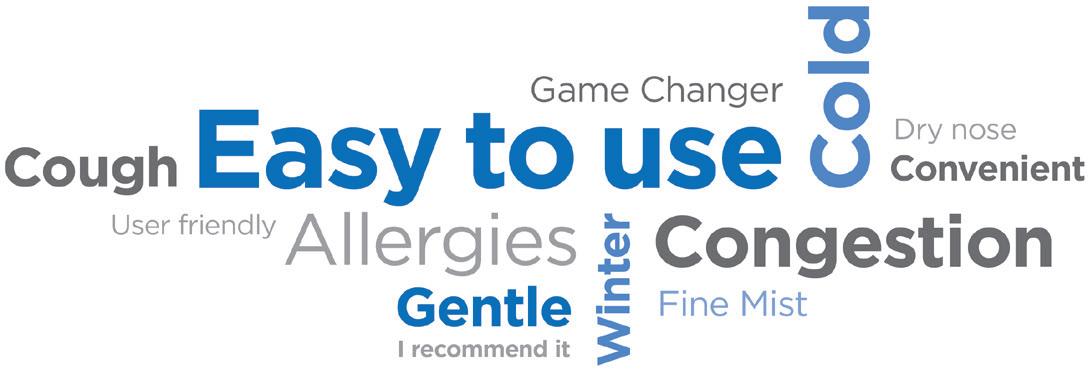
PureHale® is designed to be used daily for preventative or maintenance treatments or, occasionally, for symptom relief. We believe that consumers are quickly adopting products that use PureHale® technology for many of these important reasons. In 2023 alone, US consumers spent over US$40 million (£30 million) on products that use the PureHale® system (Figure 4).
QWhy do parents of infants and toddlers like to use the PureHale® system?
JSThe US FDA does not recommend the use of over-thecounter cough and cold medications for children under the age of four, so parents are seeking non-medicated alternatives. There is also increased awareness of the benefits of fine mist saline products for infants, with significant sales growth forecast in North America and Europe, as noted in a recent study, “Baby Saline Spray Market Research Report 2024”, published by Verified Market Reports. Parents also like the fact that fine mist products are non-invasive, which increases patient acceptance. This is particularly important for children when they are not feeling their best. The fine, comforting, cool mist generated by PureHale® systems is silent and friendly to even the smallest nostril size. This makes administration of the product easier for parents, while reducing the child’s fears (Figure 5). Parents also appreciate that the mask and mouthpiece are easy to clean and reuseable, so PureHale® is always ready to go. A review of parent customer comments on US-based online retailers commonly highlight the ease of administration and lack of resistance to their use from children as important features of the PureHale® system.
QJS
Do you see additional new applications for the PureHale® system?
We do see additional potential applications for PureHale® beyond saline products. We have received interest in applying the PureHale® platform to scented products that refresh the user and their immediate surroundings. PureHale® delivers these scented mist products in a clean, hygienic

and portable format, broadening their appeal. Similarly, in the personal care space, we anticipate more applications for personal care products, such as skin moisturisers, general skin care and refreshing consumer products presented as a fine mist.
“Through its specialised laboratories, Aptar Pharma can also perform additional specific tests based on the individual formulation’s requirements.”
While additional research would be required, we believe there is a potential for the use of fine mist formulations to treat upper airway areas that are associated with virus adherence and replication.
QHow does Aptar Pharma support customers who select PureHale® to deliver their fine mist products?
GM We support customers in their development work using specialised analytical tests, models and simulations to ensure customer formulations are compatible with PureHale® technology. This development work may include various one-time characterisation tests that are part of the system’s basic performance analysis, such as droplet size distribution, full-to-empty tests, spray pattern or flow rate. Through its specialised laboratories, Aptar Pharma can also perform additional specific tests based on the individual formulation’s requirements. Our experienced scientists can help customers to optimise their formulation for use with PureHale® further by providing them with technical feedback and suggestions that can help to accelerate the product development process. Ultimately, our goal is to support customers in developing a fine mist product that will meet their performance requirements throughout the life of the product.
QDoes Aptar Pharma also provide scale-up and manufacturing support for products using PureHale® systems?
GM Aptar Pharma has established long-standing relationships with several contract development and manufacturing organisations (CDMOs) located in different geographic regions that offer PureHale® filling capabilities that can support local markets or global supply. This potentially simplifies the manufacturing process for customers, as they can access CDMOs with both the right manufacturing capabilities already


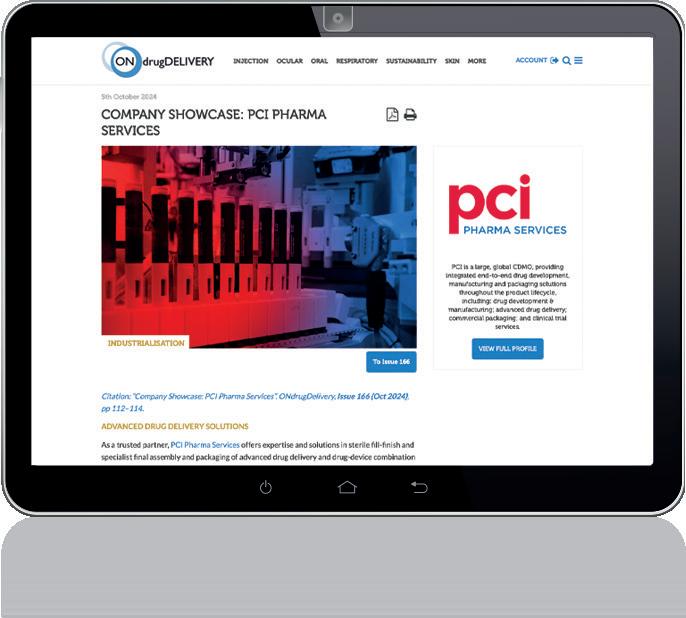
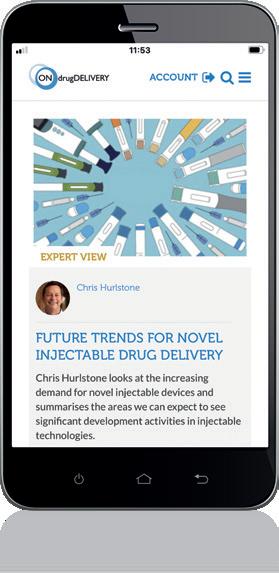
in place and prior experience in filling PureHale® systems. Aptar Pharma can also provide additional laboratory data to support customer product development programmes. It is important that we support PureHale® customers at every step of the development process so that they can achieve long-term success.
QIs PureHale® available in different configurations for different applications?
GMOur PureHale® system offers a range of customisation options to customers. The BOV systems come in three different bag size options holding 30, 50 and 85 mL of formulation. These offer approximately 30, 60 and 90 minutes of continuous use, respectively. Standard PureHale® mask and mouthpiece colours are transparent white and transparent blue. However, Aptar Pharma also offers branding options with mask and mouthpiece components available in a range of custom colours.
QIs PureHale® available globally and are there any regional trends in demand?
There are established market references using the PureHale® system found around the world, including the American, Chinese and Indian markets (Figure 6). The US market has seen continued interest in saline products as new,
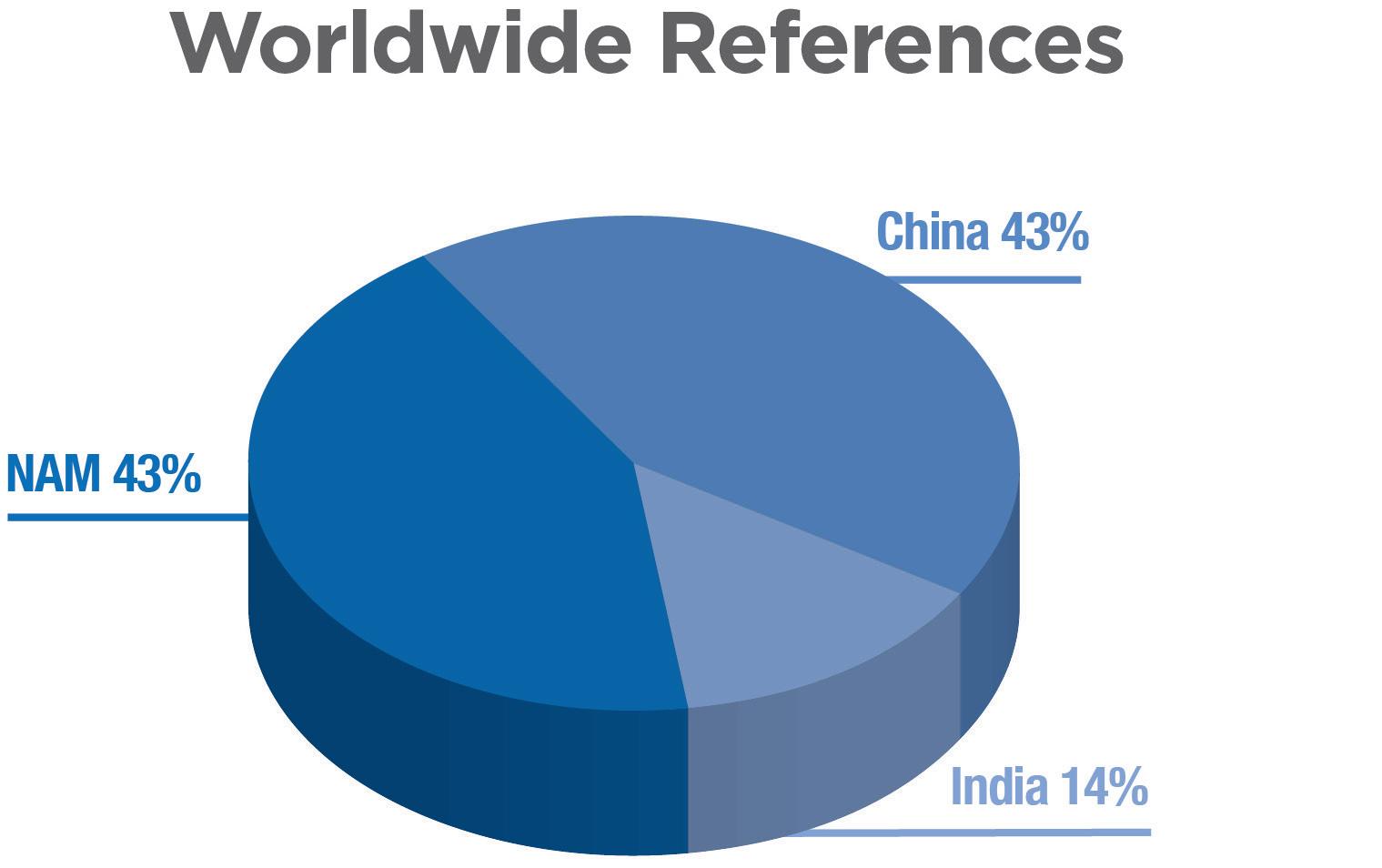
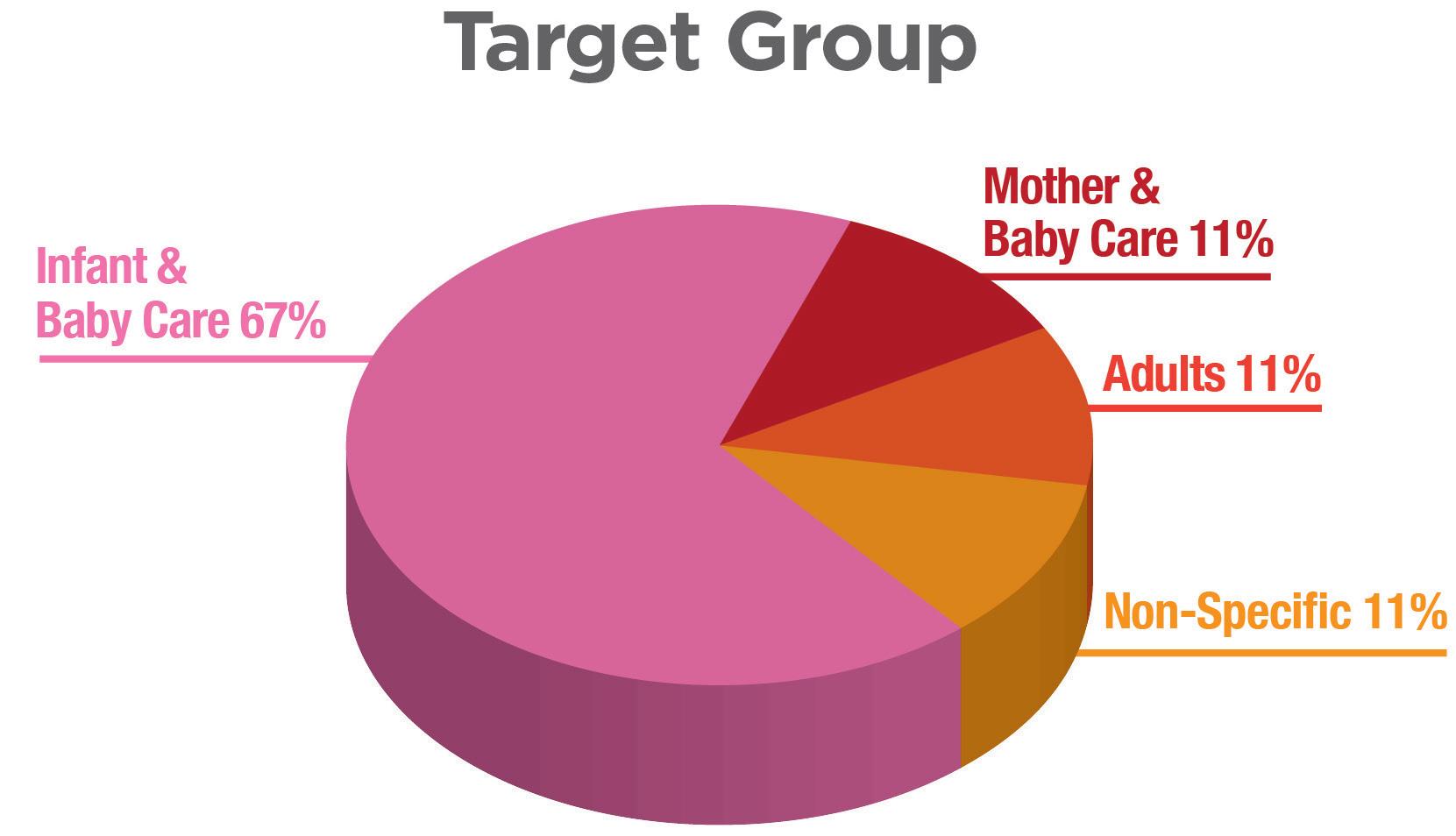
Figure 6: Graph of proportion of regional market references that use Aptar Pharma’s PureHale® system in North America, China and India. The majority of market references are targeting infant and baby-care applications.
“Product
companies are trying to meet changing consumer expectations for upper airway treatments with innovative and convenient solutions.”
innovative products are being launched. We also expect to see continued growth in PureHale® products in Europe, where other nasal saline rinse treatments are already well accepted and popular. We support PureHale® customers globally, ranging from small local brands to multinational product companies. Product companies are trying to meet changing consumer expectations for upper airway treatments with innovative and convenient solutions. Overall, we are observing increased demand for our PureHale® system, driven by both product differentiation and consumer demand for upper airway delivery systems.
Aptar Pharma is a drug delivery expert – from formulation to patient – for proven drug delivery solutions and services that supports pharmaceutical companies worldwide to develop safe, efficient and compliant medicines. Aptar Pharma’s drug delivery systems, components and active material solutions serve the widest range of delivery routes. The company’s digital healthcare solutions help improve patient adherence and treatment experiences, while Aptar Pharma Services helps accelerate and derisk the drug development journey. Aptar Pharma is part of AptarGroup, Inc.
1. Santoro E, Kalita P, Novak P, “The Role of Saline Nasal Sprays or Drops in Nasal Hygiene: A Review of the Evidence and Clinical Perspectives”. Rhinology Online, 2021, Vol 4, pp 1–16.
2. Little P et al, “ Nasal Sprays and Behavioural Interventions Compared with Usual Care For Acute Respiratory Illness In Primary Care: A Randomised, Controlled, Open-Label, Parallel-Group Trial.” Lancet Respir Med, 2024, Vol 12(8), pp 619–632.
3. Marx D, Stylianou F, Kossinos S. “Aerosol Deposition Characterization of Innovative PureHale® Technology Targeting the Upper Airways”. Drug Development & Delivery, Sep 2021, Vol 21(6), pp 16–23.
Julien Storz Director Business Development, Consumer Health Care T: +49 151 1950 7994 E: julien.storz@aptar.com
Giulia Mueller Product Manager, Consumer Health Care T: +49 160 9838 6589
E: giulia.mueller@aptar.com
Aptar Pharma Oeschlestrasse 54–56 78315 Radolfzell Germany
www.aptar.com/pharma
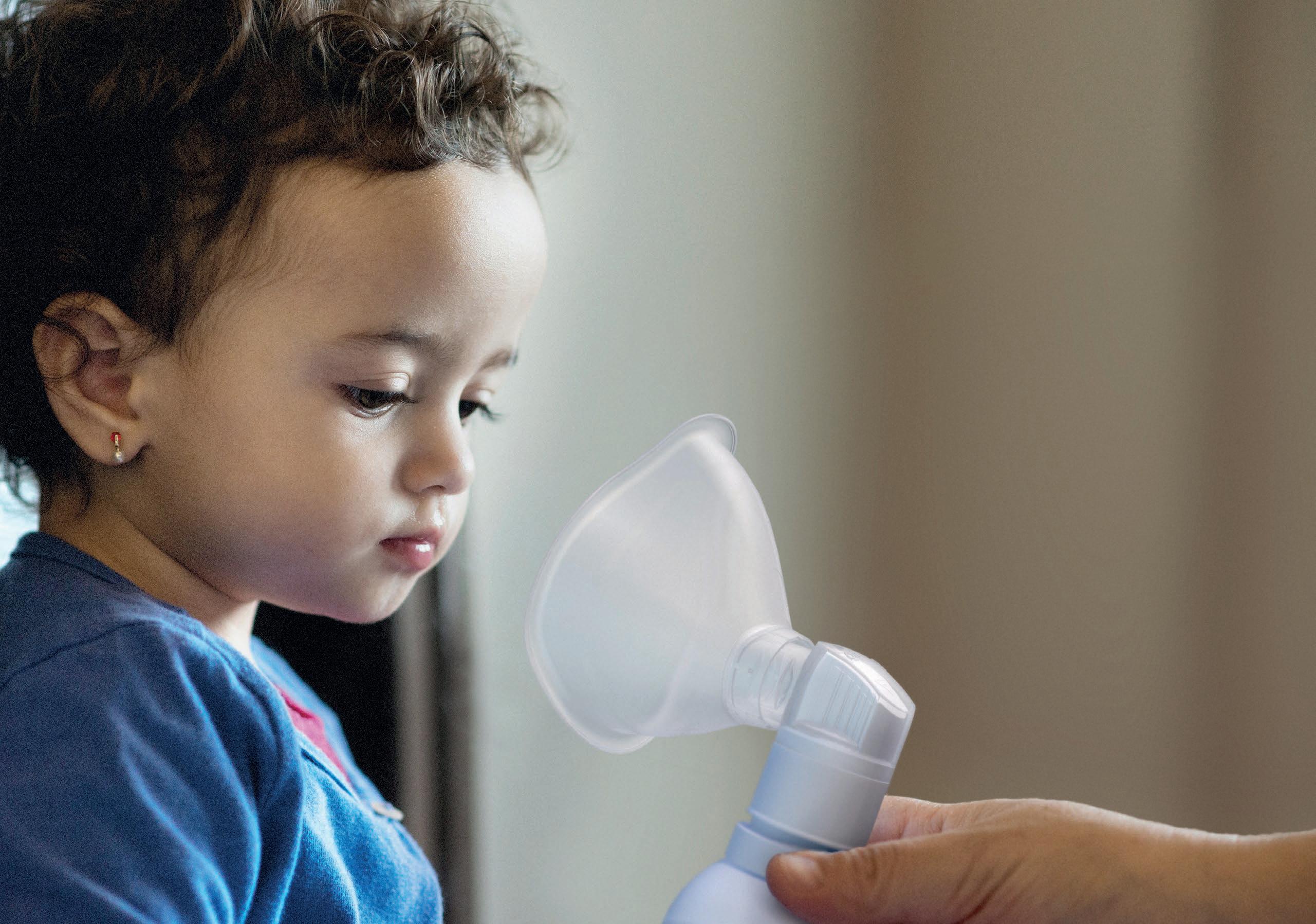
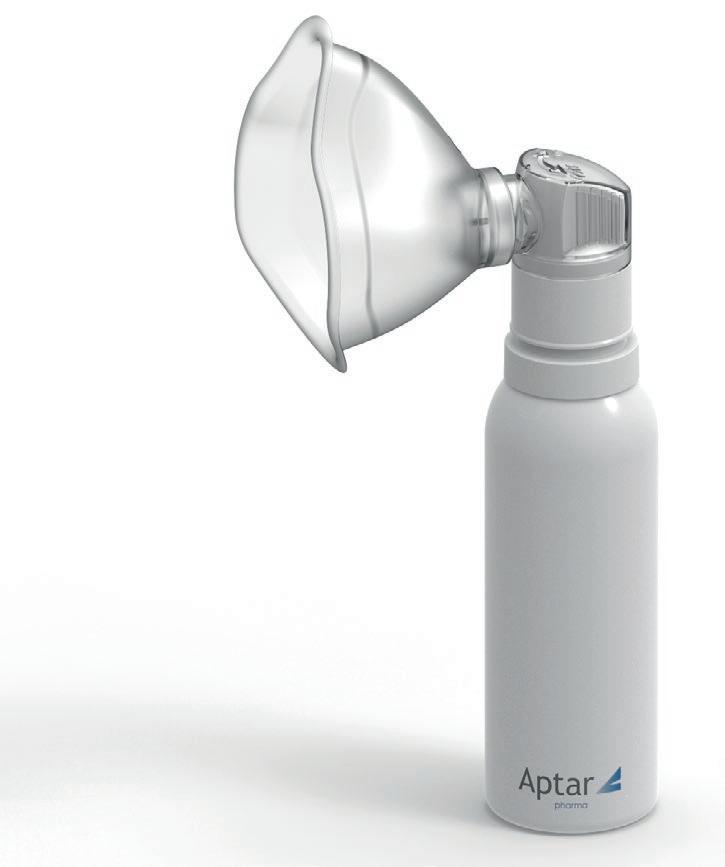
*https://www.innovamarketinsights.com/trends/consumer-health-trends/
**Data on file

In this article, Andrea Cusack, Chief Executive Officer, Elijah Nazarzadeh, PhD, Co-Founder and Chief Scientific Officer, and John Pritchard, PhD, Chairman, all at Nebu-Flow, share insights into the company’s innovative nebuliser platform, designed to overcome the technical restrictions of current technologies that limit the delivery of advanced medicines to the lungs. They also share an update on the development of new digital features for the Nebu-Flow product range.
Respiratory diseases, such as asthma and chronic obstructive pulmonary disease (COPD), are major causes of death and disability worldwide, despite medical advancements.1 Researchers face two types of challenges. Firstly, there is a treatment gap for respiratory disorders, with most medicines focusing on symptom relief and preventing deterioration rather than providing an effective treatment.2,3 Secondly, selection of the delivery route and correct drug delivery device has proven to be a challenge in the treatment of respiratory disorders.
Although the best route of delivery for respiratory treatment is the direct delivery of drugs to the lungs through the inhalation route, the lack of a high-performing device, coupled with the low efficacy of drugs, usually results in selection of the parenteral route. This route usually requires a higher dose of medicine, which can result in higher exposure and toxicity. To address these challenges, clinicians and researchers are seeking optimal drug formulations and delivery devices to target specific lung areas.
However, selection of an inhalation drug delivery device relies on several factors:
The API, Formulation and Dosage Inhalation formulations are usually in powder or liquid form. Powder formulations are delivered through dry powder inhalers (DPIs) and suitable for molecules that can be micronised or formulated in powder form and lower doses. Liquid formulations can be delivered by metered dose inhalers (MDIs), soft mist inhalers (SMIs) or nebulisers. Both MDIs and SMIs are
“While inhalers are portable devices that suit an active lifestyle, their correct use requires a high degree of co-ordination
between actuation and inhalation.”
suitable for delivery of lower volumes of formulations, whereas nebulisers are the best device for flexible volumes. Delivery of biological formulations is of significant interest. Most are synthesised as an aqueous or ethanol solution/suspension and so are easily formulated for nebulisation. However, there are extremely limited solutions available for inhalation delivery of these fragile molecules.
of Use and Target Patient Group
While inhalers are portable devices that suit an active lifestyle, their correct use requires a high degree of co-ordination between actuation and inhalation. On the other hand, nebulisers can be used with tidal breathing and are easy to use, which makes them the best device for old and young patients and those who suffer from acute respiratory disorders.
Sustainability
The carbon footprint associated with respiratory disorders is extremely high. As an example, the annual carbon footprint of asthma and COPD exacerbation in the

Andrea Cusack Chief Executive Officer E: andrea@nebuflow.co.uk

Dr Elijah Nazarzadeh Co-Founder and Chief Scientific Officer E: elijah@nebuflow.co.uk

Dr John Pritchard Chairman E: john@nebuflow.co.uk
Nebu-Flow Limited 255 St Vincent Street Glasgow G2 5QY
United Kingdom
www.nebuflow.com
UK is equivalent to one million tonnes of CO2.4 In particular, the propellant of MDIs is a powerful greenhouse gas (accounting for 3% of the UK NHS carbon footprint) and due to be phased out by 2050 in the EU. Only a limited range of formulations can be delivered with new propellants, which results in a gap when it comes to the correct device for inhalation delivery of other formulations.
Digital connectivity is becoming an integral part of the healthcare system, with the aim of improving adherence and clinical outcomes. While inhalers are mechanical devices, nebulisers are electrical devices that can be easily enhanced with digital features.
Inhalation drug delivery depends on aerosol droplet size; droplets larger than 10 µm are trapped in the nose and throat, while those under 5 µm can reach the small bronchi and alveoli, where drug absorption is more effective.5
Additionally, the large surface area of the lungs offers the potential for systemic drug delivery, presenting inhalation as a viable alternative to oral and parenteral routes. However, current devices struggle to produce aerosols smaller than the 2 µm needed for effective alveolar targeting (Figure 1).6,7
This article explores how acoustic wave technology can provide a disruptive solution, addressing the target product profile for a larger number of medicines in inhalation drug delivery, focusing on innovative digital healthcare solutions and next-generation nebulisers for biologics.
As highlighted above, nebulisers are effective in aerosolising and delivering medication during tidal breathing, making drug delivery simpler and eliminating the need for specialised inhalation training. This method also allows for easier formulation adjustments, facilitating doseranging studies, which are crucial in the early stages of drug development, thereby
“Current devices struggle to produce aerosols smaller than the 2 µm needed for effective alveolar targeting.”
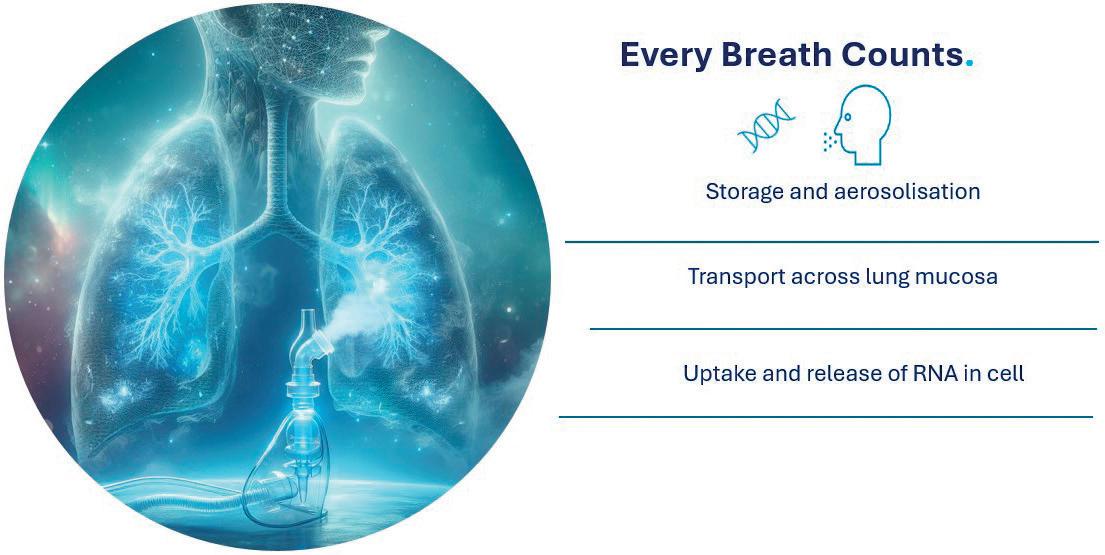
Figure 1: The main three challenges of delivering biologics to the lung – aerosolisation, transport across the mucosa, and uptake and release in the cell.
accelerating clinical trials and regulatory approvals. This makes nebulisers the ideal drug delivery device for the early stages of drug development, in particular biologics, which are synthesised as an aqueous or ethanol solution/suspension, enabling timeline acceleration to clinical development and market launch.8
In recent years, the use of nebulisers in clinical trials has grown significantly. PharmaCircle reported that 19% of inhaled products in clinical trials in 2019 used nebulisers, which increased to 39% in 2021 and, in August 2023, 42% of clinical trials were using nebulisers.
However, despite the ongoing developments of nebuliser technologies, there are still significant unmet needs. Not only may complex formulations lose potency, the output rate and aerosol droplet size of nebulisers depend on the physical properties of the formulation, such as viscosity and surface tension.9 Furthermore, suspension formulations are unsuited to ultrasonic nebulisers and may block the micron-sized pores in mesh nebulisers.9 In addition, the droplet size is a fundamental function of the design of a nebuliser and can be difficult to change, which can clearly impact the efficacy of the product by targeting the wrong location in the lungs (e.g. nebulised surfactant).10
Nebu-Flow’s patented technology uses ultrasound waves to disrupt the interface of a liquid volume into an aerosolised mist. By coupling acoustic waves with an array of microstructured wells containing liquid, one can control the aerosol droplet size <5 µm, thereby increasing the inhalable fraction of the aerosol for improved deposition in the lung.
Nebu-Flow microstructures are based on confinements of hundreds of micrometres in size, which do not block or denature
“Nebu-Flow’s patented technology uses ultrasound waves to disrupt the interface of a liquid volume into an aerosolised mist.”
fragile biologics. Additionally, the technology has the potential to generate aerosols with different median mass aerodynamic diameters (MMADs) from the same device, providing a new solution to pharmaceutical companies for targeted delivery of drugs from the same platform.
Inconsistent medication adherence among patients with chronic illnesses presents a major challenge in healthcare. Poor compliance not only leads to negative health outcomes but also increases costs. While smart medical devices may not directly impact patient readiness, they offer features that can monitor and verify medication intake, although it should be noted that smart devices do not necessarily identify which medicine has been taken. However, they do enable healthcare providers to make better-informed decisions about medication management and therapy adjustments.
Today’s medical device market demands the most up-to-date technology, with connectivity to the cloud now considered a “must have” capability for digital healthcare product solutions. Designing for success means that careful consideration must be given to both the mechanical and physical components as well as the

electronic components, thereby creating an electromechanical interface (Figure 2). Nebulisers are using electronic drive systems that can easily be integrated with digital capabilities, compared with pure mechanical devices such as DPIs.
Nebu-Flow has developed a method for identifying formulations loaded into a nebuliser, which can be integrated into digital healthcare systems for improved disorder management. This harnesses the unique compositions of commercial inhalation drug formulations, which influence their acoustic properties, such as compressibility. By measuring sound waves travelling through the drug reservoir, these properties can be indirectly assessed. Using an ultrasonic technique, Nebu-Flow has successfully identified various antibiotic and common respiratory drug formulations by analysing attenuation and phase velocities. Combining this technique with additional nebuliser features, such as biometric authentication and tracking of breathing patterns and usage times, can provide reliable data on dose administration, medication types and prescription management.
A tuneable nebuliser would significantly enhance the efficacy and safety profiles of new drugs. It has been shown that, by coupling acoustic waves with an array of microstructure, the aerosol droplet size
“Generation
can be controlled within the inhalable range (i.e. <5 µm).11,12 More recently, it has been reported that the aerosol droplet can be controlled by changing the driving parameters, while using the same hardware.13
With a greater understanding of the electromechanical interfaces, Nebu-Flow has tested the technology to ensure that the unmet needs of future nebulised drug products can be met, delivering aerosols with MMADs well below 5 µm,14 enhancing aerosol drug delivery and increasing the fine particle fraction (Table 1).
Generation of aerosol during the inhalation period can provide several advantages, such as a reduction in drug delivery time, dosage and passive exposure to a drug. This is usually implemented through a sensor to detect the breathing pattern, which is embedded within the device. However, the failure of the sensor would make the device redundant.
of aerosol during the inhalation period can provide several advantages, such as a reduction in drug delivery time, dosage and passive exposure to a drug.”
A modular approach to nebuliser design offers a sustainable solution by enabling the replacement and upgrading of individual components, thereby extending the product’s life. Breath-actuated nebulisers (BANs) represent a significant leap forward in respiratory therapy, enhancing drug delivery efficiency and effectiveness.15,16 Key advancements, such as precise dosing, reduced drug wastage, minimised aerosol generation and improved user experience, are driving the development of next-generation smart nebulisers. However, existing breathsensing systems are typically integrated into the main device, meaning that any sensor failure necessitates full replacement or costly repairs.
The Nebu-Flow team has explored a modular BAN design that incorporates a simple, cost-effective and robust sensor with sustainability in mind. Paired with Nebu-Flow’s nebuliser technology, this sensor successfully differentiates between inhalation and exhalation cycles. Its sensitivity enables nebulisation to be triggered for tidal volumes ranging from 155 to 900 mL, with a minimum response time of 20 ms for larger volumes.
Nebu-Flow is developing a new concept for a modular mouthpiece, using a piezoelectric breath sensor that can increase the delivered and respirable dose drastically compared with non-BANs,

Figure 3: The delivered, residual and respirable doses, as well as dose loss, are presented as percentages of the total dose loaded into the nebulisers. Results are expressed as the mean ± standard deviation. Non-BAN and BAN are compared.
while offering an effective, sustainable and customisable solution for enhancing inhalation drug delivery devices (Figure 3).
Nebu-Flow has successfully demonstrated that BANs can be both simple and costeffective to integrate, while simultaneously improving drug delivery efficiency.
Beyond this, one of the major advantages of Nebu-Flow technology is its ability to aerosolise biological entities without denaturing them. This has been tested with a range of biologics, including herring sperm DNA and small interfering ribonucleic acid (siRNA).12 Gene therapy has shown promise to end palliative treatments by addressing the underlying causes of lung dysfunction and infection.17 Gene silencing through siRNA has the potential to deliver on that promise, as evidenced by the number of clinical studies (>24 in 2023) and the increase in US FDA-approved siRNA therapeutics (~5 in 2023).18
Given the challenges associated with targeting the lung for drug delivery,19,20 there is currently an absence of siRNA drugs, with only two trials having progressed to the clinical stage. However, there have been developments in siRNA modification and conjugation to improve stability as well as pharmacokinetic behaviour in vector-free approaches (increased bioavailability in the lung).21
In this study, Nebu-Flow generated ultrafine aerosols laden with vector-free Silencer glyceraldehyde-3-phosphate dehydrogenase (GAPDH) siRNA using Nebu-Flow’s patented technology, which enables aerosol particle size tuning for
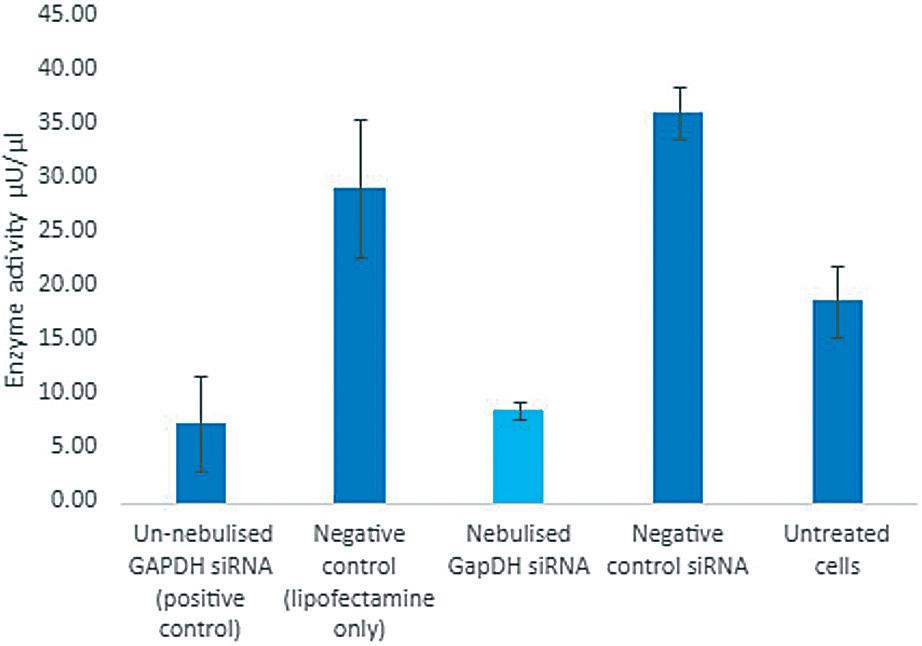
Figure 4: Successful nebulisation and delivery of GAPDH siRNA – the siRNA is active post nebulisation (cyan bar) with no adverse effects to cells observed.
deep lung drug deposition (Figure 4).10
Nebu-Flow characterised the aerosols and investigated the degradation and biological activity of nebulised siRNA in vitro.
Inhaled drug delivery is the primary route for treatment of respiratory disorders, which also shows exciting potential to unlock needle-free systemic drug delivery while reducing drug side effects. NebuFlow’s patented nebuliser facilitates the production of ultrafine aerosol particles carrying siRNA. However, ultrasound transducer-based nebulisers may impact drug stability through cavitation, hydrodynamic shear or temperature changes. Duplex siRNA may denature and undergo non-enzymatic hydrolysis, particularly at elevated temperatures.
The Nebu-Flow study illustrates that nebulised siRNA retains its full biological activity, enabling effective delivery to the peripheral and alveolar regions of the lung. The further ability of the technology to
control the aerosol droplet size for deep lung deposition with MMAD in the range of 1 µm can provide a significant improvement for efficient inhalation drug delivery, as well as unlocking systemic drug delivery by deposition of drugs in the alveolar region. A combination of technical capabilities and patent protection makes Nebu-Flow an outstanding platform for the development of tailored drug-nebuliser products.
Nebu-Flow is a start-up medical device company, developing Nebu-Flow technology in the form of a user-friendly nebuliser for efficient inhalation delivery of a wide range of formulation types. The Nebu-Flow technology can be tailored for delivery of specific drugs, enabling development of multiple drug-nebuliser products. The company received the CPHI 2024 Start-up Initiative award and is currently developing its product and looking for collaborators for product development.
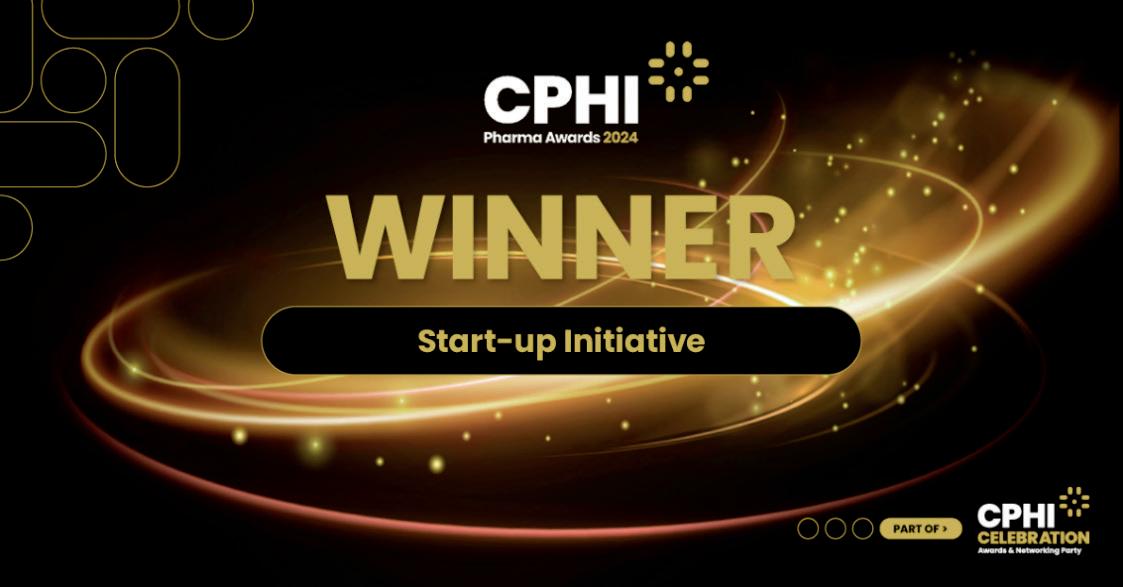
1. James SL et al, “Global, regional, and national incidence, prevalence, and years lived with disability for 354 diseases and injuries for 195 countries and territories, 1990-2017: a systematic analysis for the Global Burden of Disease Study 2017”. Lancet, 2018, Vol 392, pp 1789–858.
2. Venkatesan P, “GOLD COPD report: 2023 update”. Lancet Respir Med, 2023, Vol 11(1), p 18.
3. Ture DA et al, “Health Literacy and Health Outcomes in Chronic Obstructive Pulmonary Disease Patients: An Explorative Study”. Front Public Health, 2022, Vol 10, article 846768.
4. Kponee-Shovein K et al, “Carbon footprint and associated costs of asthma exacerbation care among UK adults”. J Med Econ, 2022, Vol 25(1), pp 524–531.
5. Darquenne C, “Deposition mechanism”. J Aerosol Med Pulm Drug Deliv, 2020, Vol 33(4), pp 181–185.
6. Martin AR, “Regional deposition: Targeting”, J Aerosol Med Pulm Drug Deliv, 2021, Vol 34(1), pp 1–10.
7. Laube BL, “The expanding role of aerosols in systemic drug delivery, gene therapy and vaccination: an update”. Transl Respir Med, 2014, Vol 2, article 3.
8. “Biologics Fill Finish Manufacturing Market”. Roots Analysis, 2024.
9. Elphick M et al, “Factors to consider when selecting a nebulizer for a new inhaled drug product development program”. Expert Opin Drug Deliv, 2015, Vol 12(8), pp 1375–1387.
10. Clark AR, “Essentials for aerosol delivery to term and pre-term infants”. Ann Transl Med, 2021, Vol 9 (7), pp 594–603.
11. Nazarzadeh E et al, “Confinement of surface waves at the air-water interface to control aerosol size and dispersity”. Phys Fluids, 2017, Vol 29, pp 112105–112110.
12. King X et al, “Ultrasonic Surface Acoustic Wave platform for targeted pulmonary delivery of nano drug vehicles”. IEEE IUS 2019, pp 699–701.
13. Macdonald EK et al, “Tuneable Nebulizer Platform for Targeted Inhalation Drug Delivery”. Respir Drug Deliv, 2023, pp 291–294.
14. Fullarton N et al, “Ultrafine siRNA-Laden Aerosol using Next Generation Nebulizer”. RDD Online 2024.
15. Barjaktarevic IZ, Milstone AP, “Nebulized Therapies in COPD: Past, Present, and the Future”.
Int J Chron Obstruct Pulmon Dis, 2020, Vol 15, pp 1665–1677.
16. “AeroEclipse BAN Nebulizers Study Summary”. Trudel Medical International, 2023.
17. Hu B et al, “Therapeutic siRNA: state of the art”. Signal Transduct Targeted Ther, 2020, Vol 5(1), p 101.
18. Gao J et al, “Progress in nonviral localized delivery of siRNA therapeutics for pulmonary diseases”. Acta Pharm Sin B, 2023, Vol 13(4), pp 1400–1428.
19. Newman SP, “Drug delivery to the lungs: challenges and opportunities”. Ther Deliv, 2017, Vol 8, pp 647–661.
20. Zhang H et al, “Nucleic acid degradation as barrier to gene delivery: a guide to understand and overcome nuclease activity”. Chem Soc Rev, 2024, Vol 53, pp 317–360.
21. Hariharan VN et al, “Divalent siRNAs are bioavailable in the lung and efficiently block SARSCoV-2 infection”. PNAS, 2023, Vol 120(11), article e2219523120.
Andrea Cusack is the Chief Executive Officer of Nebu-Flow, responsible for transitioning the company during its growth phase and managing commercial partnerships and future collaborations. During her career she has worked at various major pharmaceutical companies and contract development and manufacturing organisations, was formerly CEO of a nanotechnology start-up, and has been associated with the launch of several major products in the respiratory, injectables, biologics and drug delivery combination space.
Elijah Nazarzadeh, PhD, is the Co-Founder and Chief Scientific Officer of Nebu-Flow, responsible for technical developments. He has a PhD in Fluid Mechanics from King’s College London (UK). During his career, he has provided scientific consultation services to several companies in the field of emulsions and multiphase systems. Since 2015, he has worked as a postdoctoral researcher at the University of Glasgow (UK), where he developed the Nebu-Flow technology and led commercialisation activities. Dr Nazarzadeh received a Lee Lucas Award from the Institute of Physics (UK) for his exceptional efforts in development of the Nebu-Flow technology.
John Pritchard, PhD, Chairman of Nebu-Flow, is a private consultant specialising in strategic approaches to developing respiratory devices, drugs and digital health. At different stages in his career across three major pharmaceutical companies he has been associated with the launch of 11 major products and, at the Respiratory Drug Delivery conference in April 2018, he received the Charles G Thiel award for outstanding research and discovery in respiratory drug delivery. He has published widely in the field, as well as having served as a board member on various scientific and industry bodies. Dr Pritchard is currently a member of the United Nations committee that makes recommendations on the essential uses of propellants.
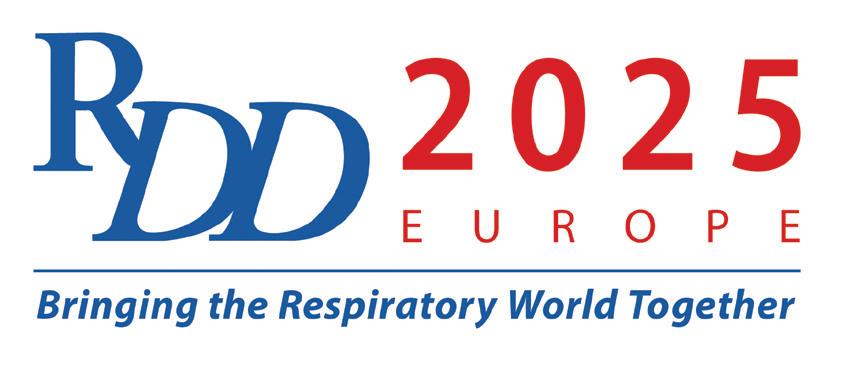




In this article, David Webster, Chief Commercial Officer, and Mark Rimkus, Vice-President Clinical Affairs, both at Beyond Air, consider the environmental impact of traditional high-pressure storage systems for nitric oxide and highlight the benefits associated with bedside ionic generation.
Nitric oxide (NO) has long been recognised for its therapeutic potential, particularly in respiratory care for conditions such as pulmonary hypertension and neonatal asphyxia. Traditionally, NO is generated industrially, stored in highpressure cylinders and transported to healthcare settings. This process, while effective, poses environmental challenges related to production, transportation and storage hazards. Recent advancements in technology have enabled the bedside generation of inhaled NO using ionic chambers, which extract nitrogen from room air.
NO GENERATION
Industrial Generation
Commercially, NO is produced by heating ammonium nitrate to a temperature of 245–270°C. This process creates several compounds, including NO, ammonia nitrogen, nitrogen and nitric acid, all of which contribute to the Earth’s greenhouse gas burden. Additionally, the transport of high-pressure cylinders requires an extensive amount of energy, resulting in a carbon footprint associated with logistics and transportation. Finally, the disposal of high-pressure tanks can have significant environmental impacts, including gas emissions, safety hazards, material waste and chemical contamination.
Storing NO in high-pressure cylinders presents environmental risks such as potential leaks or explosions, which can lead to air pollution and other hazardous
“The transport of highpressure cylinders requires extensive energy, resulting in a carbon footprint associated with logistics and transportation.”
situations. The disposal of these cylinders also poses challenges, where improper handling can introduce toxic materials into the environment.
Process Overview
Ionic chambers generate NO by extracting nitrogen from ambient air and using electrochemical processes. This innovative technology not only produces NO on-demand at the bedside but also eliminates the need for bulky storage tanks.
There are several environmental advantages to the bedside ionic generation of NO, including a reduction in the carbon footprint. By generating NO from ambient air, bedside systems significantly reduce the reliance on fossil fuels for both production and transportation purposes, thereby lowering the CO2 emissions associated with traditional methods.
The elimination of high-pressure tank manufacturing is another advantage. The environmental impact of manufacturing high-pressure cylinders, typically used for
“By generating NO from ambient air, bedside systems significantly reduce the reliance on fossil fuels for both production and transportation purposes.”

David Webster
Chief Commercial Officer
E: dwebster@beyondair.net

Mark Rimkus
Vice-President Clinical Affairs
E: mrimkus@beyondair.net
Beyond Air Inc
900 Stewart Ave
Suite 301
Garden City
NY 11530
United States
www.beyondair.net
storing gases such as oxygen and nitrogen, arises from various stages, from raw material extraction to production processes and endof-life disposal. While high-pressure cylinder manufacturing is essential for various industries, its environmental impact can be substantial, and efforts towards eliminating tanks where possible are essential to mitigate the associated emissions.
The implementation of bedside ionic generation alleviates the need for frequent transportation of high-pressure cylinders, thereby reducing logistics emissions and fostering a more efficient use of healthcare resources by minimising transportation needs.
The risk of environmental hazards is reduced with bedside ionic generation. The elimination of high-pressure storage reduces the risks associated with leaks and bursts, minimising the potential for contamination of hospital environments and the surrounding areas. In cases of fire, high-pressure cylinders are very dangerous to hospital staff and firefighters, irrespective of cylinder contents.
“The
elimination of high-pressure storage reduces the risks associated with leaks and bursts, minimising potential contamination of hospital environments and surrounding
areas.”
Lastly, the use of ambient air for NO generation aligns with sustainability principles, as it uses readily available resources, leading to a reduction in the resource depletion associated with traditional manufacturing processes.
The shift from traditional industrial generation of NO to bedside generation using ionic chambers offers significant
environmental benefits. The reduction in fossil fuel dependence, lower transportation emissions, decreased risk of hazards and enhanced sustainability all underscore the potential of this technology to promote a greener healthcare paradigm. As the medical community continues to prioritise environmentally friendly practices, the adoption of bedside NO generation could play a pivotal role in advancing public health while also respecting ecological health.
Beyond Air is a commercial-stage medical device and biopharmaceutical company dedicated to harnessing the power of endogenous and exogenous nitric oxide to improve the lives of patients suffering from respiratory illnesses, neurological disorders and solid tumours. The company has received US FDA approval for its first system, LungFit® PH, for the treatment of term and near-term neonates with hypoxic respiratory failure.
David Webster joined Beyond Air as Chief Commercial Officer in July 2024, bringing extensive life sciences experience. He has successfully led multiple programmes through clinical development, regulatory approvals and global commercialisation. Before Beyond Air, he was Chief Executive Officer of Body Vision Medical, where he led the global launch of the Lung Vision system for diagnosing and treating endoluminal cancer. Mr Webster also spent 18 years at NeuroLogica, overseeing its acquisition by Samsung Electronics, later serving as Chief Medical Officer and Chief Operating Officer for Samsung NeuroLogica.
Mark Rimkus joined Beyond Air in February 2018 as Vice President of Clinical Affairs. He brings 32 years of experience as a Registered Respiratory Therapist and 15 years as a Professional Engineer. His career includes several years as a full-time respiratory therapist in neonatal and paediatric intensive care units, as well as working as a biomedical engineer in the healthcare industry. Mr Rimkus has also managed ventilator fleets, ABG analysers and NO delivery systems at a large hospital in Alberta, Canada, where he also tested new respiratory equipment.

* using Forest Stewardship Council® certified recycled paper, vegetable-based inks, biodegradable laminates and carbon balanced materials offset via the World Land Trust™ following ISO140001 processes.
** by DHL using GoGreen Plus carbon insetting of at least 30% through the use of Sustainable Aviation Fuel (SAF), a biofuel substitute for traditional jet fuel, produced from renewable sources. Mailed to individual readers outside the UK by DHL using GoGreen, which offsets 100% of CO2 emissions.
Take full advantage of a highly impactful two days of networking with 6,500+ attendees and over 370 exhibitors.
22-23 January 2025
Paris Expo
Porte de Versailles
Paris, France

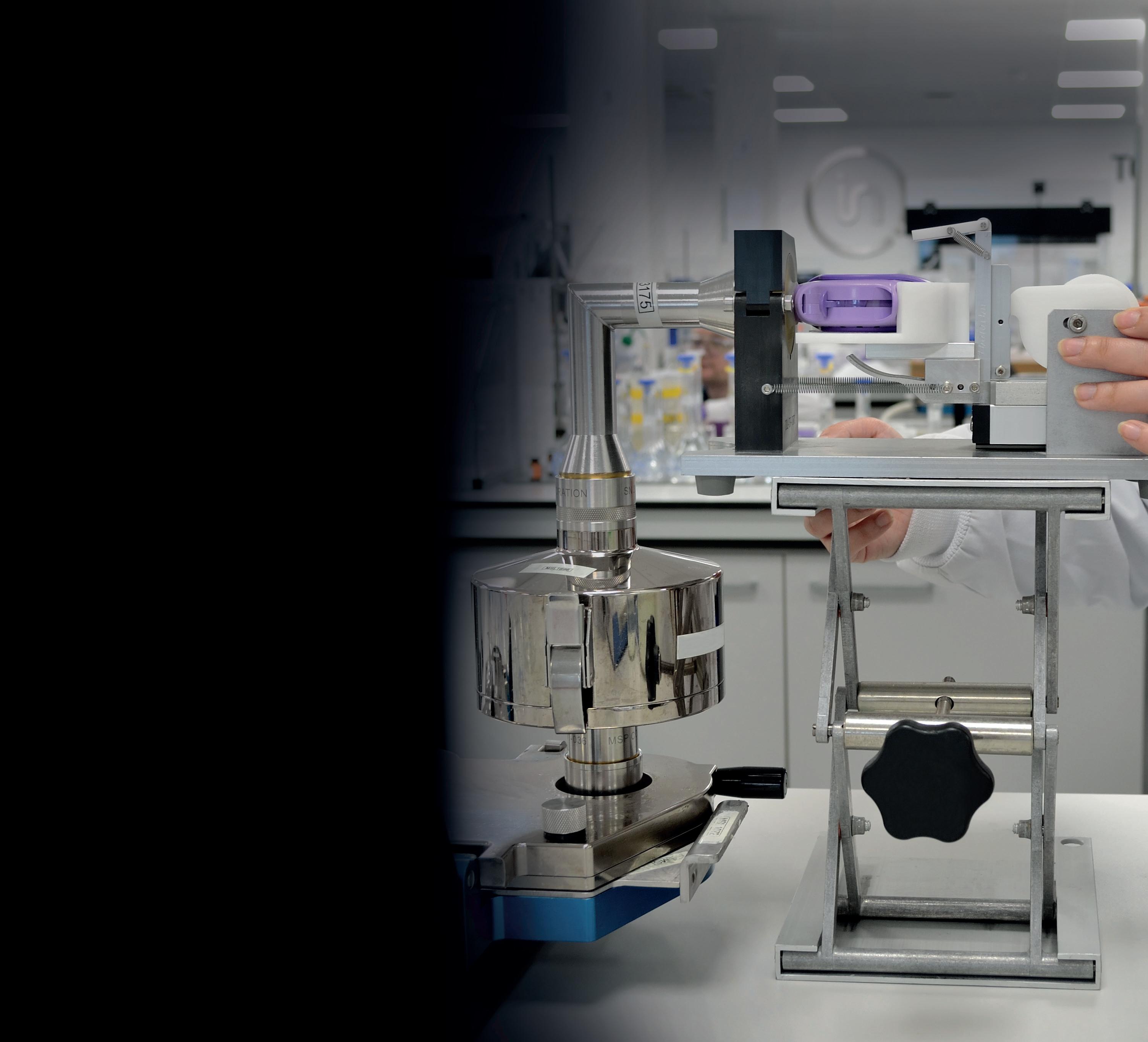



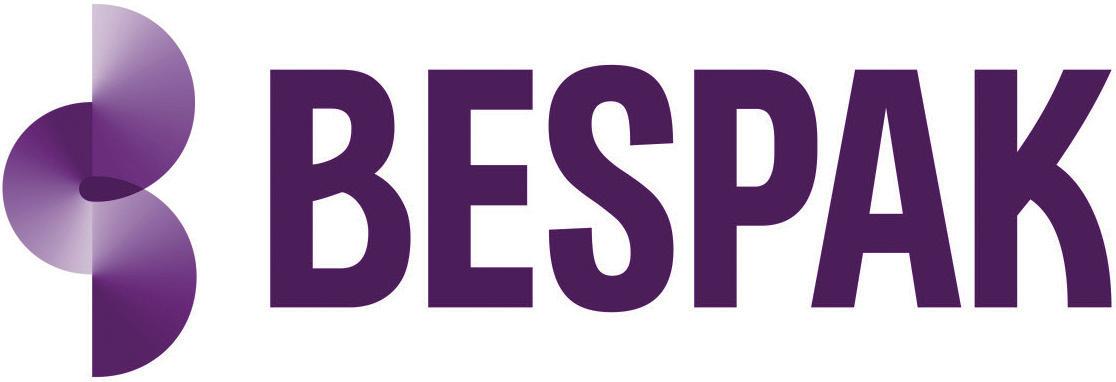
In this article, Ross Errington, Head of Drug Product Development, and Simon Gardner, Business Development Director, both at Bespak, discuss sustainability and the reformulation of pMDIs with low-GWP propellants.
The global incidence of respiratory diseases is rising, with chronic obstructive pulmonary disease (COPD) the third leading cause of death worldwide.1 This trend is exacerbated by airborne pollution, an ageing population and improving accessibility to accurate diagnoses. Against this backdrop, pressurised metered dose inhalers (pMDIs) are invaluable. These devices represent a highly effective means of pulmonary delivery independent of inspiratory effort by the patient, which is particularly relevant for very young and elderly patients.2 pMDIs also offer a cost-effective option for payers.3 In the UK, 71% of patients with asthma are treated using only pMDIs. However, efficacy and affordability are not the only bars by which pMDIs are measured – sustainability is of increasing concern.4,5
The basis for sustainability issues in pMDIs lies in their propellants, a key component of the formulation that provides the required pressure to atomise the active drug substance into micron-
“An industry-wide global transition to low-GWP propellants in pMDIs is gaining momentum.”
sized droplets for optimal delivery to the lung.6 The propellants used in pMDIs are hydrofluorocarbons (HFCs), also known as F-gases, and have high global warming potential (GWP). As a result, an industry-wide global transition to lowGWP propellants in pMDIs is gaining momentum. While a positive step forward for the environment, challenges must be overcome to embark on successful reformulation projects.
Climate-friendly propellants are vital to the long-term sustainability of the pMDI industry. The two most promising lowGWP alternatives are HFA-152a and HFO-1234ze, which can work with modified pMDI designs to achieve effective pulmonary delivery while greatly reducing emissions. Although highly promising from a technical perspective, there are many factors to consider beyond the availability of effective alternatives when making the transition. Chief among these is the need to update manufacturing and formulation processes for compatibility with greener propellants. By preparing effectively and getting ahead of regulatory mandates, pharmaceutical companies can avoid disruption to business continuity and safeguard the accessibility of life-saving medicines.

Ross Errington Head of Drug Product Development

Simon Gardner Business Development Director
Bespak Ltd London Road Holmes Chapel Crewe
Cheshire
CW4 8BE
United Kingdom
T: +44 1477 357112
E: enquiries@bespak.com
www.bespak.com
Through driving factors and key collaborations, barriers to the adoption of greener propellants are being overcome:
• The removal of supply chain restrictions now enables low GWP adoption, as the two candidate propellants progress towards commercialisation
• Companies are already offering an end-to-end supply chain of low-GWP components and product development and commercialisation services, including commercial-scale pMDI filling with HFA-152a and HFO-1234ze
• Regulators are defining product approval processes.
It is therefore unlikely that legacy propellants will continue to be available or affordable for the pharmaceutical sector, given the speed of adoption for industrial uses. The demand for more climate-friendly propellants will increase significantly in the coming years and, within the industry, there is a responsibility to ensure that the continued delivery of cost-effective medicine to patients globally. As such, the industry must transition before the legislation mandates it.
Until recently, the pMDI industry has enjoyed protection from the change to low-GWP propellants under regulations such as the EU F-gas Regulation ((EU) No 517/2014) and the US American Innovation and Manufacturing Act of 2020. However, these protections are starting to fall away as low-GWP propellants come to market. With changing legislative and regulatory demands, high-GWP HFCs could become more difficult to acquire as suppliers start to reduce production. Diminished availability and the subsequent increased cost associated with these propellants will likely impact pMDI cost of goods as well.
It is possible that some patients could switch from pMDIs to alternative devices. This is being encouraged across certain healthcare systems but may not be appropriate in many instances. For example, dry powder inhalers are not suitable for all patients, tend to be more expensive to the payer and the need for a particular medication may restrict device choice. There are also mixed results for patients who switch between different inhaler devices.7 Switching inhalers on
“There are clear opportunities to reformulate with greener propellants, and there is a strong sense of time pressure in the evolving industry landscape.”
non-medical grounds can lead to reduced adherence, loss of disease control and subsequent demand for additional healthcare resources, all of which add to the cost and carbon footprint of the patient’s treatment. It is therefore vital that pMDIs continue to be accessible to those who need them most, and that means ensuring the availability of low-GWP pMDIs as soon as possible.
The conversation around patient health is not limited to the problems associated with switching to different kinds of devices. Pollution plays a role in respiratory diseases; therefore, sustainability is intrinsically linked with patient outcomes. Action to minimise climate change demonstrates a genuine desire to protect patients and the planet, which helps to meet corporate responsibility expectations.
From a business point of view, reformulations with greener propellants are also able to achieve intellectual property protection, opening up new possibilities across the industry for companies both big and small. Developers willing to take a proactive approach to the shift can take advantage of this increasingly complex landscape and discover new routes to commercial success.
There are clear opportunities to reformulate with greener propellants and there is a strong sense of time pressure in the evolving industry landscape. Once the decision is made, the real work begins. Pharma companies must re-evaluate and adapt formulations, device components – such as valves and actuators – and manufacturing processes to ensure safety and performance during the lifetime of the product.
Developing a formulation with a performance closely matching that of existing marketed products provides a higher chance of clinical and regulatory
success and a smooth transition for the patient in terms of usability and, therefore, compliance.8 In recent feasibility studies conducted by Bespak, pMDIs using both of the new low-GWP propellants were investigated. One of these studies explored the development of albuterol sulphate pMDIs using the greener propellant HFA-152a. The through-inhaler-life (TIL) delivered doses (DDs) and aerodynamic particle size distribution (APSD) were evaluated in formulations containing different levels of ethanol.9 The results showed that the TIL DDs became more consistent when ethanol content increased. For APSD, fine particle fraction reduced as the ethanol content increased. By using in-house expertise and extensive experience to optimise formulations, it was possible to achieve consistent performance comparable with that of existing HFA pMDIs.
A second study investigated the impact of device design on the aerosolisation of fluticasone propionate suspensions using both HFA-152a and HFO-1234ze.10 Actuator design proved critical to controlling throat deposition and droplet size distribution produced by pMDIs. As droplet size is not the sole factor affecting throat deposition, other influencers of this should be explored, such as the spray pattern and plume velocity. To truly control key parameters and understand the compatibility between formulation, device and component design, and low-GWP propellants, collaborating with pMDI specialists will be beneficial during the transition.
After optimising the formulation and device components, it is necessary to develop robust manufacturing processes for lowGWP pMDIs. For this, understanding the properties of the propellants and their impact on the API, is vital. The physical properties of both greener propellants are similar to existing ones, but formulation development work will need to be undertaken. Of additional concern is that
both have flammable properties that must be considered.11 HFA-152a is classified as an extremely flammable gas, whereas HFO-1234ze has a narrow flammability range. The flammability of the propellants may necessitate a large investment to make production sites compliant with safety regulations, such as Dangerous Substances and Explosive Atmospheres Regulations (DSEAR).12
In addition to the cost of converting manufacturing equipment, some companies may find it hard to meet transition timelines as current available manufacturing capacity is quickly taken up. At the same time, securing timely manufacturing capacity for both clinical trials and commercial supply is crucial to success.
Contract development and manufacturing organisations dedicated to extending their low-GWP manufacturing capacity offer a flexible solution. This investment can help alleviate capital expenditure and engineering project management concerns for developers, securing the supply chain and avoiding a shortage of safe, affordable pMDI medications for patients.
With the opportunities created by new greener propellants and growing demand for change, the race to stake claims to markets and products is already underway. AstraZeneca recently announced completion of its clinical programme to support the transition of Breztri Aerosphere (budesonide/glycopyrrolate/formoterol fumarate) – a triple-combination therapy for COPD – to a next-generation propellant. Clinical programmes for the transition of AstraZeneca’s wider pMDI portfolio to the new propellant have also started.13
The rapid adoption of sustainable lowGWP propellants will place increasing pressure on global supply chains and capabilities, including product development and testing, clinical batch production,
“With the opportunities created by new greener propellants and growing demand for change, the race to stake claims to markets and products is already underway.”
scale-up capability and new production equipment.14 As such, it is expected that there will be a major gap between demand and the available manufacturing capacity for low-GWP pMDIs in the short to medium term.
Significant progress has been made in the transition to greener propellants, with companies such as AstraZeneca making huge strides. Over the next few years, pMDI developers will need to simultaneously consider clinical outcomes for patients, cost effectiveness for the payer and environmental impact, and understand how they can optimise all aspects for stakeholders.
From selecting a low-GWP candidate propellant to securing manufacturing capacity, collaborating with experts who can use up-to-date industry and technical knowledge can provide the means to successfully transition. By working together, a greener future can be secured that simultaneously increases the chances of achieving commercial success with a pMDI product.
Bespak is a specialist inhalation contract development and manufacturing organisation solely focused on inhaled and nasal drug delivery. Offering a fully integrated seamless service for developing and manufacturing drug products, devices and components for the global pharmaceutical industry, the company specialises in pMDIs, dry powder inhalers, and pulmonary and nasal soft mist inhalers. Bespak has established capacity and ongoing
expansions to enable the manufacture of pMDIs with low-GWP propellants.
1. “Chronic obstructive pulmonary disease (COPD)”. World Health Organization, Mar 16, 2023.
2. Usmani OS, Levy ML, “Effective respiratory management of asthma and COPD and the environmental impacts of inhalers”. npj Prim Care Respir Med, Vol 33, article 24.
3. Wilkinson AJK et al, “Costs of switching to low global warming potential inhalers. An economic and carbon footprint analysis of NHS prescription data in England”. BMJ Open, 2019, Vol 9, article e028763.
4. Attar-Zadeh D, Lewis H, Orlovic M, “Health-care Resource Requirements and Potential Financial Consequences of an Environmentally Driven Switch in Respiratory Inhaler Use in England”. J Health Econ Outcomes Res, 2021, Vol 8(2), pp 46–54.
5. Urrutia-Pereira M et al, “Environmental impact of inhaler devices on respiratory care: A narrative review”. J Bras Pneumol, 2022, Vol 48(6), article e20220270.
6. Javadzadeh Y, Yaqoubi S, “Therapeutic nanostructures for pulmonary drug delivery”. In “Nanostructures for Drug Delivery”, (Andronescu E, Grumezescu AM, eds), 2017, pp 619–638.
7. Murphy AC “Inhalers: To switch or not to switch? that is the question”. Thorax, 2019, Vol 75(3), article e1.
8. Mao L et al, “Key considerations in developing pressurised metered dose
inhalers using low global warming potential propellants”. Drug Delivery to the Lungs, 2014, 35.
9. Mao L et al, “Development of albuterol sulfate pressurised Metered Dose Inhalers using low global warming potential propellant 1,1-difluoroethane (HFA152A)”.
Respiratory Drug Delivery, 2024, Vol 1, pp 209–213.
10. Thorne B et al, “Investigating the impact of device design and propellant choice on the aerosolization of fluticasone propionate suspensions in HFA152A and HFO1234Ze”. Poster, Bespak,
Ross Errington, Head of Drug Product Development, is a chemist by training. He has over 30 years’ experience in pharmaceutical product development and manufacture, specialising in inhaled delivery systems. He has deep experience of pMDI product development and commercialisation, having supported numerous customers to successfully design, develop, register and commercialise products across global markets. Mr Errington is also an International Pharmaceutical Aerosol Consortium on Regulation & Science (IPAC-RS) board member.
Simon Gardner, Business Development Director, is a chemical engineer by training. He has over 25 years of experience in the global pMDI industry, including process engineering, plant management and business management roles in the medical propellants sector. He is a subject matter expert in propellant market dynamics and environmental regulation, and now focuses on supporting Bespak’s customers to transition to sustainable propellants. Mr Gardner is also an IPAC board member.

2024, company web page.
11. Atkinson N, “Considerations for Robust Clinical and Commercial Manufacturing of Next Generation Sustainable Metered Dose Inhalers.” Respiratory Drug Delivery, 2022, pp 75–86.
12. Atkinson N, Smith G, “Manufacturing pMDIs Using Ultra-low Global Warming Potential Propellant HFO-1234ze(e): A Replacement For HFA Propellants’. Respiratory Drug Delivery Conference Workshop Presentation, 2024.
13. “AstraZeneca announces the completion of the clinical programme to support the transition of Breztri to next-generation propellant with near-zero Global Warming Potential”. Press Release, AstraZeneca, Sep 9, 2024.




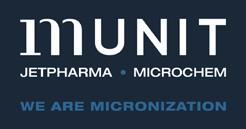


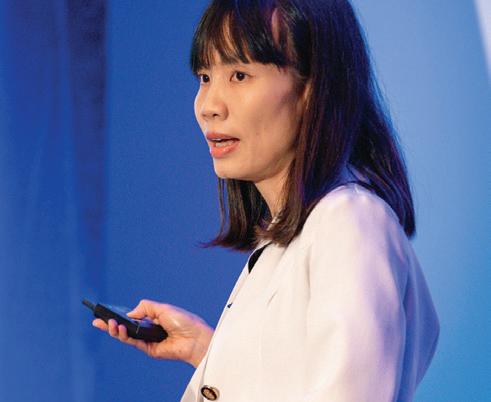







Low GWP pMDI commercial capacity with HFA-152a and HFO-1234ze available now. Speak with our team and be part of the change.
At CPHI Milan this year, the pharmaceutical industry gathered in record numbers – with 62,000 pharma executives from over 100 countries, the event is widely seen as a key barometer of industry prospects. Sessions spanned a wide range of topics, including a key discussion led by Team Consulting’s Alastair Willoughby on “Understanding the Problem of Decarbonisation in Drug Delivery”, one of the industry’s critical challenges. Looking ahead, these themes will be discussed in greater depth at Pharmapack Europe, set for January 22–23, 2025, at Paris Expo, Porte de Versailles, where industry leaders will meet specifically to advance innovations in pharmaceutical packaging and drug delivery.

Alastair Willoughby, Head of Mechanical Engineering, is Team Consulting’s lead for its cross-functional sustainability offering, where he works with his team to create robust, sustainable device designs. He is an experienced engineer with over 17 years of experience in medical device development and technical consultancy.
“As we move to low-GWP gases, the focus will shift back to inhalers, some of which have become more complex with the addition of counters, electronics and other features, making them significantly more difficult to recycle.”
QWhat are the main challenges specific to decarbonising drug delivery systems?
ATo start with, we need to appreciate that there are multiple delivery routes within this market, each of which presents different challenges. Team’s CPHI session focused on three of these –capsules, inhalers and injectables.
When it comes to capsules, it’s the upstream aspects – particularly raw materials – that are the main contributors to product carbon footprints. Therefore, players in this area have been aiming to reduce their impact by using different materials and sourcing options, as well as working closely with their suppliers.
As many people will know, with inhalers, the global warming potential of the gases used in pressurised metered dose inhalers (pMDIs) is a hot topic. In fact, it has been since the early ‘90s with the move away from chlorofluorocarbons to hydrofluoroalkanes, and the current focus is on securing lower global warming potential (GWP) propellants for these inhalers.
Although some inhalers are refillable, most are single use. However, it’s important to remember that, in terms of environmental damage, the gases used are orders of magnitude more harmful than the fact that you’re discarding a simple piece of plastic. That said, as we move to low-GWP gases, the focus will shift back to inhalers, some of which have become more
complex with the addition of counters, electronics and other features, making them significantly more difficult to recycle.
For injectables, there has been significant growth in the autoinjector market, which is creating a real problem with single-use devices being discarded. We can reduce the carbon footprint of these devices by simplifying their design and using biofeedstock materials. When these are incinerated, they follow the biogenic carbon cycle, which is better than relying on fossil fuels. However, single-use products are still being discarded after each use, so we need to explore how we can minimise waste. For example, can we transition to multidose devices or create durable products with limited disposable components?
QWhat role do regulatory hurdles play in the push towards decarbonisation?
AAs with many new developments, the “elephant in the room” is the overarching regulatory hurdles we must navigate, whether we’re making incremental improvements or implementing radical changes. Regulations can keep us in the same space for devices, rather than incentivising innovators to take revolutionary steps that could significantly reduce carbon footprints. As a result, more time is spent overcoming regulatory hurdles rather than genuinely revolutionising the industry.
Additionally, I think the industry is becoming increasingly risk averse as it becomes harder to get devices approved. Regulators need to balance the desire to reduce carbon footprint and improve patient safety with the need to avoid overly burdensome regulations that could stagnate innovation.
Q How can the industry address these challenges without compromising efficacy or patient outcomes?
AAs I mentioned earlier, the regulatory framework is designed to ensure that new devices are effective and produce the desired patient outcomes. However, when it comes to innovative new designs, this can be a real challenge.
For example, even with the simplest plastic inhalers there are challenges. How do we ensure that they are still functioning correctly, such as by avoiding clogging? An effective design using features such as self-cleaning geometries and material
“When moving to a reusable or multi-use model, the challenge is maintaining the efficacy needed to achieve the desired patient outcomes.”
to minimise deposition can, alongside analytical modelling, provide solutions to mitigate this. So, when moving to a reusable or multi-use model, the challenge is maintaining the efficacy needed to achieve the desired patient outcomes.
QWhat steps should the pharmaceutical industry take to reduce emissions? Are there any low-hanging fruits or quick wins?
AThe first step is improving on what we already have. This can involve using lower-carbon-footprint materials and more efficient manufacturing methods, and reducing energy use – all of which manufacturers are already working on. They may not have fully reached their destination yet, but they’re heading in the right direction. In many ways, these are the low-hanging fruits. However, the bigger challenge is the continued use of singleuse disposable products that are discarded after each use.
The much bigger hurdle is how to create a “circular economy” within the wider medical device industry. That’s where I’d like to see progress, but it’s being held back because there isn’t enough of a push for people to make the radical shifts needed.
The challenge here is twofold –returning devices and then processing them. Return programmes are increasing in popularity but are still struggling to achieve mass return levels. Then, once the products are returned, there is the need to separate and process the elements. Often this results in lower quality “downcycled” products – reducing the value and
properties of the polymers. While this gives the product a second life, maintaining the value of the material by recycling it into another device is the goal we need to reach. Good design for end of life and appropriate material choices, such as easily separated materials and limited colourants and additives, can all increase the potential for maintaining value through the recycling process.
QIn your view, how important is innovation in materials science to the decarbonisation of drug delivery? What advancements could be game changers in this space?
AIn a word, it’s vital. As I mentioned earlier, maintaining the value of materials is crucial, alongside the development of more recyclable alternatives to the high-barrier-property materials that are needed in many pharma products. Currently, manufacturers often default to using complex laminates, glass or other materials that are difficult to recycle. Finding an easily recyclable alternative material would be a clear win for sustainability in this space.
QCan we learn anything from the increasing use of GLP-1s?
AI think there’s still some uncertainty regarding which format will emerge as the winner. Most of the companies involved are focused on growth through a variety of delivery methods. Some are using dial-a-dose devices, while others are using fixed-volume, prefilled-syringe-based autoinjectors. Others are returning to vials and syringes.
Any move back to simpler products is likely driven by cost, since a vial and syringe can be significantly cheaper than a fully disposable autoinjector that is discarded after each use, which also reduces waste. However, the downside is that it may make it harder for certain patient groups to use. Therefore, patient access will likely come from a range of different platforms to support all users.
QGiven the growing focus on sustainability across industries, could contract design and manufacturing organisations (CDMOs) play a pivotal role?
ACDMOs are already playing a key role in helping to reduce both upstream and downstream carbon footprints through manufacturing. Manufacturers can gain a competitive advantage not just on cost but also on their carbon footprint, as an increasing number of companies are imposing carbon footprint requirements on their suppliers. Collaborations are crucial and the trickle-down effect from other industries is important. As recycling becomes more efficient and new polymers are developed, we can assess how best to benefit from these advances. The challenge for the medical device industry is that it has very niche requirements that other industries do not, so there may not be many proven paths to follow. Nevertheless, we can still learn from each other about how to reduce our overall footprint, while also considering the entire ecosystem.
QHow do we balance patient access to essential medicines with sustainable practices?
AThere are numerous access elements to consider, and I believe that radical sustainability solutions align well with this challenge. The industry has long been focused on more complex devices that add functionality to enhance safety or improve the user experience. While this is beneficial for certain aspects of access –
“As recycling becomes more efficient and new polymers are developed, we can
assess how best to benefit from these advances.”
such as enabling patients with limited dexterity to deliver their own medication – it also comes with a financial and sustainability cost.
In my view, offering a wider range of delivery options is important. For example, do you need an autoinjector to deliver the drug or would a prefilled syringe suffice? Or perhaps even a vial and syringe? These options may not only represent a lower-cost solution but also a more sustainable one.
The delivery mechanism must be appropriate for each individual. This is another example of personalised care – giving people the option that best suits their needs. Finding the right solution, of course, depends on the use scenario. For instance, single-use pen injectors may be used for a week or a month, depending on the drug. Meanwhile, reusable pen injectors may be used for three or four years. However, it’s fair to say that both pen injectors and autoinjectors have larger manufacturing carbon footprints than standalone syringes.
Therefore, finding ways to reduce this footprint wherever possible, such as by exploring a wider range of drug delivery options for each patient, is an important step towards improving sustainability. Looking at revolutionary options for delivering drugs could allow us to achieve access, both financially and from a usability perspective, and sustainability goals simultaneously.
Global pharma will reconvene next year at CPHI Frankfurt from October 28–30 at the Messe Frankfurt. As the leading global community for pharmaceutical professionals, CPHI offers unmatched digital and in-person networking opportunities across the entire pharma supply chain. For more expert insights, see the CPHI Annual Report 2024, which examines the key challenges and emerging trends set to shape the industry over the next five years.
Team Consulting is a drug delivery technology design and development partner. For over 38 years, the company has helped its clients create elegant, sustainable solutions to complex healthcare challenges. Team Consulting’s multidisciplinary team of experts brings a unique blend of human-centred design, engineering, science and regulatory expertise to every project, with an unparalleled track record in drug delivery technology development. Working with organisations ranging from leading pharma companies to emerging start-ups, Team Consulting empowers its clients to create high-quality products that improve patient lives.

Alastair Willoughby
Head of Mechanical Engineering
T: +44 1799 532700
E: alastair.willoughby@ team-consulting.com
Consulting Ltd
Abbey Barns Duxford Road
Ickleton Cambridge, CB10 1SX United Kingdom
www.team-consulting.com
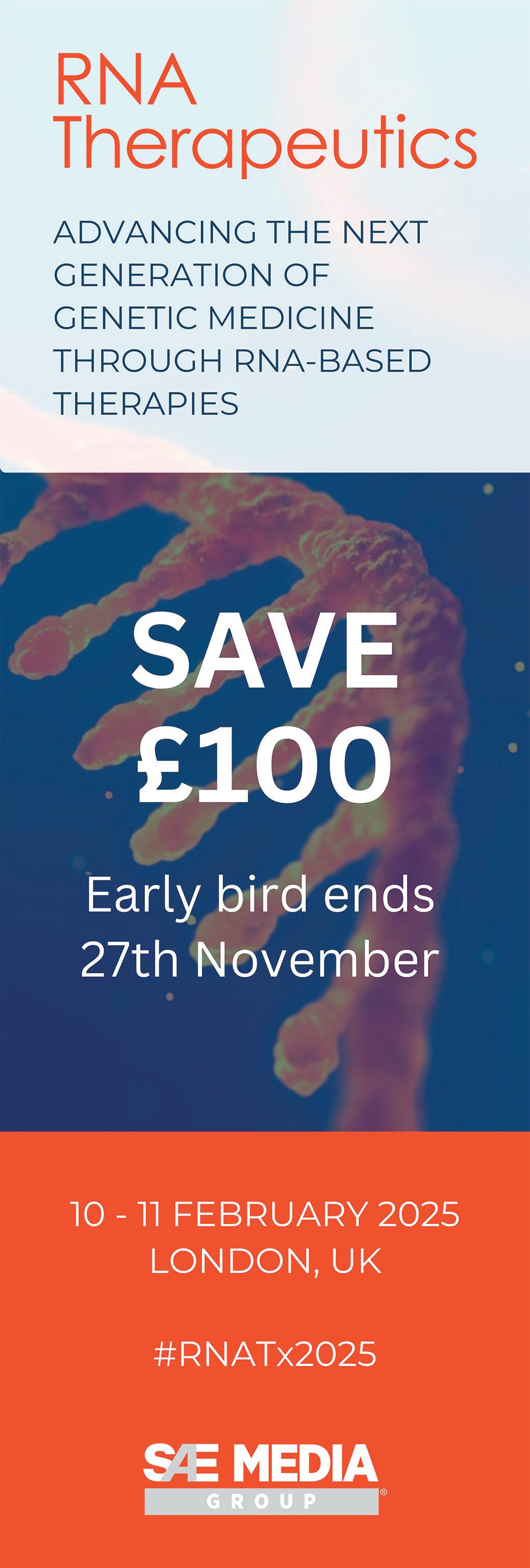

In this Expert View, Mark Parry, Senior Scientific Director, John McLaughlin, Principal Scientist, and Tino Otte, PhD, Managing Director, Intertek Switzerland, all of Intertek, discuss the necessary studies required to understand the nitrosamine formation and leachables profiles of new pMDI propellants with lower global warming potentials as part of the pharmaceutical industry’s drive to reduce its emissions and environmental impact.
Driven by political, commercial and regulatory action, reducing the carbon footprint of pharmaceutical products has become a critical focus for the whole industry. Within the respiratory space, the continuing evolution of the Montreal Protocols are focusing this work on switching from current pressurised metered dose inhaler (pMDI) propellants to new propellants with lower global warming potential (GWP).
This change presents challenges for both new pMDI products and the reformulation of existing products into the new propellants. Low-GWP propellants come with new chemistries that mean the reformulation of existing projects may not be as simple as a drop-in replacement. Interactions between formulation and device parts are well understood for hydrofluoroalkane (HFA) 134a and HFA227a but present an evolving picture for the low-GWP alternatives, meaning that a review of the analytical methodology and overall chemistry, manufacturing and controls approach is needed. For reformulation, a suitable gap analysis
“The transition to low-GWP propellants in pMDIs provides a chance to proactively address nitrosamine formation early in formulation development.”
of methods will be required, as these methods will underpin the generation of critical data supporting product characterisation, stability and in vitro bioequivalence work.
This also presents opportunities to address key analytical issues associated with contaminants such as nitrosamines and leachables, which represent significant risks to patient safety and have been the focus of significant legislative development in recent years.
Nitrosamine Formation in pMDIs
Since the EMA and US FDA introduced guidelines in 2020 on controlling nitrosamine impurities in medicinal products, industry stakeholders have undertaken extensive risk assessment and testing programmes. These efforts are time-consuming and costly, requiring the development of sensitive detection methods and comprehensive root-cause analysis. This has been an important step in improving patient safety but has led to significant reformulation work for some products to comply with new intake limits.
The transition to low-GWP propellants in pMDIs provides a chance to proactively address nitrosamine formation early in formulation development. Using advanced analytical techniques, such as liquid chromatography mass spectrometry (LC-MS) and gas chromatography mass spectrometry (GC-MS), can help streamline efforts to meet regulatory requirements for nitrosamine levels. Tandem LC-MS provides high sensitivity and specificity for detecting API-specific nitrosamines, even in complex pMDI matrices.
Mark Parry
Senior Scientific Director
T: +44 01763 261 648
E: mark.parry@intertek.com
John McLaughlin
Principal Scientist
T: +44 01763 261 648
E: john.mclaughlin@intertek.com
Intertek Melbourn
Saxon Way, Melbourn Hertfordshire
SG8 6DN
United Kingdom
Dr Tino Otte
Managing Director, Intertek Switzerland
T: +41 43 433 78 10
E: tino.otte@intertek.com
Intertek (Schweiz) AG
TechCenter Reinach, Gebäude D Kägenstrasse 18
CH-4153 Reinach BL Switzerland
www.intertek.com
GC-MS is effective for analysing volatile, non-API-specific nitrosamines and potential degradation products from propellants. Using both LC-MS and GC-MS in early trials enables comprehensive screening, identifies nitrosamine sources and ensures regulatory compliance.
Nitrosamines primarily form through reactions between secondary or tertiary amines and nitrosating agents, such as nitrous oxides or nitrites, under acidic conditions. In pMDIs, nitrosamine formation can result from interactions between the propellant system, APIs, excipients and device materials. The introduction of low-GWP propellants to pMDIs necessitates a thorough analytical evaluation to manage the risk of nitrosamine formation.
Next-generation low-GWP propellants, such as hydrofluoroolefin (HFO) 1234ze and HFA-152a, differ chemically from traditional propellants. As unsaturated compounds, HFOs can potentially react with other formulation components or degrade over time, forming reactive species that may contribute to nitrosamine formation. The interactions between these new propellants and other formulation components, especially in the presence of moisture, heat and light, are not yet fully understood.
Each component of the pMDI formulation, including APIs, excipients and device materials, must be evaluated for their potential to contribute to nitrosamine formation. Therefore, reformulation efforts should include rigorous testing with robust and validated methods at all stages of development to assess any increased risk when using these new propellants.
Environmental and Storage Considerations
The conditions under which pMDIs are stored and used (temperature, humidity and exposure to light) can significantly influence nitrosamine formation and should be carefully controlled. Accelerated stability studies can help predict how formulations might behave over time and
under different environmental conditions, providing essential data for formulation decisions.
The new low-GWP propellant systems could mean changes in recommended long-term storage conditions or packaging to provide the reformulated product with the necessary stability to remain a viable commercial product.
Analytical Strategies and Regulatory Compliance
Reformulating pMDIs with low-GWP propellants enables the risk of nitrosamine formation to be addressed early in the drug development process, something that wasn’t considered when many of the currently marketed pMDI products were being developed in the 1990s and 2000s. Analytical and manufacturing strategies must align with regulatory guidelines and include robust risk assessments that consider all potential sources of nitrosamine contamination, including the supply chain, raw materials and manufacturing processes.
The different chemical and physical properties of the new low-GWP propellants will mean that adjustments to existing formulations, and different drug and excipient combinations and inhaler designs may be necessary to account for the different characteristics of these propellants. Due to their new production processes, a unique impurity profile is to be expected. These impurities must be tested for their concentration and toxicity before the new propellants are used in clinical or commercial products.
The physical and structural properties, such as density, vapour pressure, polarity and viscosity (Figures 1–3 and Table 1),1 undoubtedly affect the extraction behaviour and interaction with contact materials or storage containers, resulting in different profiles of extractables and leachables after long-term storage in pMDIs.
“Reformulating pMDIs with low-GWP propellants enables the risk of nitrosamine formation to be addressed early in the drug development process, something that wasn’t considered when many of the currently marketed pMDI products were being developed in the 1990s and 2000s.”

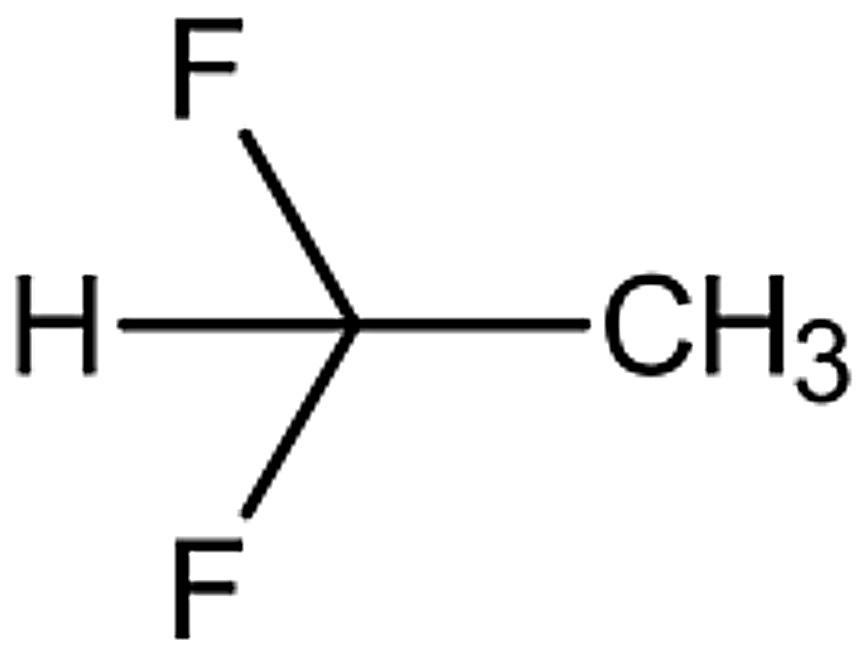
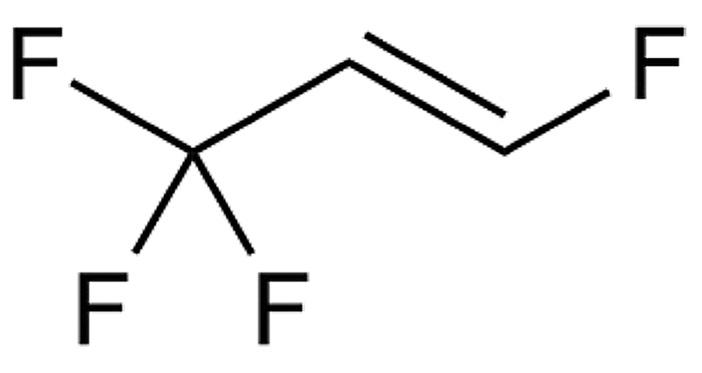
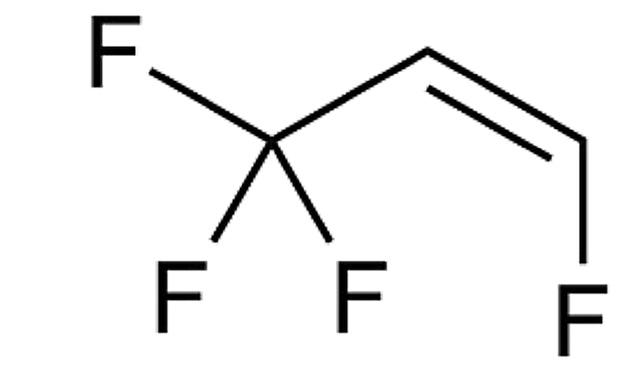
In a recent publication from Faucard et al, three fluorinated low-GWP propellants, HFO-1234ze, HFA-152a and HFA-134a, were compared regarding their leaching behaviour.2 In the study, a typical pMDI valve, consisting of polybutylene terephthalate (PBT), ethylene propylene diene monomer (EPDM) and COC (cyclic olefin copolymer), was exposed to these propellants and tested after intervals of zero, one, three and six months in storage with different analytical screening techniques. The leaching of target compounds was investigated with multiple analytical techniques, such as gas chromatography flame ionisation detection (GC-FID) and liquid chromatography with ultraviolet detection (LC-UV).
“Both the extractable concentration of the individual substance groups and the speed of extraction appear to depend strongly on the structures and physical properties of the gas molecules.”
The PBT dimer and trimer was investigated as a representative compound for a non-volatile leachable. HFA-152a showed the largest increase in leaching of the dimer after six months, and the leaching of the trimer was also higher compared with the other blowing agents, although generally at a much lower level.
As representatives for the semi-volatile leachables, the “antioxidants” and “other semi-volatile leachables” were investigated and reported as individual compoundgroups. Tetrahydrofuran (THF) was chosen as a representative example of a highly volatile leachable. The total concentration of leached species was below the toxicological limits, but there were differences reported in the leaching behaviour between the individual propellants.
Both the extractable concentration of the individual substance groups and the speed of extraction appear to depend strongly on the structures and physical properties of the gas molecules. Looking at the properties in Table 1, the different structure is also associated with differences in the physical characteristics.
HFA-152a shows a higher extractability of the non-volatiles and THF as highly volatile, whereas, for the antioxidants and other semi-volatiles, HFA-152a and HFO1234ze showed a slightly stronger and partially faster extraction behaviour, which
indicates that more parameters than just the volatility of the leachable compounds play a role in the leaching behaviour. Unfortunately, only sum parameters or specific target compounds were investigated in this study, which prevents a correct correlation of the leaching behaviour with different molecular structures of the leachable compounds. There could be an increased selectivity of the new propellants, which would lead to a pronounced leaching of compounds with special structures.
In a pre-study, a rubber material component used as an inhaler valve gasket was analysed by thermodesorption (TDS)-GC/MS. TDS-GC/MS is a powerful technique that is often used for extactables profiling.3 As the thermal desorption approach does not involve a solvent and trapping of compounds, it covers multiple compound classes that could be thermally desorbed, including volatiles and many semi-volatile species.
The trapping of desorbed compounds means that even species with very low concentration can be detected. Table 2 shows a list of the compounds detected and identified in the rubber seal. Many different compounds from various substance classes were detected, such as hexane, a residual solvent; butylated hydroxytoluene, a stabiliser; partially halogenated rubber oligomers, a byproduct of rubber production; and diethyl phthalate, a plasticiser. It is clear that the rubber gasket contains many small molecules of varying structure and polarity, all of which could be selectively leached out by formulations that include the new low-GWP propellants.
“The
As demonstrated in previous systematic studies, the extraction behaviour depends on the physical properties and structures of the new low-GWP propellants.2 Since pMDI systems, especially the valves, are typically composed of many different materials, all with unique additive sets and other low-molecular-weight impurities, there is some risk of leaching of new compounds or higher levels from the traditional materials used in pMDIs when low-GWP propellants are introduced. The unique extraction selectivity of the new fluorinated propellants must be investigated in more detail to understand the differences and to rule out a toxicity issue for dedicated compounds. In the literature published so far, only a few targets or sum parameters have been investigated.2 The next step will be a dedicated generic extractables study that compares the extraction behaviour of traditional propellants (including HFA-227a) with the new low-GWP candidates in more detail. In particular, the effects on a wide range of extractable compounds with different structures and polarities needs to be investigated in order to assess the risk of pronounced leaching for certain compounds and the potential toxicity problem associated with this.
According to United States Pharmacopeia <1663>, the extractables screening of individual construction materials is helpful to assess complex container closure systems, such as pMDI products. Techniques such as TDS are cited as the method of choice to detect a wide range of compounds with little effort, as direct analysis is possible without prior extraction. This material-
unique extraction selectivity of the new fluorinated propellants must be investigated in more detail to understand the differences and to rule out a toxicity issue for dedicated compounds.”
Compound
n-Hexane
Hexanal
1-Bromohexane
2,6-Dimethyloctane
2,2,4,6,6-Pentamethylheptane
2-Octanone
Octanal
Limonene
p-(1-Propenyl)-toluene
Nonanal
1,3,3-Trimethyl-2-(2-methylcyclopropyl)-1-cyclohexene
4a-Methyldecahydro-2H-benzo[a]cyclohepten-2-one
Rubber oligomer with sum formula C13H24
Decanal
1,2-Dibutylcyclopentane
Undecanal
Rubber oligomer with sum formula C14H26
Brominated rubber oligomer
2,6-Di-tert-butyl-4-hydroxy-4-methylcyclohexa-2,5-dien-1-one
Rubber oligomer with sum formula C14H28
2,6-Di-tert-butylbenzoquinone
Rubber oligomer with sum formula C13H23Br
Butylated hydroxytoluene
Diethyl phthalate
Rubber oligomer with sum formula C13H23Br
2-Bromo-4,6-di-tert-butylphenol
3,5-Di-tert-butyl-4-hydroxybenzaldehyde
Rubber oligomer with sum formula C25H48
Rubber oligomer with sum formula C21H39Br
Dibutylphthalate
Rubber oligomer with sum formula C21H39Br
1-Hexadecanol
Bromo-alkane
Rubber oligomer with sum formula C25H48
Table 2: Compounds in a bromobutyl rubber material detected and identified by TDS-GC/MS, sorted according to increasing retention time.
“The
transition to next-generation low-GWP propellants in pMDIs is a crucial step towards reducing the environmental impact of respiratory treatments.”
specific extractables screening study should be important to trace the extractables detected after incubation of the combined pMDI device using quantitative screening techniques to characterise the extract, such as GC-MS and LC-MS, which need to be optimised to capture a wide range of different compounds.
As the extractables content in most plastics is typically very low, even a small variation in the additive, as would be expected in different batches of material, could distort the results, making it difficult to adequately compare the different propellants. For a comparative study on leachables, it will be important to compare the same type of inhaler, ideally from the same batches of material, incubated with the different types of propellants. The pure propellant gas should be used as the incubation medium to exclude variations in the drug formulation. Alternatively, a suitable control sample or blank sample of the formulation should be stored in an inert container under the same conditions and analysed using the same techniques to exclude effects not caused by the inhalation system.
After the quantitative evaluation of the results, the differences in extraction behaviour and extraction selectivity of the new lowGWP propellants, compared with the traditionally used propellants, should be investigated peak by peak to prove whether or not there are major differences for specific compounds, compound classes or whether the extraction behaviour is similar for a wider range of compounds and has a similar selectivity to the old solvents.
After the results of this more substance-specific extractables study are known, a general indication could be given if big differences in extraction behaviour should be expected for the new low-GWP propellants. As a best-case scenario, there may only be a small difference over all classes of extractables and no selective effect in specific plastic ingredients. In such a case, the traditional construction materials could be further used without concern.
The transition to next-generation low-GWP propellants in pMDIs is a crucial step towards reducing the environmental impact of respiratory treatments. With this comes new analytical challenges in ensuring product safety, particularly concerning nitrosamine formation and the presence of leachables. A comprehensive analytical approach is necessary to understand and mitigate these risks. By optimising formulation components and employing advanced analytical techniques, the pharmaceutical industry can successfully reformulate pMDIs with low-GWP propellants while ensuring patient safety and compliance with regulatory standards.
Intertek is a specialist contract OINDP services provider, with GMP labs in Melbourn (UK), Manchester (UK) and Basel (Switzerland). The company’s respiratory Centre of Excellence provides formulation development, performance testing, clinical
manufacturing, impurities testing and extractables and leachables services. Intertek works with all the main inhaled and nasal delivery systems and has experience in both small- and large-molecule modalities. The Intertek team has over 35 years’ experience working in the respiratory space and has served companies all over the world. As an independent product developer, holding no intellectual property, Intertek helps its clients design products
using optimal device and formulation technology from across the industry.
1. Buttini F et al, “Metered dose inhalers in the transition to low GWP propellants: what we know and what is missing to make it happen”. Expert Opin Drug Deliv, 2023, Vol 20(8), pp 1131–1143.



2. Faucard P et al, “Leachables Assessment from a New Generation of pMDIs using Low Global Warming Potential Propellants and the Impact of Ethanol Filling”. Resp Drug Deliv, 2024, Vol 1, pp 194–197.
3. Scherer N, “Leachable and Extractable Studies on Single-Use System Technologies in commercial scale Drug Filling Lines”. Dissertation, LMU München, Aug 2019.
Mark Parry has worked with Intertek for over 20 years since graduating from Cambridge University (UK) and currently works as the Senior Scientific Director, supporting the wide range of analytical, formulation, product development and research activities across the company. Mr Parry has worked in a range of pharmaceutical analysis and formulation development areas, with a particular focus on inhaled and nasal drug products. Mostly working in the pre-approval stages, Mr Parry’s background includes extensive experience with product and formulation development, as well as method development and validation, stability studies and pharmaceutical development activities for a wide range of clients across the pharmaceutical industry. Mr Parry is one of DDL’s Scientific Advisors, a member of the EPAG cascade impactor and nasal working groups, and a member of the JPAG organising committee. He routinely presents at conferences, as well as contributing to articles, research papers and posters on a range of respiratory topics.
John McLaughlin is a Principal Scientist at Intertek Melbourn, where he specialises in LC-MS analysis for the Biologics team. He manages LC-MS work, covering a wide range of samples with expertise in small-molecule impurities in pharmaceuticals and large-molecule proteins and oligonucleotides in inhaled formulation products. His focus is on method development and validation in GxP regulated environments. Mr McLaughlin earned his master’s degree in Chemistry with Medicinal Chemistry from the University of Warwick (UK) in 2018. Prior to joining Intertek, he worked in various research organisations, focusing on bioanalysis of small and large molecules.
Tino Otte, PhD, Managing Director at Intertek Switzerland, is an expert on extractables and leachables studies. He holds a degree in Polymer Chemistry from the University of Halle/Saale (Germany) and a PhD from the Darmstadt Technical University (Germany). Prior to joining Intertek, he worked with different research, development and manufacturing companies where he served in several functions in product management and development of analytical services. He has over 20 years of experience in GMP-regulated environments within multiple areas of product analysis, including method development, validation and quality control.





In this article, Clair Brooks, PhD, Applications Specialist at Copley Scientific, examines the parameters used to quantify and compare the aerodynamic particle size distribution metrics of orally inhaled drug products and methods for calculation, including those laid out in the new USP <1604>, with reference to both “standard” and efficient data analysis metrics to elucidate current debate and establish sufficient understanding for the effective day-to-day application of these methods.
Although the aerodynamic particle size distribution (APSD) metrics measured by cascade impaction are critical quality attributes for all orally inhaled drug products (OIPs), the data analysis methods used to produce them typically attract little attention. Except when, as is the case right now, change is in the air. The release of a new US Pharmacopeia (USP) general chapter on the presentation of APSD data – USP <1604> –has implications for how these vital metrics are calculated and is triggering debate within the inhalation community.
FROM MEASUREMENTS TO METRICS: MANIPULATING FULL RESOLUTION
CASCADE IMPACTOR DATA

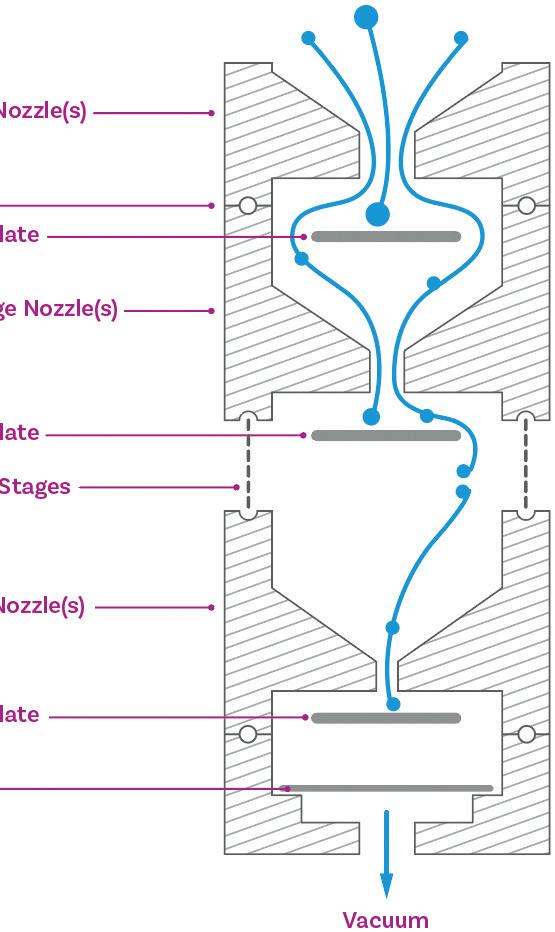
Multi-stage cascade impactors size fractionate an incoming OIP dose on the basis of particle inertia (Figure 1). Subsequent drug recovery from each part of the impactor set-up – OIP mouthpiece, induction port and adapter, pre-separator (if present), each stage of the impactor and the micro-orifice collector or filter (Figure 2) – produces a series of solutions that are then subject to assay, typically by
Figure 1: Cascade impaction size fractionates an incoming dose on the basis of particle inertia, producing a series of samples that are subject to assay to determine APSD metrics for the API.
high-performance liquid chromatography. The resulting raw data quantify distribution of the API through the cascade impactor set-up at a defined test flow rate and are the starting point for cascade impactor data analysis.

Dr Clair Brooks Applications Specialist
Copley Scientific Ltd Colwick Quays Business Park Colwick Nottingham NG4 2JY
United Kingdom
T: +44 1159 616229
E: sales@copleyscientific.co.uk
www.copleyscientific.co.uk

Mass Median Aerodynamic Diameter and Geometric Standard Deviation
Mass median aerodynamic diameter (MMAD) – the aerodynamic diameter below which 50% of the population lies – by mass, is one of the most widely reported APSD metrics. It identifies the centre point of the APSD and, for products that exhibit a log-normal distribution, is often reported along with the geometric standard deviation (GSD), a complementary metric that indicates spread or breadth. Targeting an MMAD in the region of 2–3 µm in combination with a low GSD is a widely deployed strategy for maximising delivery to the lung with coarser particles, and to a lesser extent fines, both less well suited to efficient drug delivery.
A first step is to confirm the validity of the measurement by carrying out a mass balance test. This involves comparing the total mass of drug recovered from all components on a per actuation basis, with the expectation in USP <601> being that collected mass should lie within 85–115% of the label claim.
The next step is to process the data to meet its optimal intended purpose, which, in basic terms, is relevant comparison with a target or specification. In R&D, APSD measurements support progress towards the consistent delivery of particles that are optimally sized for deposition in specific areas of the respiratory system, with 5 µm taken as the upper limit for deposition in the lung. At this stage, comparison is therefore typically to answer questions such as “Does device A successfully aerosolise more of the dose than device B?”
or “Does the inclusion of more co-solvent enhance dispersion?” In quality control (QC) on the other hand, the comparison is with an established product specification to reliably confirm parity.
Both applications are best served by metrics that combine sensitivity and relevance. One approach to data analysis would be to simply overlay measured and reference APSDs. This can be a helpful exercise, as it certainly identifies differences, but not in a way that is necessarily easy to interpret with respect to likely drug delivery performance or that facilitates straightforward comparison and reporting. Alternatively, the singlenumber metrics that have been established quantify relative performance, rather than simply detecting difference, and therefore boost the informational output of analysis.
Determining a value for MMAD involves, in the first instance, producing a curve of cumulative sized mass, sequentially summing the masses collected on each stage of the impactor and plotting the results against a stage cut-off diameter (Figure 3). Using a linear axis for the cut-off diameter (Figure 3 – left) highlights the non-linear spacing of stage cut-off diameters in a multi-stage cascade impactor.
Both the Andersen cascade impactor (ACI) and next-generation impactor (NGI) beneficially have a concentration of stages – typically at least five – in the size range of interest for inhaled drug delivery (Figure 4) to boost resolution in this critical area. However, this can make a linear plot sub-optimal for accurate interpolation. The logarithmic x-axis of the log-probit plot (Figure 3 – right) addresses this issue, resulting in a linear graph with more equal data point spacing. Using the probit scale for the y-axis is a further potential simplification, with Probit 4 equating to a cumulative percentage of 15.8%, Probit 5 to 50% and Probit 6 to 84.1% (from standard statistical manipulations).

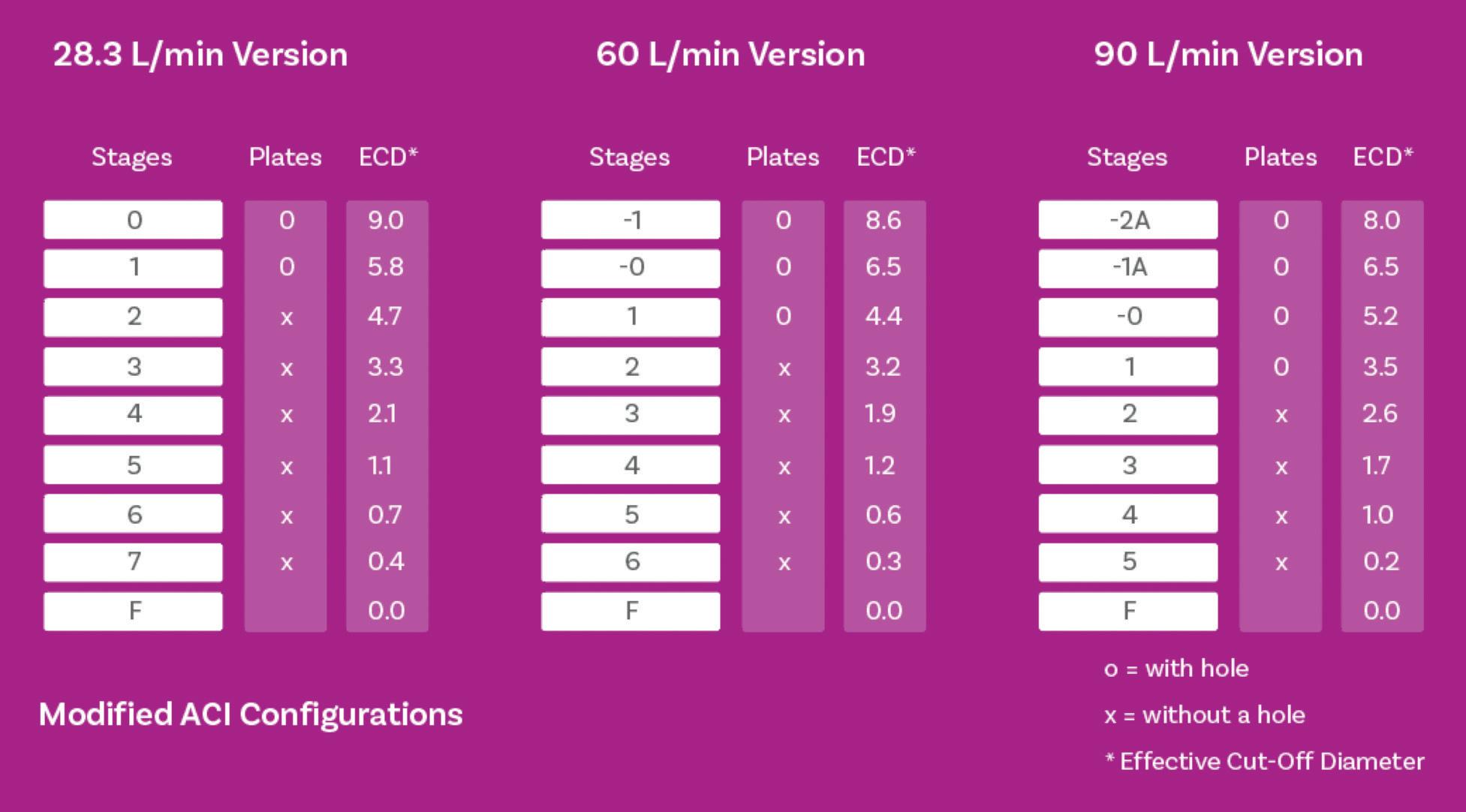
Methods for determining MMAD from either plot include performing a linear regression over the whole data set, sigmoid curve fitting using a model such as Mercer-Morgan-Flodin or ChapmanRichards, or simple linear interpolation. A full exploration of the relative merits of these methods lies beyond the scope of this article, but published studies highlight some valuable conclusions relating to method choice:1,2
• The application of linear regression across the whole data set is underpinned by an assumption of a log-normal distribution in the mass-weighted raw data that does not hold for many OIPs; predicting those it does hold for is challenging.
• Linear regression gives equal weighting to each collected mass, which may be far from ideal given the relatively small masses associated with stages at the extremes of the APSD.
• An incorrect assumption of log-normality produces substantially different answers from the listed curve-fitting and linear interpolation methods.
• Curve-fitting and linear interpolation methods show close agreement for all formulations, whether they exhibit a log-normal distribution or not.
• These conclusions help to justify the widespread use of interpolation, which has the additional advantage of being mathematically straightforward.
An important limitation of MMAD, even in combination with GSD, is that it does not quantify the fraction of the dose that lies in the size range of interest or the success of dose dispersion to a respirable size relative to the delivered dose. Products with a closely similar MMAD and GSD could therefore exhibit clinically significant differences with respect to dose delivery to the lung. Cascade impactor data
“By quantifying mass, these metrics bring complementary orthogonality to MMAD enabling more robust sample differentiation.”
capture two independent characteristics of the delivered dose: size and mass. Differentiating samples with respect to either characteristic calls for metrics that reliably quantify each or both.
Therefore, additional metrics are used, such as fine particle dose (FPD) – the mass of drug in the sub-5 µm fraction of the dose – and its complement, fine particle fraction (FPF), the FPD expressed as a fraction of the delivered dose. By quantifying mass, these metrics bring complementary orthogonality to MMAD enabling more robust sample differentiation. They can also help to distinguish between, for example, issues associated with device emptying as opposed to dispersion to a significantly fine particle size. Both FPD and FPF are used routinely to define acceptance criteria for QC, often complemented by individual mass per stage or additional grouped stage specifications to provide the necessary insights.
Ongoing debate around the most efficient way of applying APSD data has, over the years, led to the introduction of additional metrics, with the aim of ensuring robust assessment within the constraint of minimising the analytical and data-handling burden associated with the routine use of full-resolution cascade impaction.3 This leads the discussion to efficient data analysis (EDA) and the associated abbreviated impactor measurement (AIM) concept.
Figure 5 defines a range of alternative APSD metrics, along with AIM configurations associated with their measurement.4 In R&D, where the primary focus is to maximise the respirable dose, it can be argued that it is simply the mass of drug above and below the 5 µm cut-off that is of defining interest. Therefore, in many instances, it is possible to measure only fine particle mass (FPM) – which is equivalent to FPD – and coarse particle

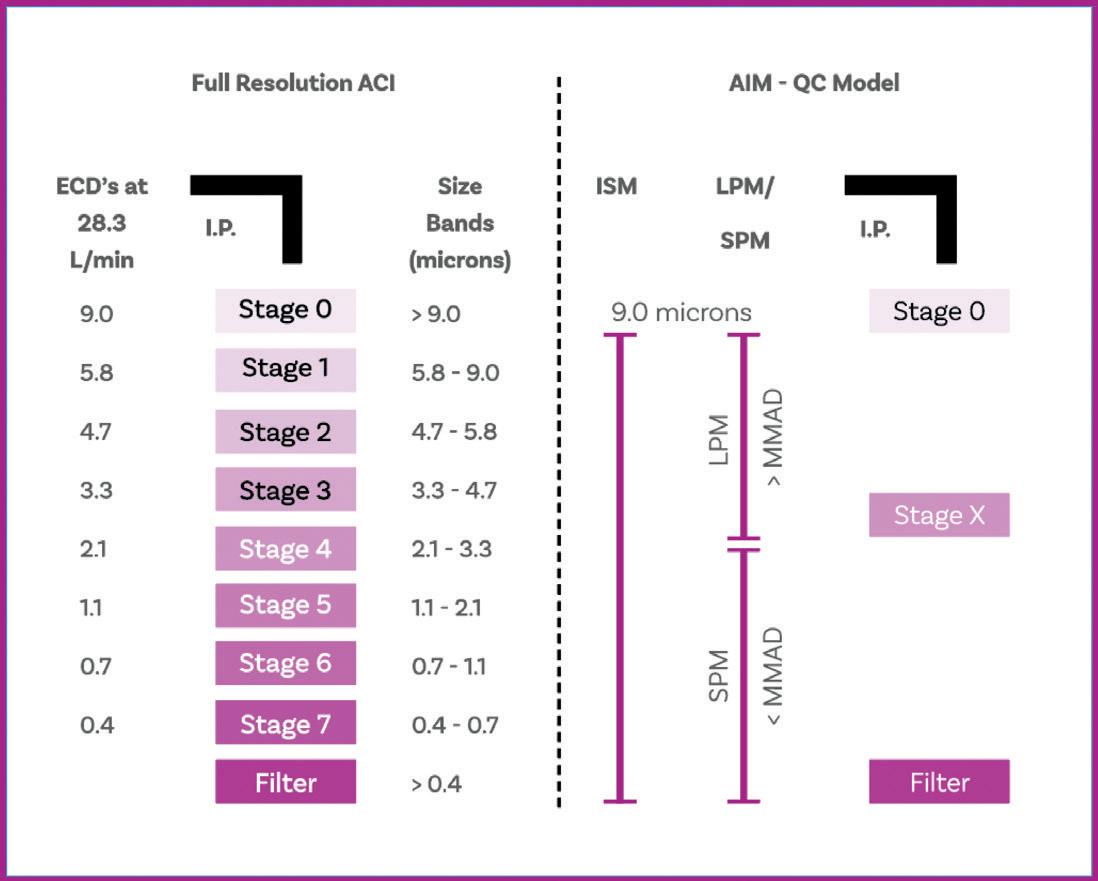
of
and relevant sample
with producing these metrics.
mass (CPM). An additional fraction, the extra fine particle mass (EPM), which is the <1 µm dose, may also be of interest, given the potential risk of exhalation. An AIM apparatus with one or two stages and a 5 and 1 µm stage cut-off, is sufficient to deliver these metrics, the alternative being to appropriately group full-resolution data.
Turning to QC, here the aim is to capture difference in the APSD, in mass and/or size, with high sensitivity. Research has shown that an effective way to do this is by measuring small particle mass (SPM) and large particle mass (LPM), with the cut-off between the two fractions set to within 0.3 and 3 times the MMAD.5 The ratio of
SPM to LPM has proven extremely sensitive to changes in MMAD, while summing SPM and LPM produces the impactor-sized mass (ISM), a complementary indicator of changes in respirable mass. Again, ISM, SPM and LPM can either be determined using AIM apparatus, with a single stage with an optimally specified cut-off diameter, or from full-resolution cascade impactor measurements.
A key point to notice about these two sets of parameters is that they differ with respect to the total mass considered, which is an important distinction. Summing FPM and CPM gives the total emitted mass exiting the OIP. In contrast,
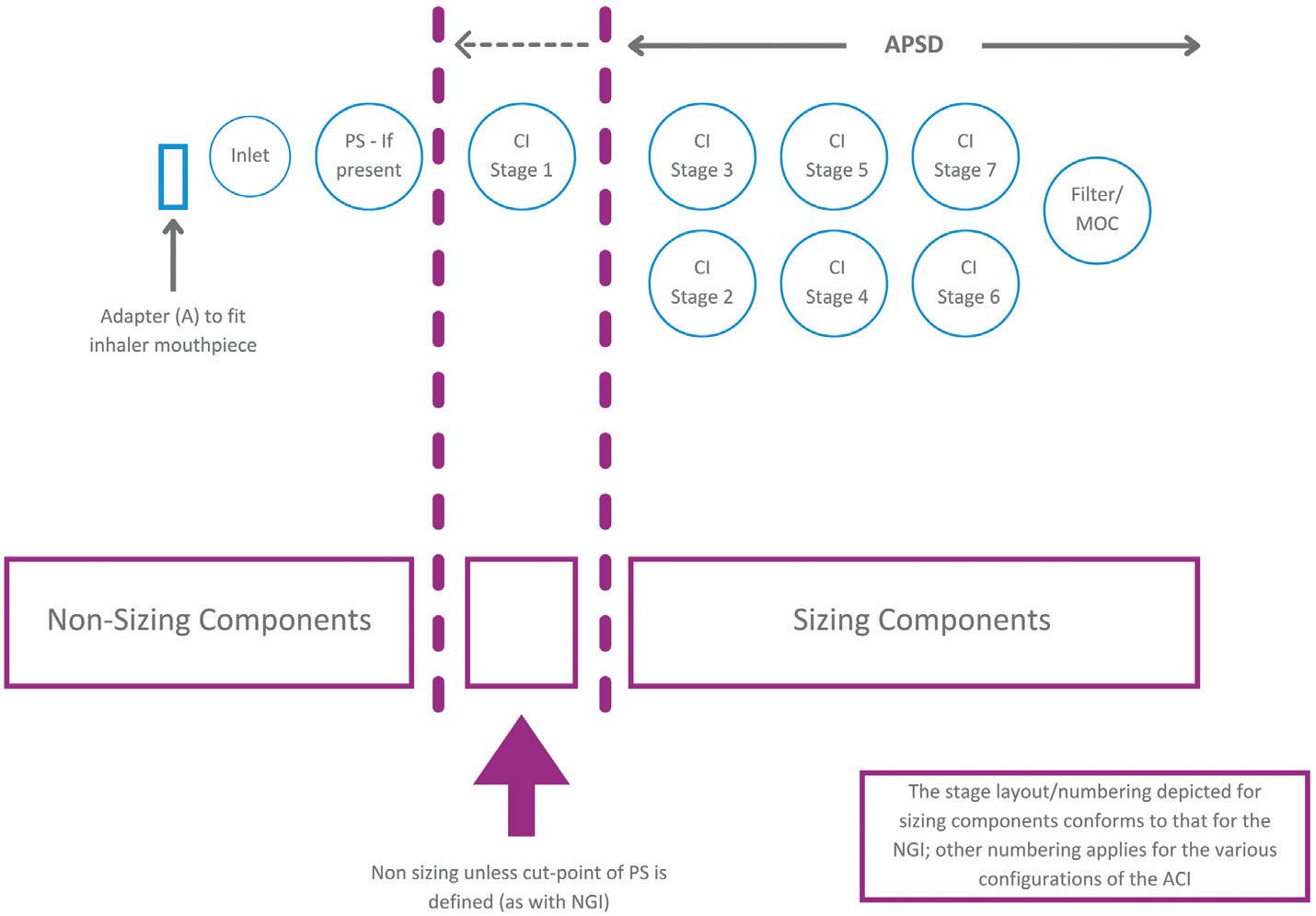
ISM is just what it says: the mass sized by the impactor alone, excluding deposits in the non-sizing components of the set-up. With the ACI, and in the absence of an NGI’s pre-separator, this includes the first stage of the impactor, since it has no upper size limit and is therefore essentially non-sizing. The NGI pre-separator has calibrated performance and therefore imposes an upper size limit on the first stage of the NGI, when in use (Figure 6).
The instruction in USP <601> is that “only data from analysis of deposition on the collection plates should be used for the purpose of determination of stage deposition”. For historical reasons and in the absence of further detail in more recent versions of USP <601>, this has led, in some instances, to the inclusion of deposition data from the first stage, whether a pre-separator is present or not. In other words, MMAD is not consistently calculated on the basis of ISM. This is an important point to bear in mind with discussions of USP <1604>.
USP <1604> became official in December 2023 following extensive consultation and revision. It presents two approaches for cascade impactor data evaluation and two “optional uses for APSD data, which are developmental in nature”. Under the first heading lie methods for the representation of the deposition profile (DP) for the entire delivered mass and assessment of the DP via stage groupings. The optional methods
focus on the portion of that data associated with sizing components, including MMAD; in this regard the new guidance is aligned with USP <601>.
Methods for the presentation of a DP and for comparing stage groupings use data from both sizing and non-sizing components, making them consistent with the approaches for establishing CPM, FPM and EPM discussed earlier. However, it is also possible to interpret the guidance as indicating that the “cumulative deposition profile” (CDP), which incorporates data from sizing components alone, should be used for all APSD metrics – CDP, FPD and EPD, as well as MMAD. The observation that, when calculating sized fractions, “the normalising factor can either be labelled delivered dose (or target delivered dose) by the cascade impactor or ISM, depending on purpose” underlines this ambiguity; the introduction and use of the term “sized distribution profile” has also proven a further complicating factor.
For the determination of the CDP, and by extension the MMAD, USP <1604> clearly classifies the first stage of the impactor as a non-sizing component, except for the NGI in the presence of a pre-separator. This new guidance has therefore caused some to question the methods established with reference to USP <601> that, by including deposition data from the first stage, return different values of MMAD. Expert industry groups, such as the International Pharmaceutical Aerosol Consortium on Regulation and Science (IPAC-RS), have recognised this issue, which feeds into their ongoing work to raise awareness of the metrics used to characterise OIPs and the associated calculation methods.3,4 A group within IPAC-RS is now focusing specifically on the implications of USP <1604> and how best to help researchers navigate the new guidance.
USP <1604> goes on to include useful detail on how to determine CDPs based on the ISM for different cascade impactor configurations operating at specific flow rates. It also offers helpful elucidation on alternatives to the USP growth curve
“A lack of clarity in certain areas could overshadow these valuable additions to the information
available to inform cascade impactor data analysis.”
method (linear regression over the whole data set) for the many OIPs that do not exhibit a log-normal distribution. However, a lack of clarity in certain areas could overshadow these valuable additions to the information available to inform cascade impactor data analysis. USP <1604> is therefore currently stimulating debate around cascade impactor data analysis rather than bringing it to consensus.
Copley Scientific is recognised as the leading manufacturer of inhaled drug test equipment. Products include delivered dose-sampling apparatus, Andersen and next-generation impactors, critical flow controllers, pumps, flow meters and inhaler testing data analysis software. Copley Scientific also supplies novel systems for improving productivity and in vitro-in vivo correlations, including automation ancillaries, abbreviated impactors, breath simulators and the Alberta Idealised Throats and Nasal Inlet. Training, calibration, maintenance and impactor stage mensuration services are also available. Founded in 1946 in Nottingham, UK, Copley Scientific remains family owned and
managed. The company continues to work closely with industry groups and leading experts to bring relevant new products to market, with all equipment backed by expert training and lifetime support.
1. Christopher JD et al, “Generalized simplified approaches for mass median aerodynamic determination”. Pharm Forum, 2010, Vol 36(3), pp 812–823.
2. Mitchell JP et al, “Proposals for data interpretation in the context of determination of aerodynamic particle size distribution profile for orally inhaled products”. Pharm Forum, 2017, Vol 43(3), pp 637–645.
3. Doub WH et al, “Efficient data analysis (EDA): Size, mass and common sense” Inhalation, Aug 2021.
4. Mitchell JP, Nagel MW, Copley M, “The abbreviated impactor measurement concept”. Inhalation, Jun 2009.
5. Tougas TP et al, “Improved quality control metrics for cascade impaction measurements of orally inhaled drug products (OIPs)”. AAPS PharmSciTech, 2009, Vol 10(4), pp 1276–1285.
Clair Brooks, PhD, is an Applications Specialist for Copley Scientific. Providing in-depth application support to those working with OINDPs and other pharmaceutical dosage forms, including tablets and capsules, Dr Brooks helps scientists to ensure regulatory compliance during R&D and quality control assessments. As an accomplished life sciences professional with extensive experience supporting the start-up and operation of heavily regulated testing labs across both industry and academia, Dr Brooks offers guidance on how best to apply Copley products and services to support pharmaceutical development and manufacture to help maximise return on investment. She also leads Copley's comprehensive user-training programme, run on-site and at Copley HQ.


Go from data to discovery in 3 easy steps
Prepare > Execute > Analyse
Meaningful metrics, instantly

Discover the latest updates. Click below to request a
Wide range of APSD metrics reported including ISM, FPD, MMAD, GSD and LPM/SPM ratio
Your data, your way
Tailored equipment configurations, methods and reports
Security and compliance at the core
21 CFR Part 11, Ph. Eur., and USP compliant
In this article, Nick Smalley, Vice-President, Regulatory Affairs, at Kindeva, discusses the balancing act involved in meeting patients’ therapeutic needs while protecting the planet when it comes to pMDI development.
This article was originally published as a blog on Kindeva’s website.
Environmentally friendly inhalers have been a topic of discussion for some time. However, the spotlight is on them now more than ever, thanks in part to the proposed phase-down of per- and polyfluoroalkyl substances (PFASs). PFASs are a class of substances comprised of thousands of synthetic chemicals that resist degradation because of their exceptionally strong chemical bonds, making them “forever” chemicals that may have an impact on human health and the environment. Due to their usefulness and consequent ubiquity, any regulatory shifts regarding their usage have the potential to impact a massive range of products across nearly every industry.
The European Chemicals Agency (ECHA) published a PFAS restriction proposal including about 10,00 substances on February 7, 2023.1 The proposal is currently under review by its scientific committees, with a goal of submitting final opinions as expeditiously as possible.
This PFAS restriction proposal adds to concurrent legislation centred around reducing the use of fluorinated gases (F-gases). While the new regulations are aimed at curbing large-scale emissions from refrigeration and industrial usage, they would phase out compounds currently employed as propellants in many inhalers. These proposals have already accelerated shifts within the pharmaceutical sector,
where consequences will be felt throughout the drug-device development pathway, including in manufacturing processes and supply chain reliability.
Having been a leader in the move from chlorofluorocarbon (CFC) to hydrofluoroalkane (HFA) propellants in the 1990s with the first CFC-free pressurised metered-dose inhaler (pMDI), Kindeva fully understands the challenges that arise from these kinds of transitions. This experience has also cemented within the organisation the importance of formulating and
“While
the transition to a more carbon-neutral and sustainable industry is important, only by thoroughly evaluating the implications for patients, the broader picture of environmental waste and the full scope of available options can that goal be satisfied.”

Nick Smalley
Vice-President, Regulatory Affairs
T: +44 7368 504310
E: nick.smalley@kindevadd.com
Kindeva Drug Delivery Building 39, Charnwood Campus Bakewell Road Loughborough LE11 5RB
United Kingdom
www.kindevadd.com
developing solutions all potential propellants as part of a proactive plan – something that should be incorporated into every MDI company’s long-term strategy.
Some contemporary arguments offer a binary approach to the path ahead for inhalers, suggesting that switching to dry powder inhalers (DPIs) instead of pMDIs is the only answer – but the decision is more nuanced than that. While the transition to a more carbon-neutral and sustainable industry is important, only by thoroughly evaluating the implications for patients, the broader picture of environmental waste and the full scope of available options can that goal be satisfied.
As with every transition in the pharma industry, the welfare of patients is paramount. As such, although guidelines may shift to favour DPIs, it is vital that the appropriate path forward for each set of products respects the totality of patient needs. This includes the availability of products that are safe, effective and usable, as well as the maintenance of a healthy environment.
For example, some individuals are unable to generate adequate inspiratory flow to operate a DPI, immediately dispelling the idea that there is a single, one-sizefits-all solution that can satisfy the needs of both patients and the planet. Beyond this unambiguous instance, a tapestry of questions centred on patient welfare must also be addressed, including whether the patient is able to learn to use a new device correctly and whether the change would otherwise negatively impact adherence. The pharma industry exists to improve the lives of those in need, so these decisions must always be made on the basis of what is best for the overall health of the patient.
The pharmaceutical industry’s understanding of the industry’s environmental effects must constantly expand, and improvement must be ongoing. While the development of green propellants is an important factor, the evaluation must incorporate the damage caused by chemical components alongside that caused by all other factors, including component materials and recyclability. For example, while much of the current focus is on propellants used in pMDIs, an evaluation
“Some individuals are unable to generate adequate inspiratory flow to operate a DPI, immediately dispelling the idea that there is a single, one-size-fits-all solution that can satisfy the needs of both patients and the planet.”
of the depletion of fossil resources by the University of Manchester (UK) found DPIs to have the most damaging impact.2 Taking a wider viewpoint helps provide a more complete understanding of problem areas, from creation to use and disposal, allowing a full accounting of the carbon footprint for each therapy. To provide effective medicines that do as little harm to the planet as possible, it is imperative to move away from siloed thinking and towards holistic solutions.
To realise a future that satisfies patient needs while also meeting those of the planet and general human health, innovation must be realised across the gamut of effective therapies and devices. Notable exceptions aside, discovery often happens when people are searching. If lines of treatment are abandoned entirely, there is a grave risk of losing consequential innovations –if not in the therapy or device itself, then in an undiscovered manufacturing method or shipping advancement.
Every avenue of improvement begets more opportunities for something transformational to be uncovered. In the current environment for pMDIs, this means investing in the continuous research and development of green propellants, such as HFC-152a (which is a good, but not universal, alternative), for commercial use, as well as HFO-1234ze, which could be restricted through PFAS regulations despite having a 99.9% lower global warming potential (GWP) than HFA-134a – the greenest option in use today.
This ongoing exploration of solutions represents one of the things the industry as a whole does best – find new ways forward in the face of emerging difficulties. Even with the unexpected hurdles common to drug and device development, it can be easy to forget that ideal solutions rarely continue their run with that title intact. As with the transition from CFCs to HFAs decades ago, when the industry is made to grapple with new
challenges, novel optimal solutions are needed. Ongoing development across multiple therapies, products and delivery methods is necessary to ensure that patients have an acceptable alternative whenever a newly discovered adjustment needs to be made to an existing therapy.
With all of this in mind, what can be done to prepare a combination drug-device product to optimally serve the holistic needs of patients and the planet?
• Stay up to speed on current regulations and what is coming down the pipeline and, guided by developing trends, create an informed strategy that anticipates future issues
• Know the full footprint of a product; identifying all the ways that processes can be optimised can provide a head start when new regulations arise
• Choose an experienced partner with a demonstrated history of adaptability and innovation; between their institutional knowledge and hands-on know-how, the right contract development and manufacturing organisation (CDMO) can help quickly identify the best path forward
• Find the right capabilities for switching faster than the competition, which means making sure to explore how far along a CDMO is in upgrading to green propellants; additionally, look for a partner that can provide manufacturing services with a variety of propellants, so that a project is covered no matter what legislation comes next.
As the ECHA, the European Commission and the entire drug delivery industry take a long hard look at what propellants and materials are safe for the planet, it can be easy to miss the larger picture and even lose patients in the conversation altogether. Given that inhalers and similar medical devices exist specifically to assist them, it is vital that patients are central to the conversation. Meeting their therapeutic
needs while protecting the planet as a whole, however, requires a wide-lens view.
The most ideal therapy for a patient is one that is safe, effective, affordable and promotes easy adherence – at times, that will not be the greenest therapy. However, it could likely be greener.
Evaluating the full footprint of every therapy allows the industry to truly address its environmental impact and meet every patient’s needs with more environmentally
sound treatments. This big-picture approach puts patients at the forefront while proactively moving the industry on the path to a more sustainable future. To continually improve therapies while safeguarding the array of options that best meet tailored patient treatment plans, the search for greener solutions must be developed with the holistic well-being of patients, now and in the future, at the forefront.
Nick Smalley, Vice-President, Regulatory Affairs, has more than 25 years’ experience in pharmaceuticals and contract manufacturing and now leads Kindeva’s advanced drug delivery regulatory affairs function. After starting his career in inhalation research and development working on both pMDIs and DPIs, Mr Smalley moved into regulatory affairs in 1999 and has worked globally across multiple different product areas, including complex generics, biologics, consumer healthcare, medical devices and ethical pharmaceuticals. He is also the Vice-Chair of the board of directors of the International Pharmaceutical Aerosol Consortium, a coalition of eight multinational pharmaceutical companies that strives to ensure global environmental policies that are relevant to inhaled therapies are patient-centric and appropriately balance patient care and sustainability efforts. Mr Smalley hasa BSc in Chemistry from Loughborough University (UK).
Kindeva Drug Delivery is a global CDMO focused on drug-device combination products. The company develops and manufactures products across a broad range of drug-delivery formats, including pulmonary and nasal, injectable and transdermal. Its service offerings span early-stage feasibility through to commercial-scale drug product fill-finish, container closure system manufacturing and drug-device product assembly. Kindeva serves a global client base from its state-of-the-art manufacturing, research and development facilities located across the US and UK.
1. “ECHA publishes PFAS restriction proposal”. Press Release, ECHA, Feb 7, 2023.
2. Jeswani HK, Azapagic A, “Life cycle environmental impacts of inhalers”. J Clean Prod, 2019, Vol 237, article 117733.


